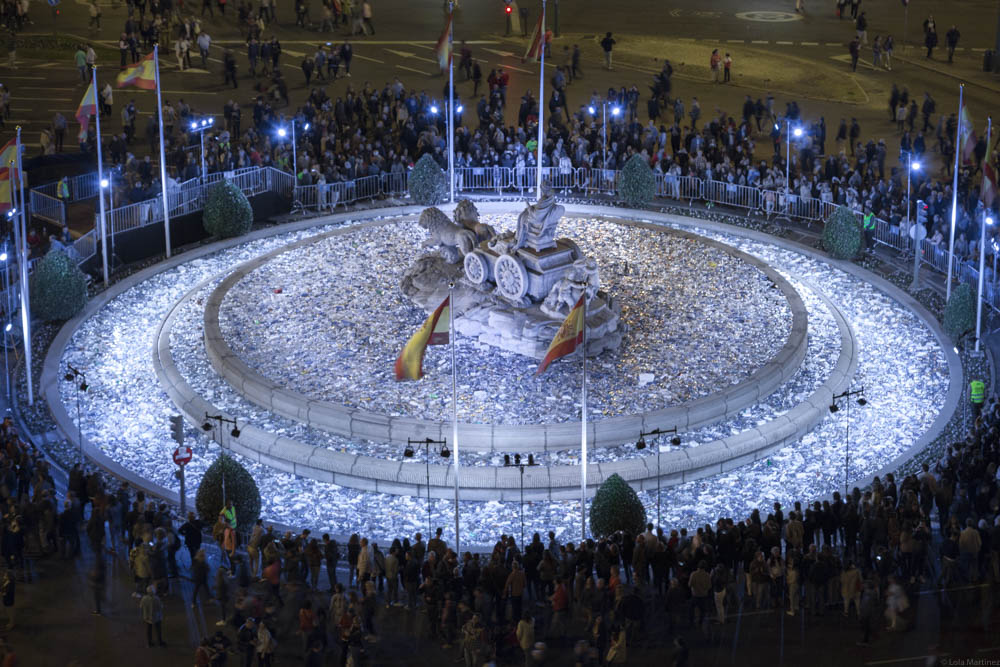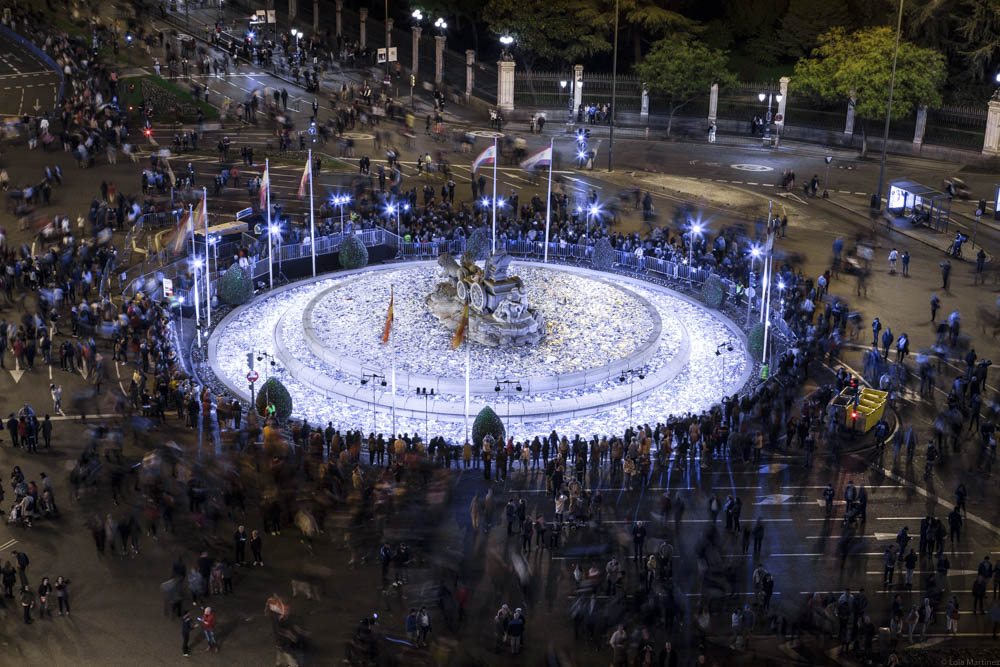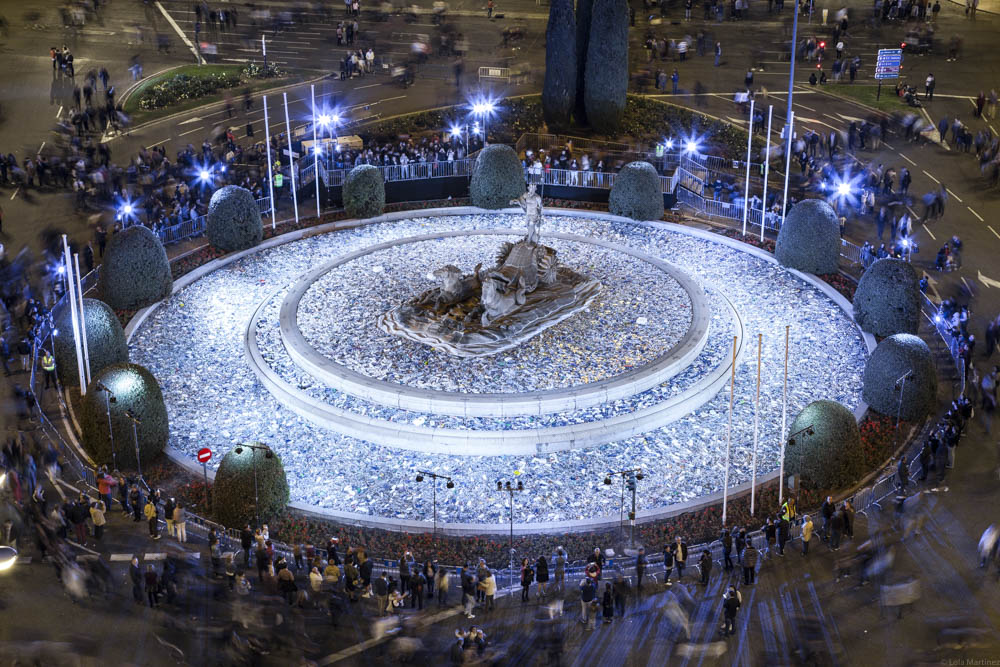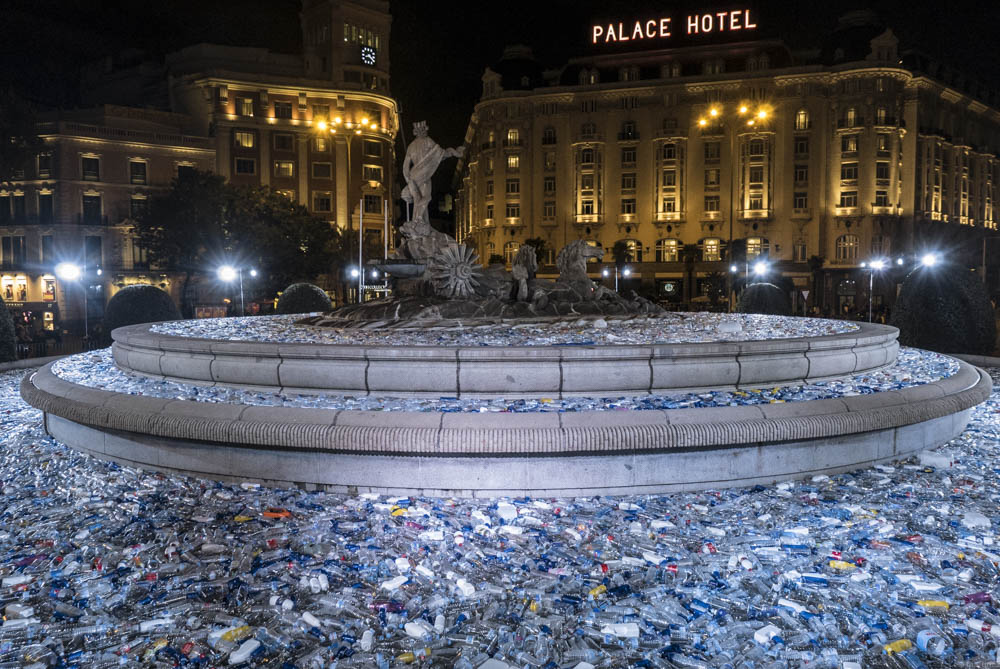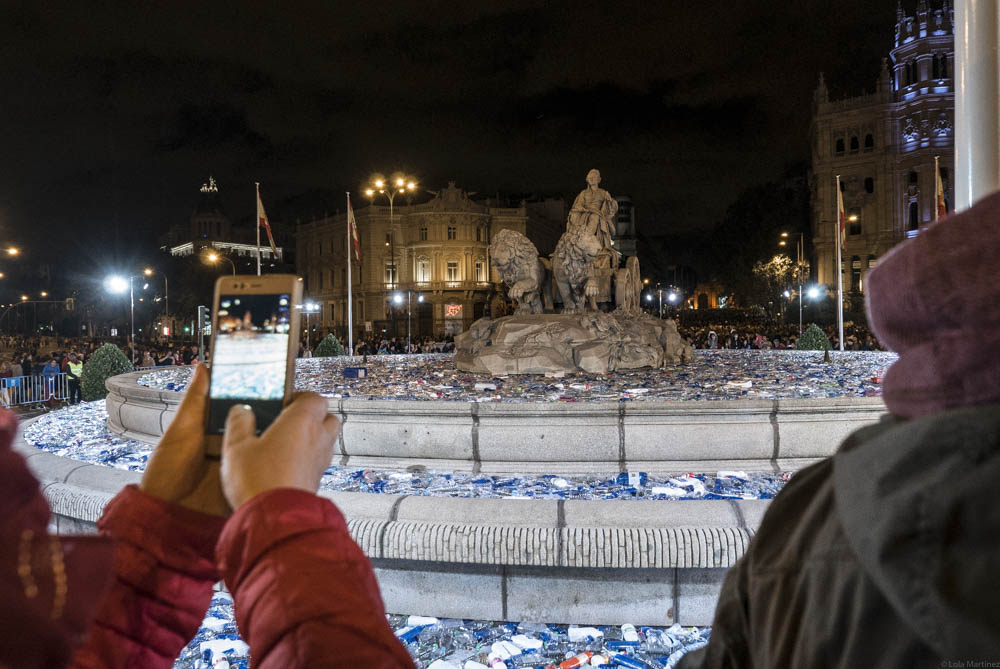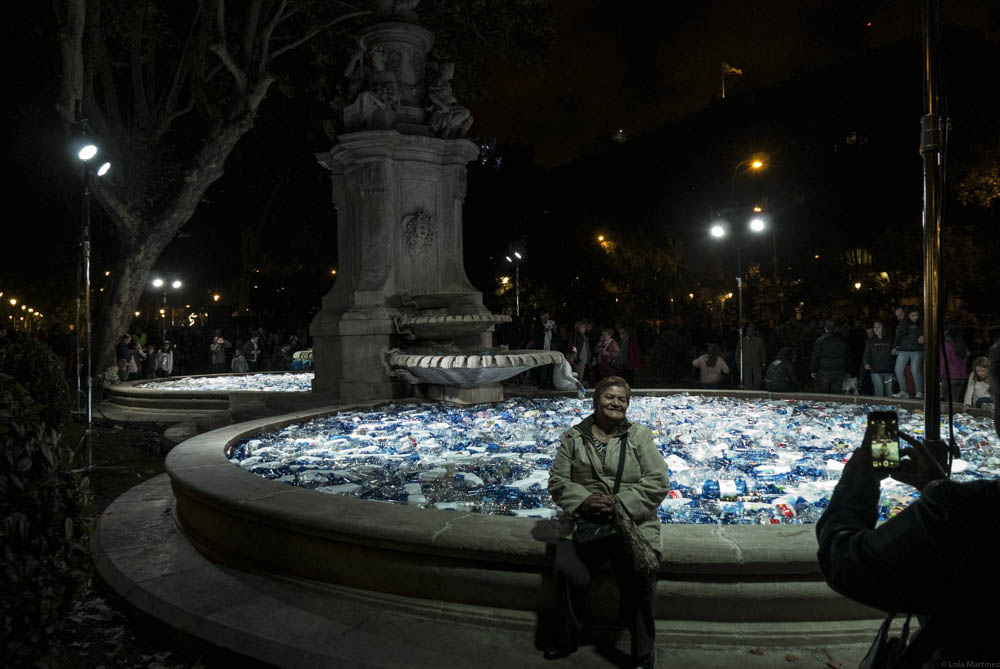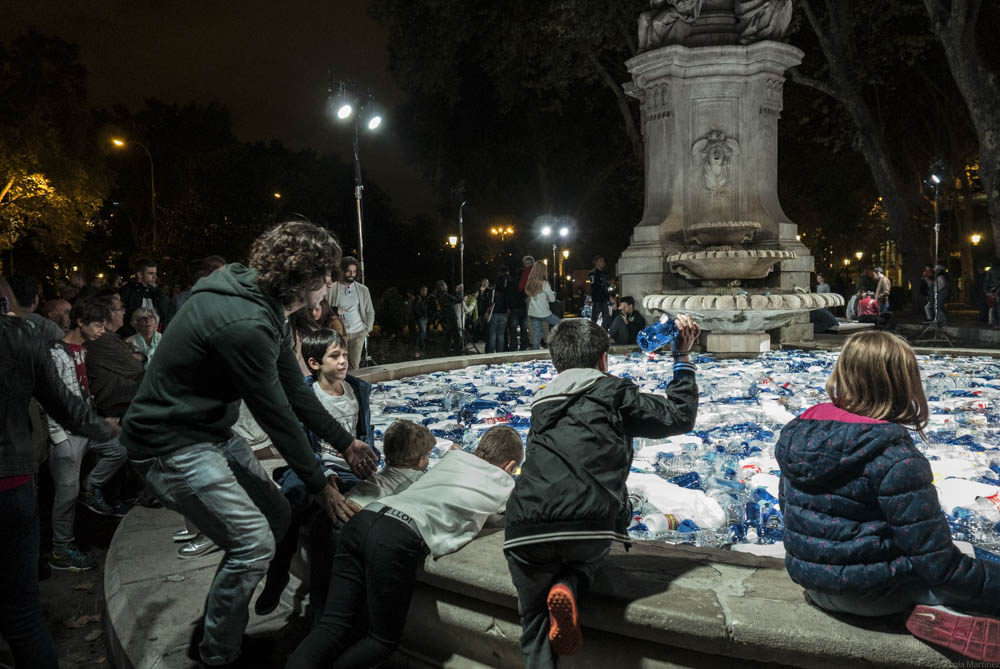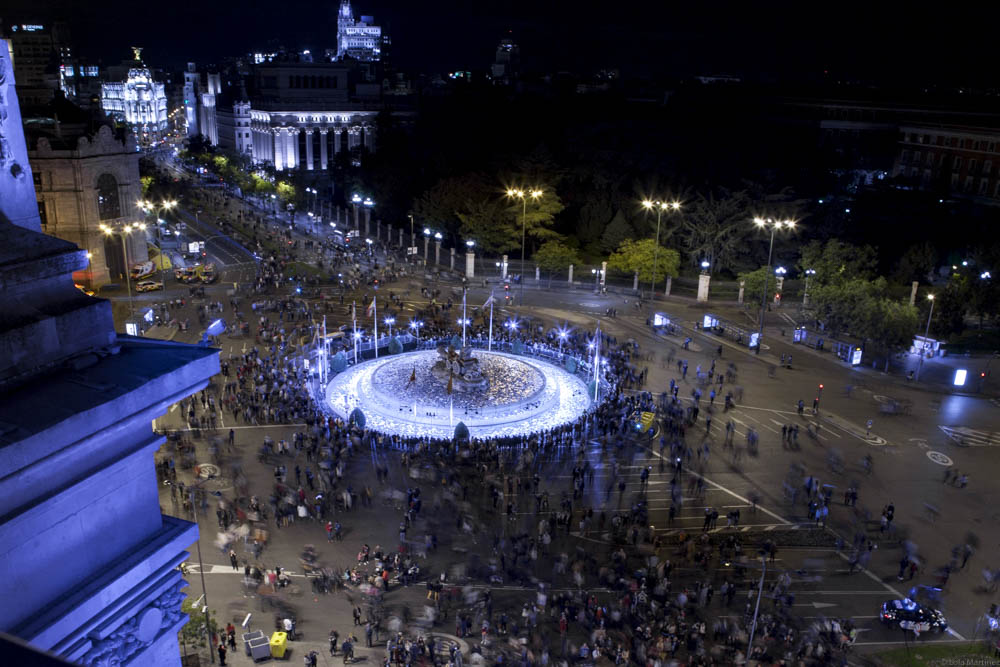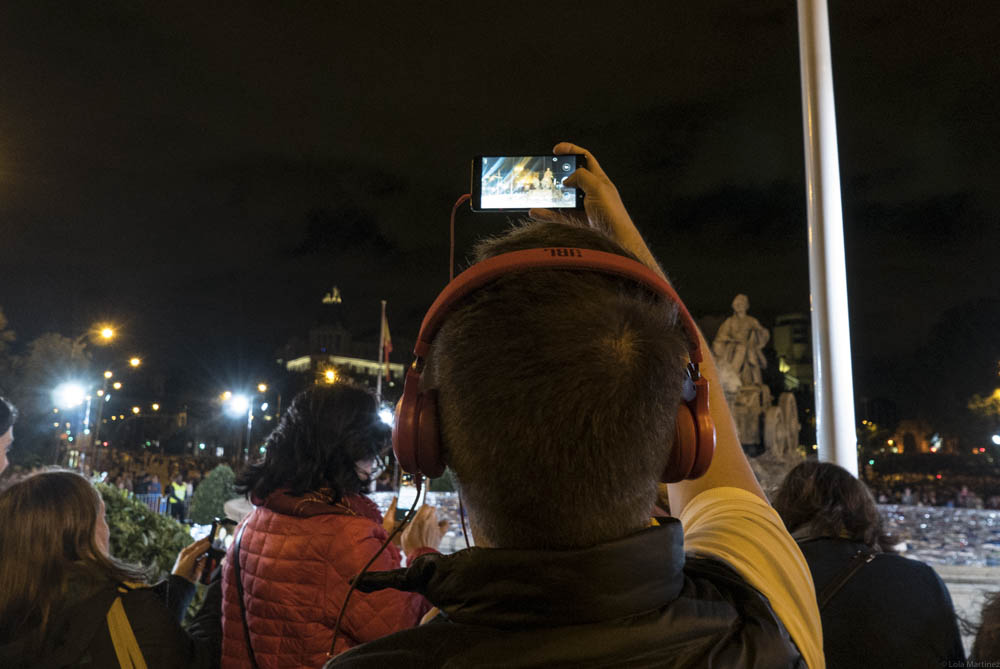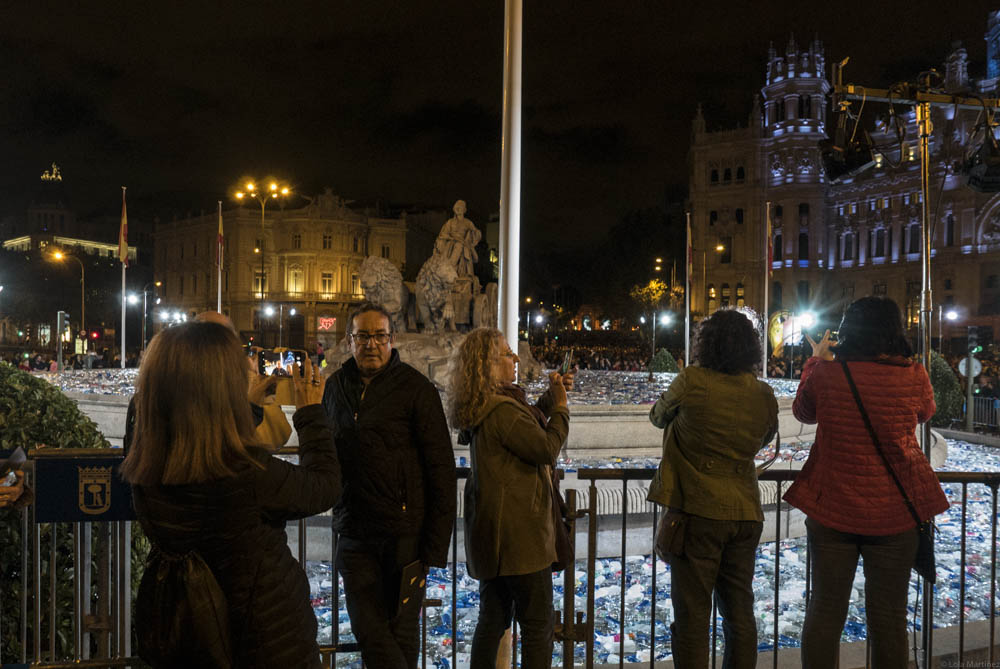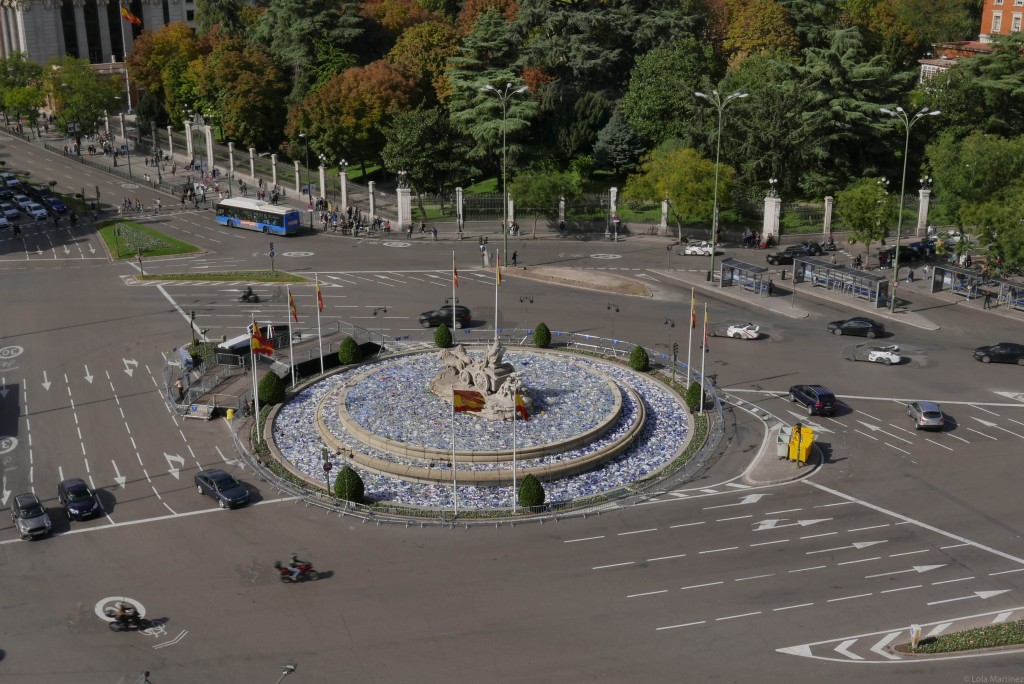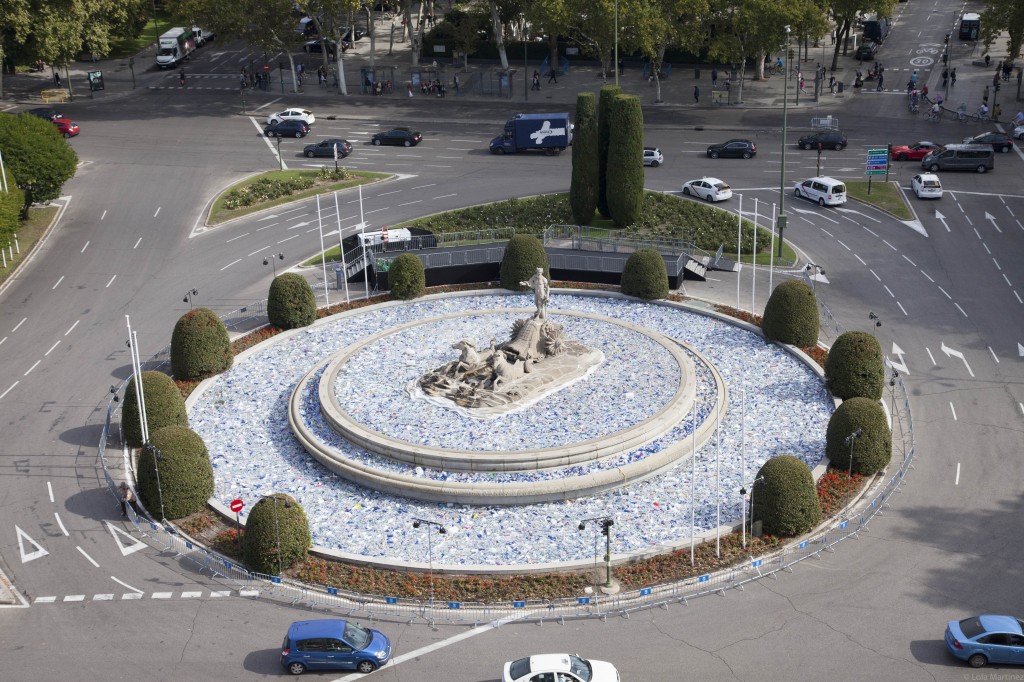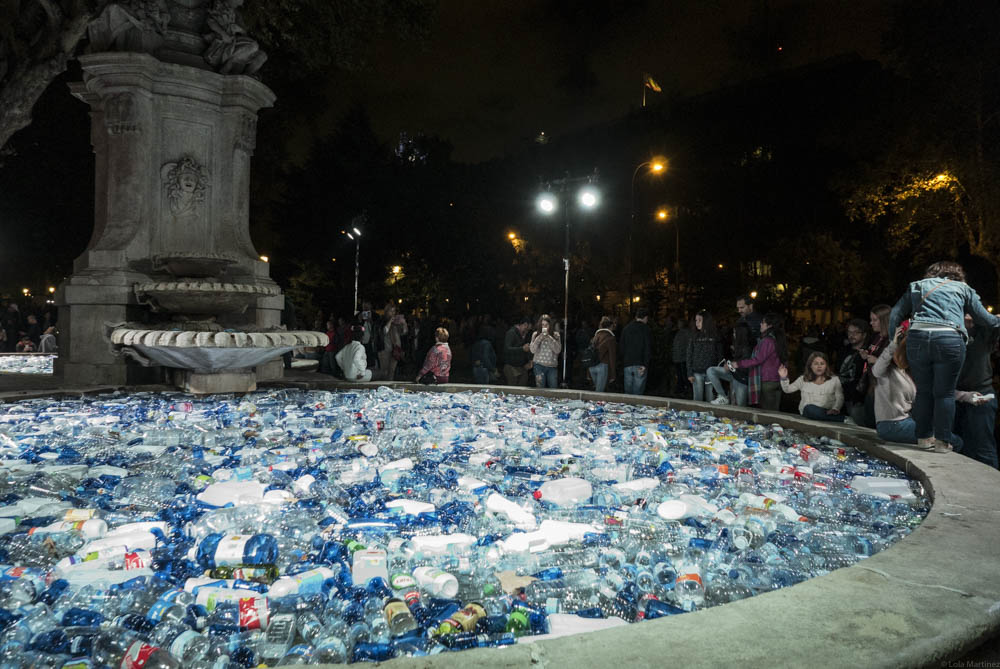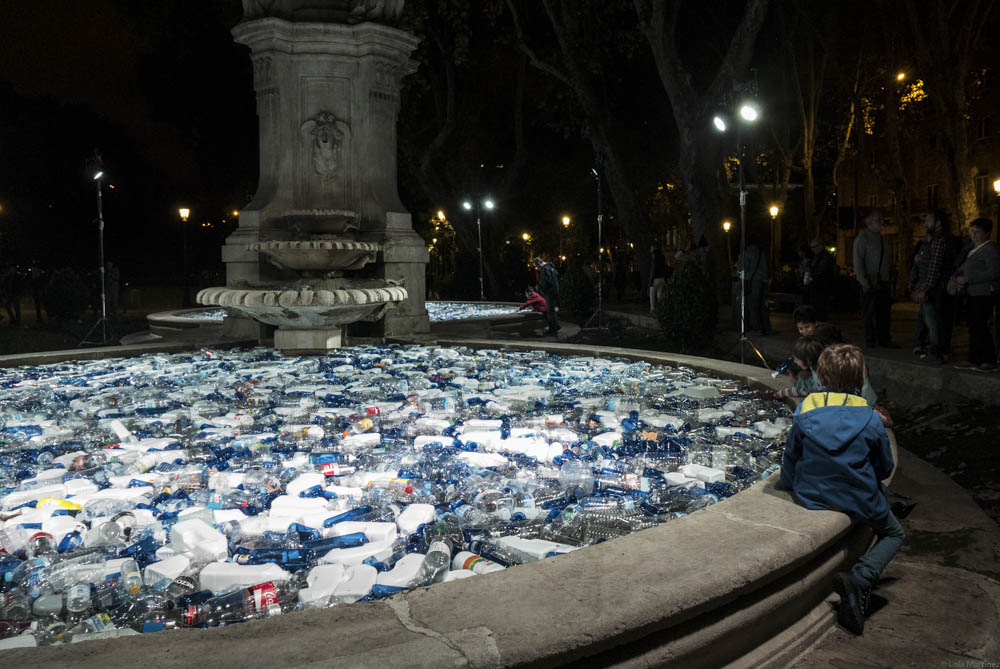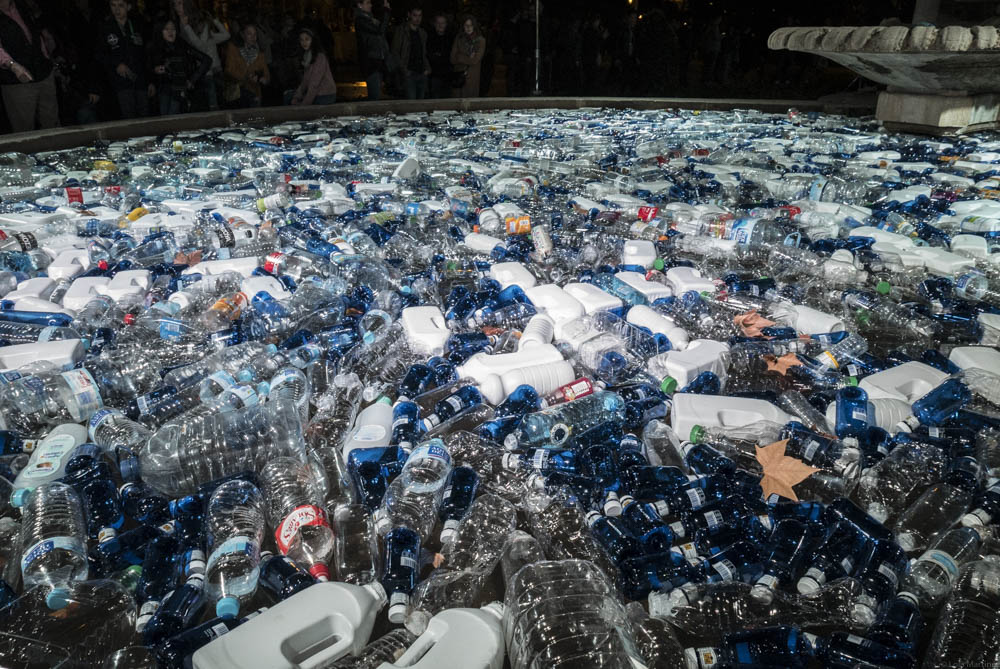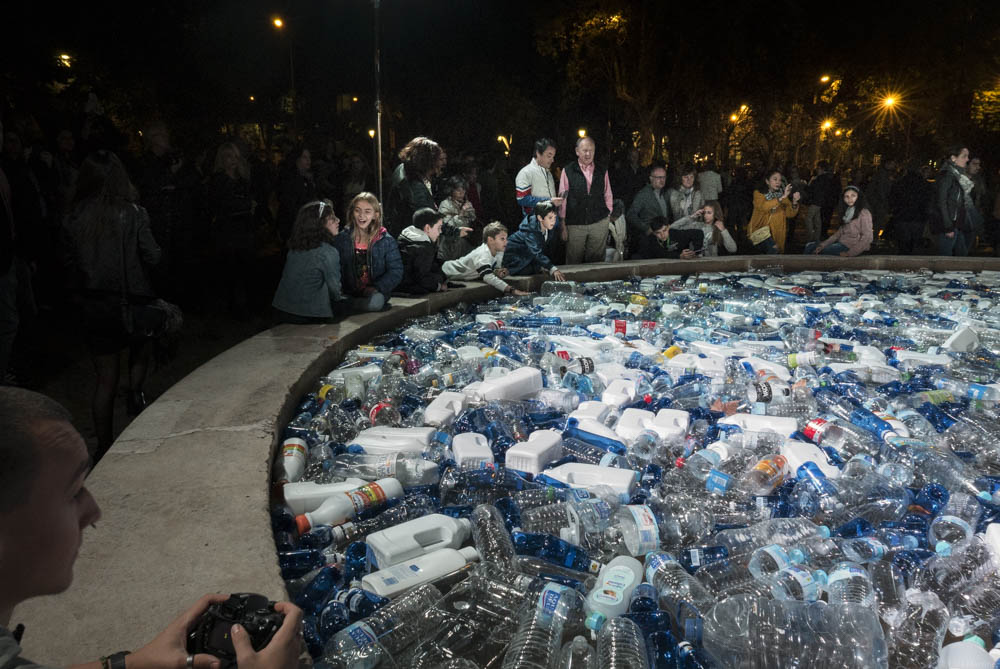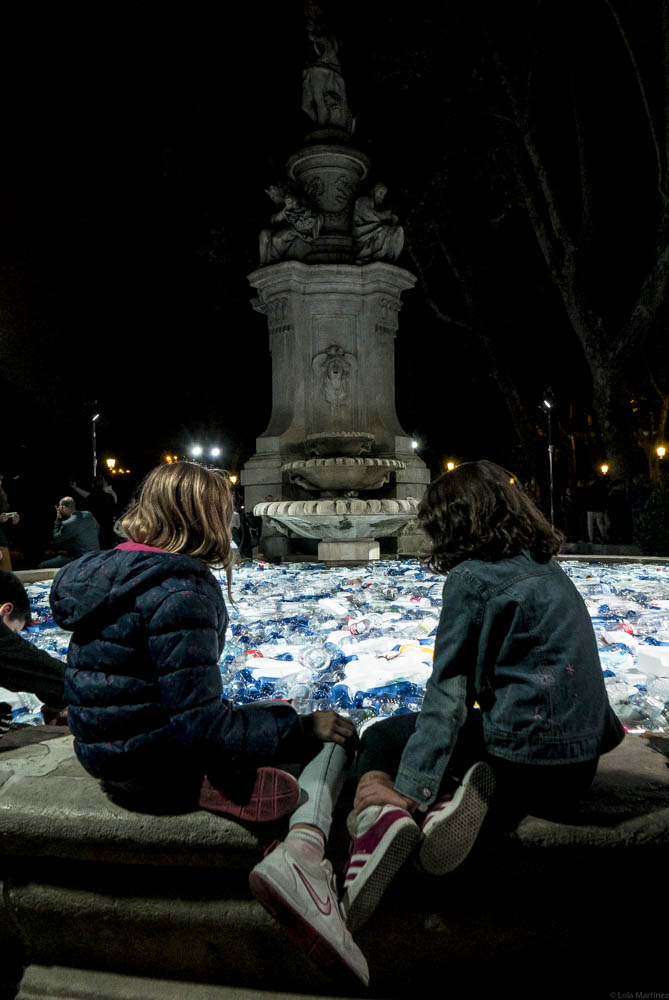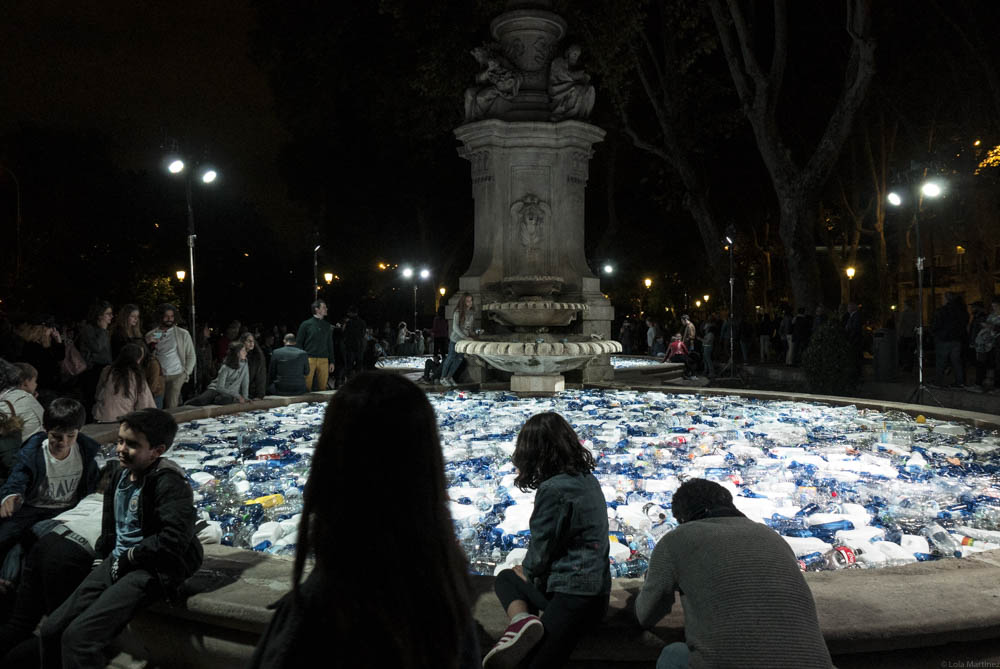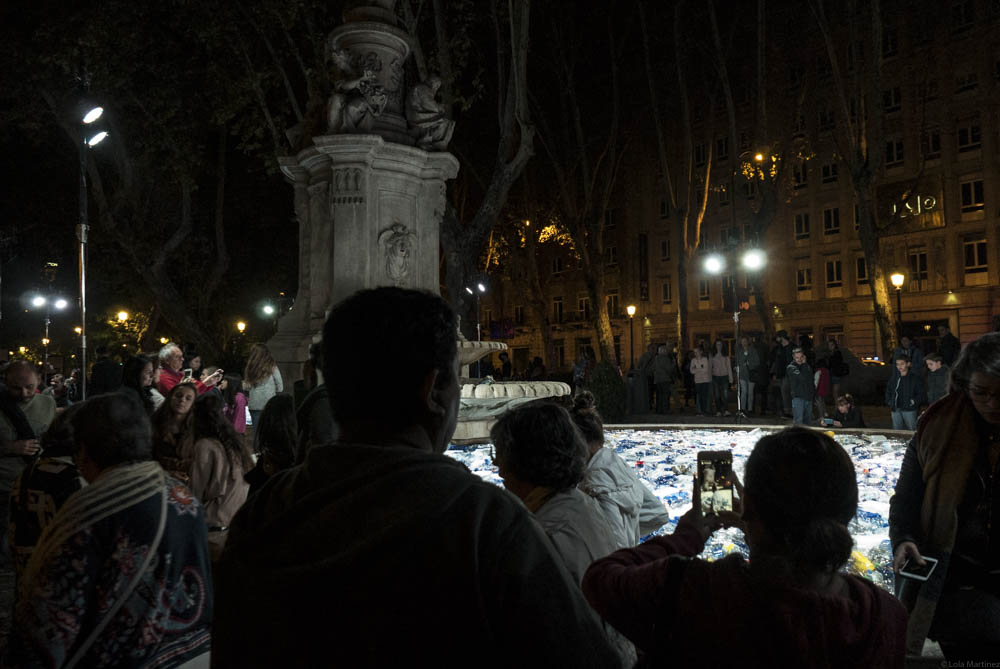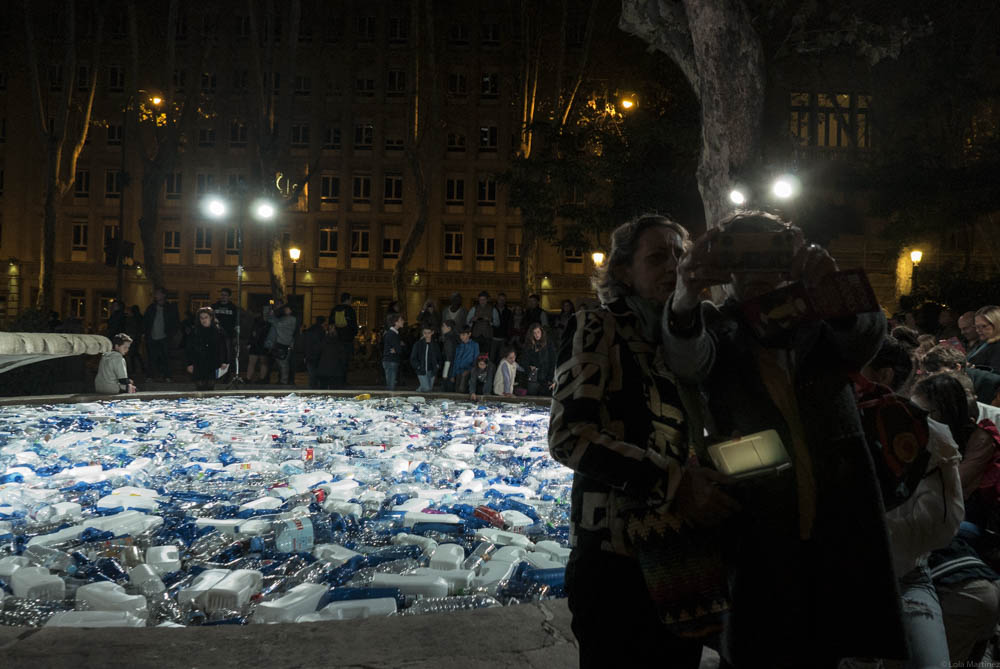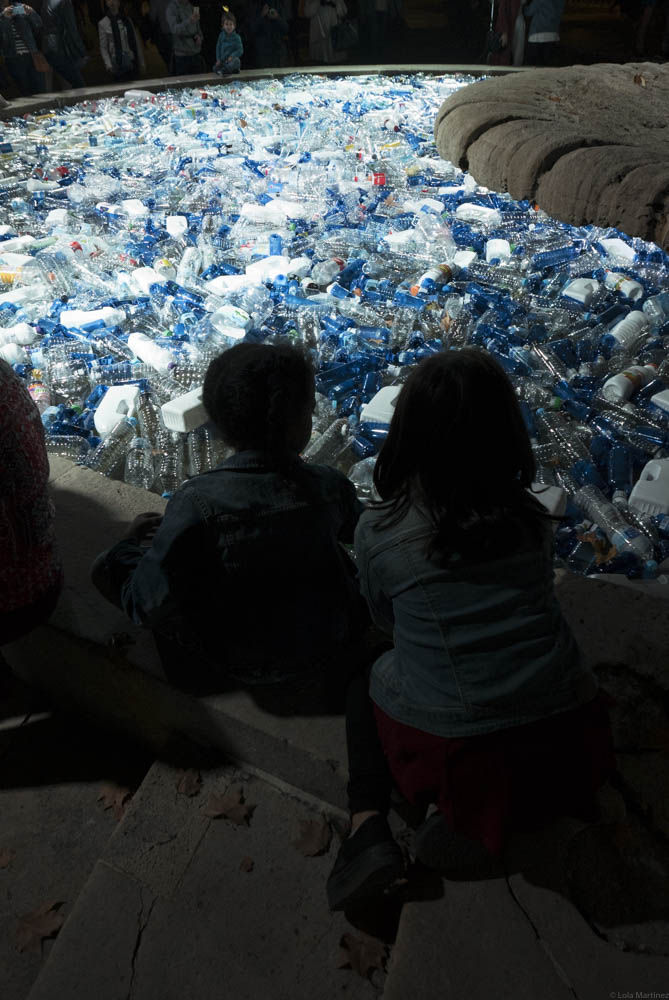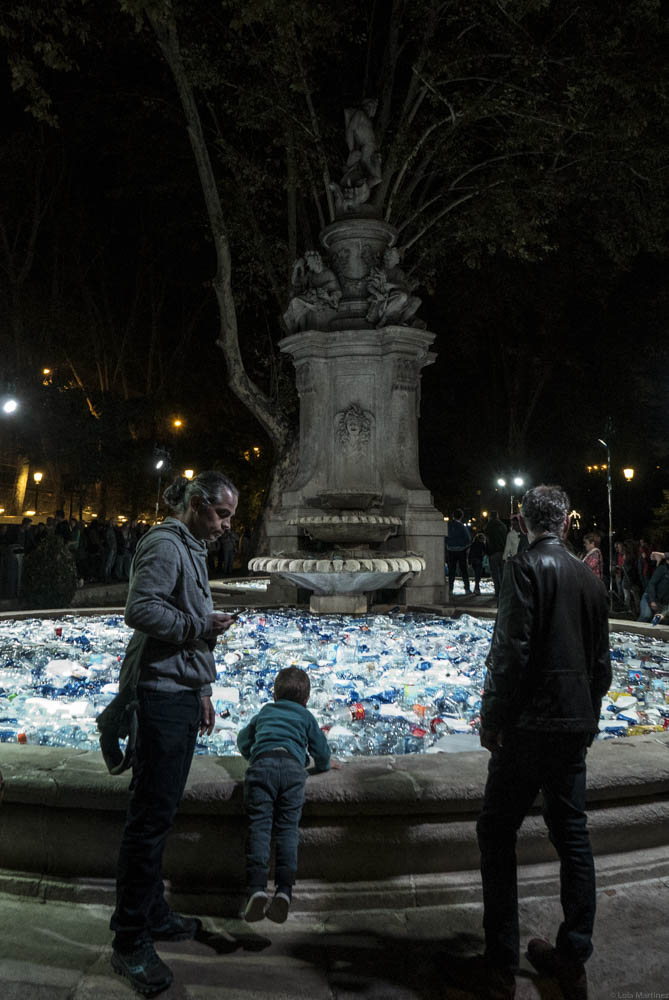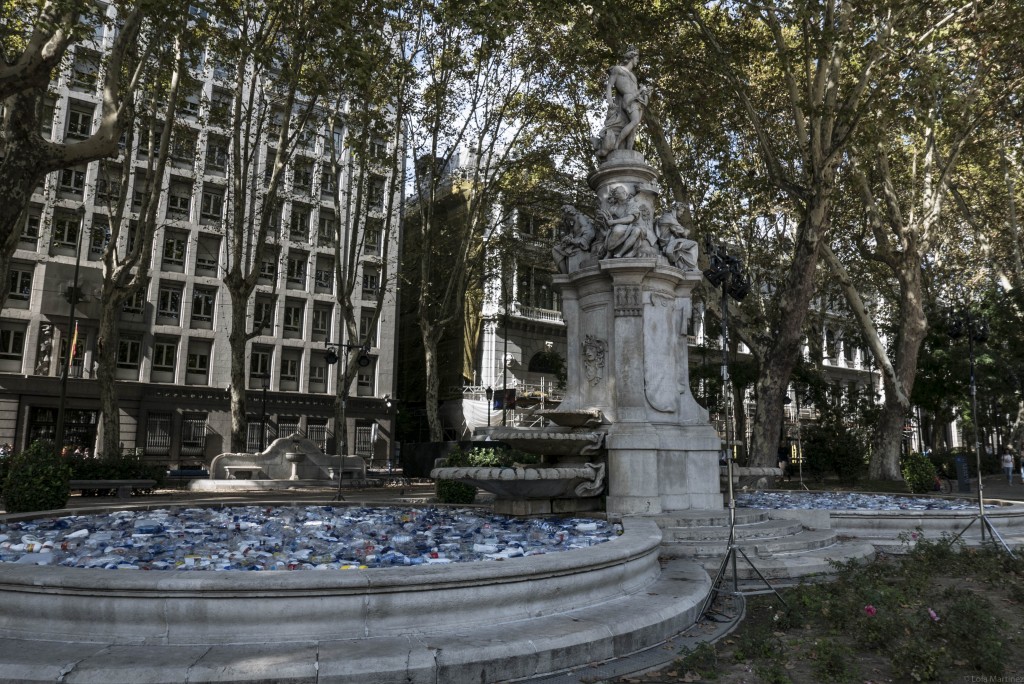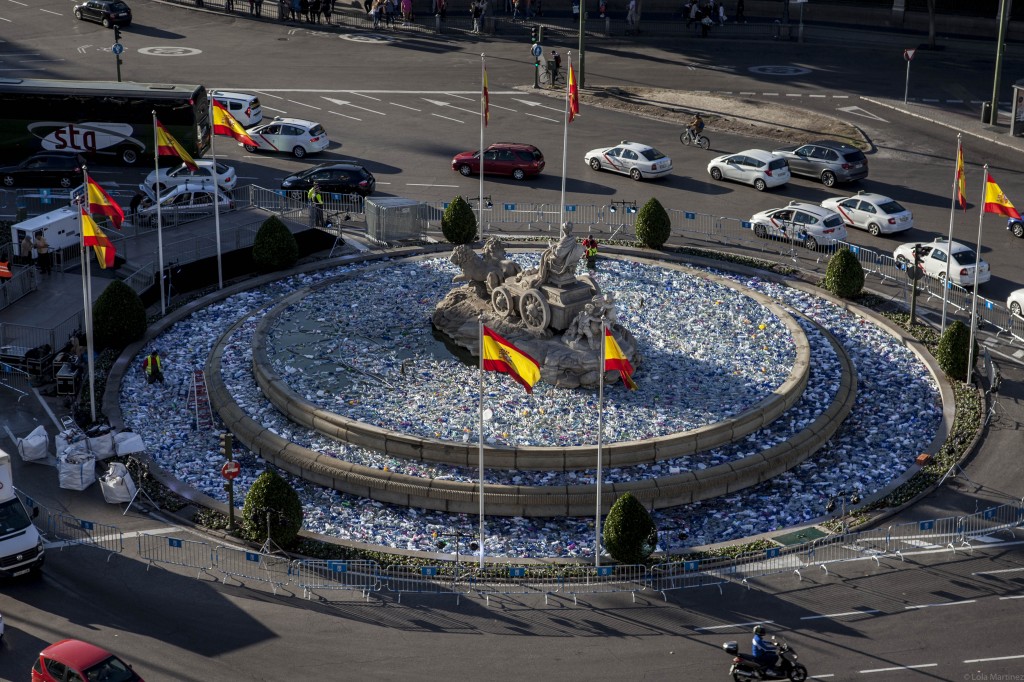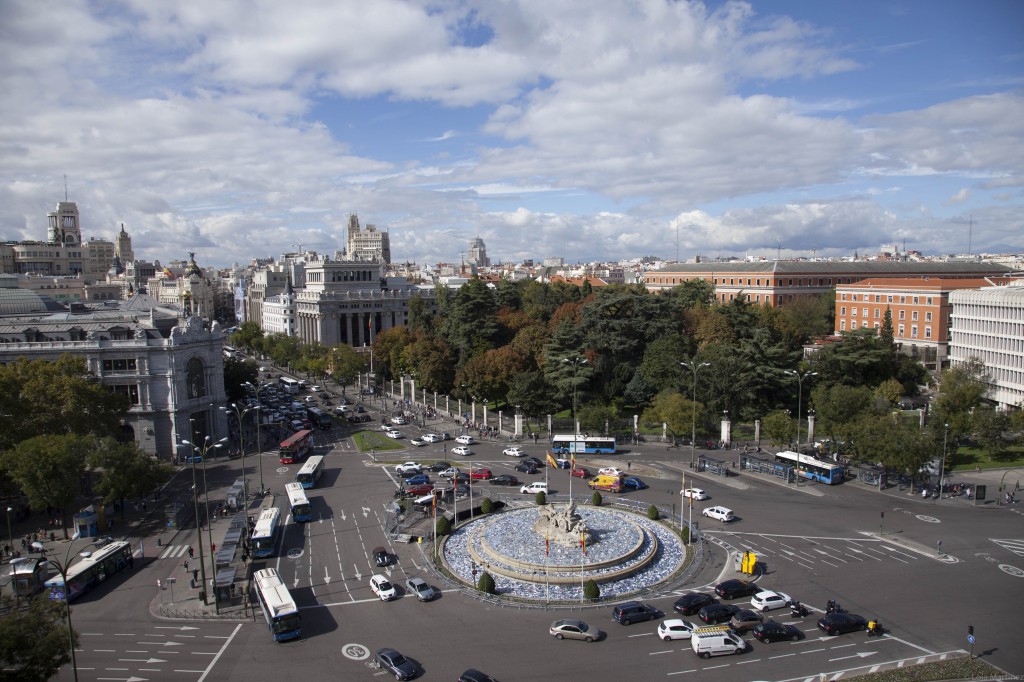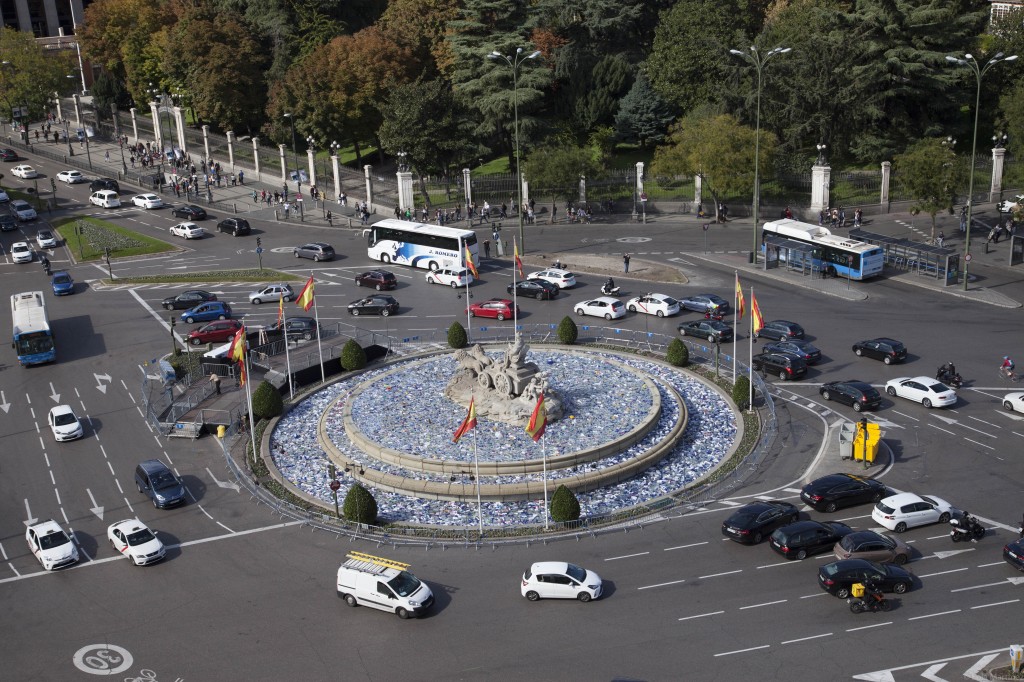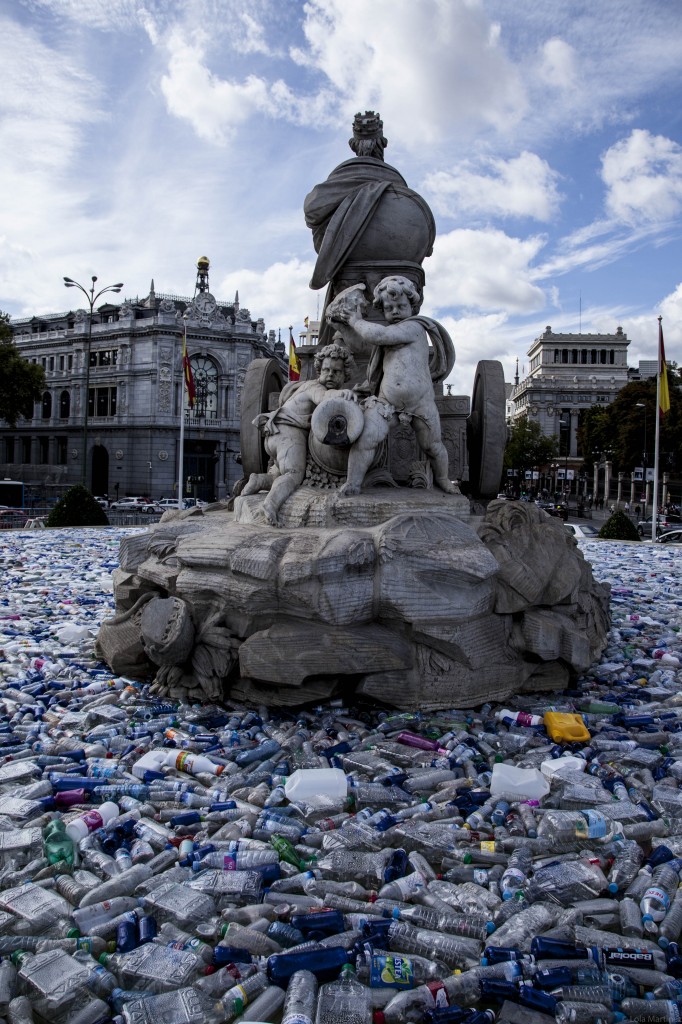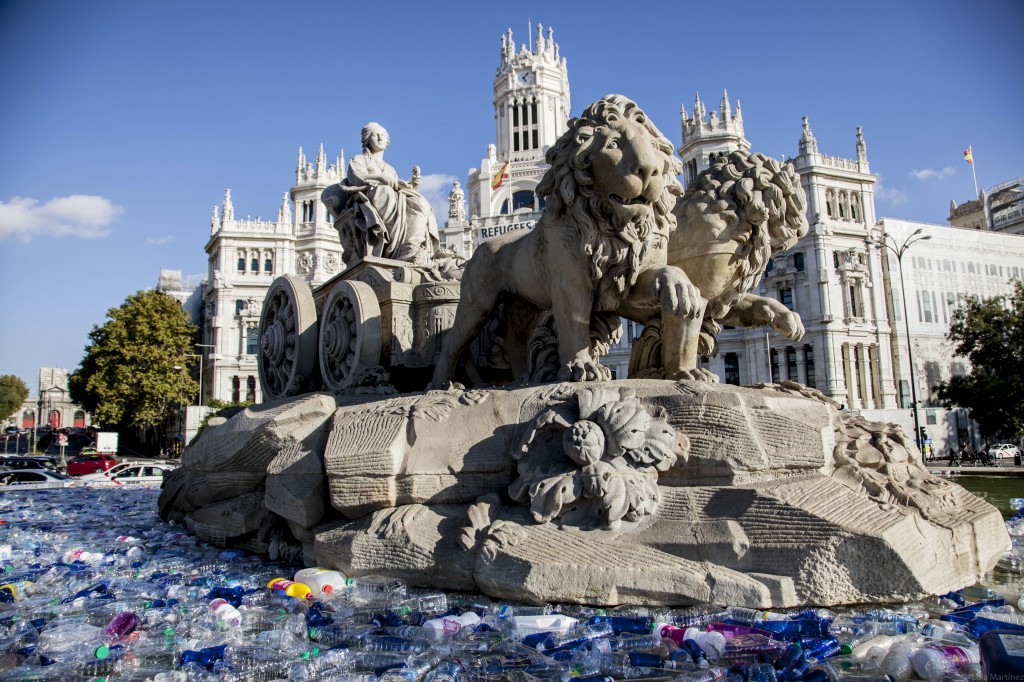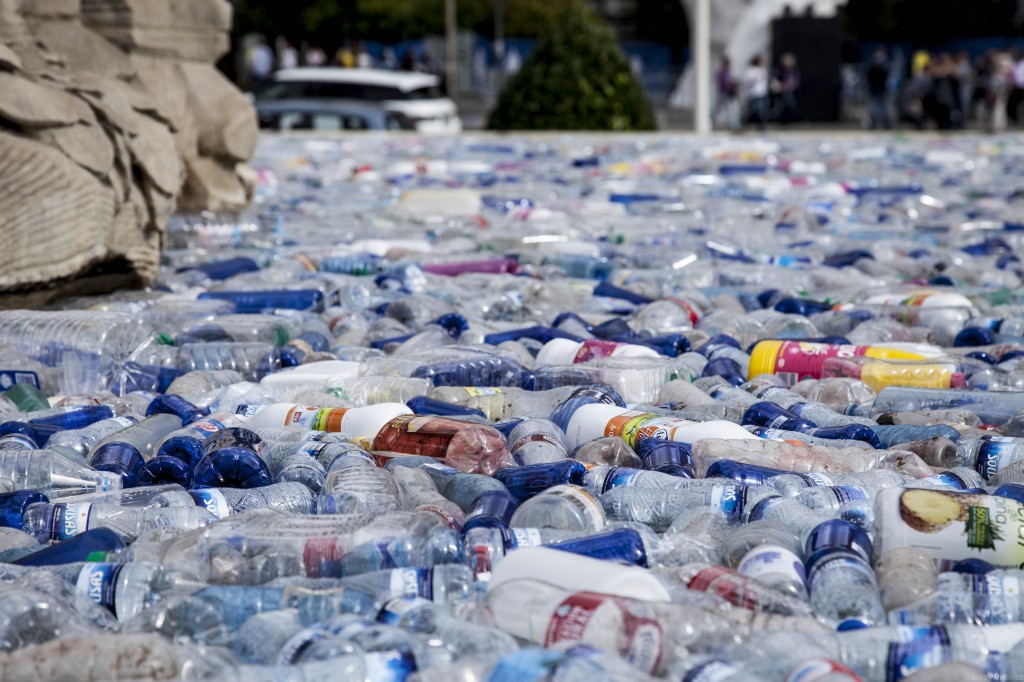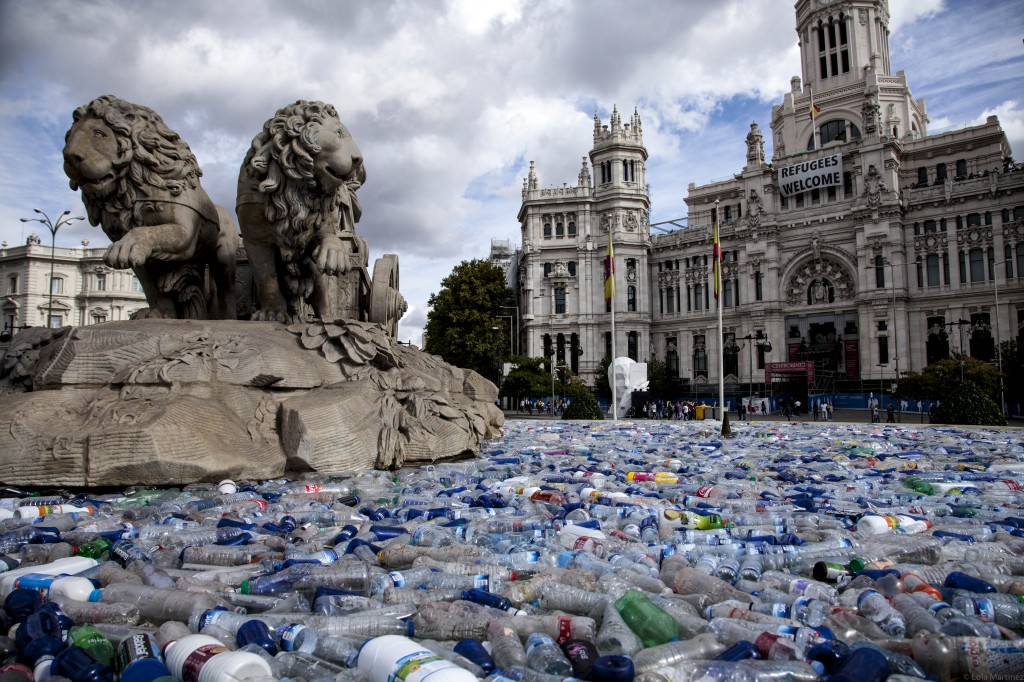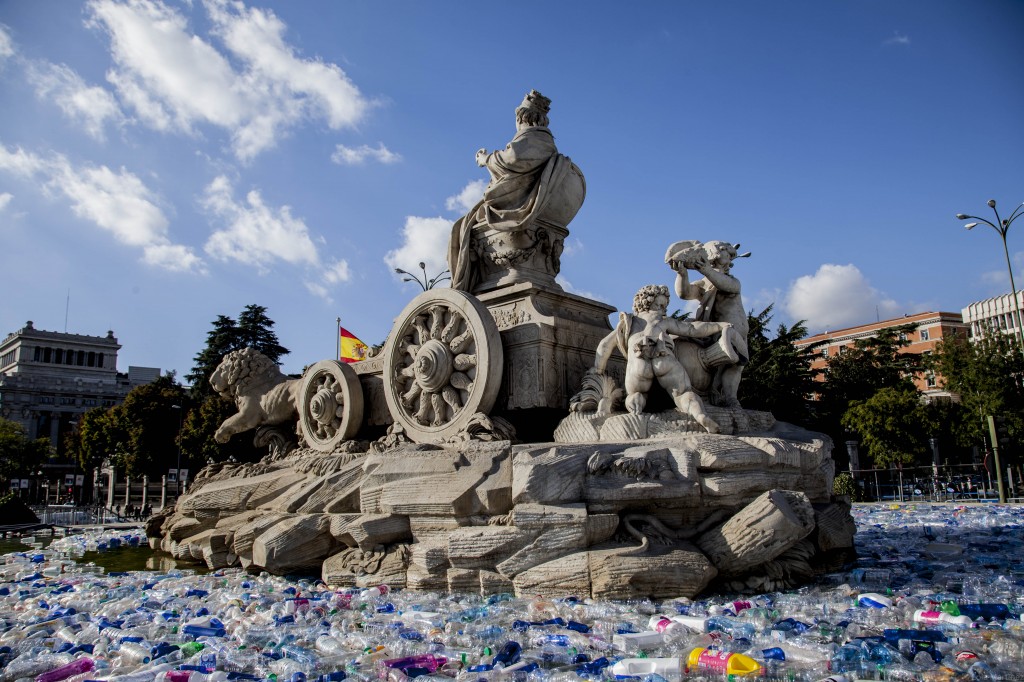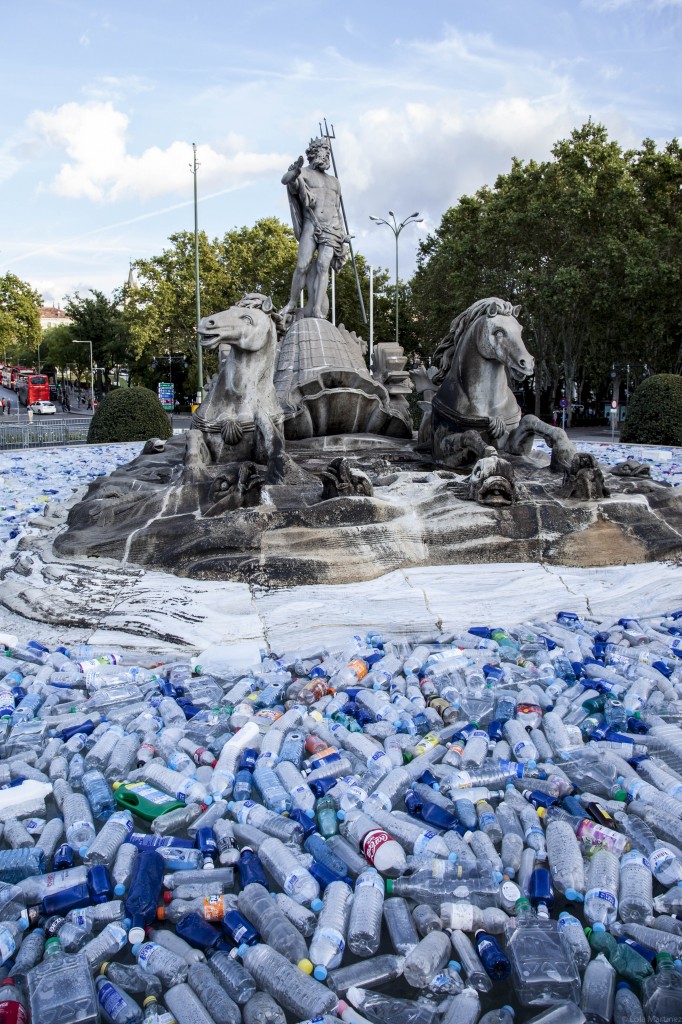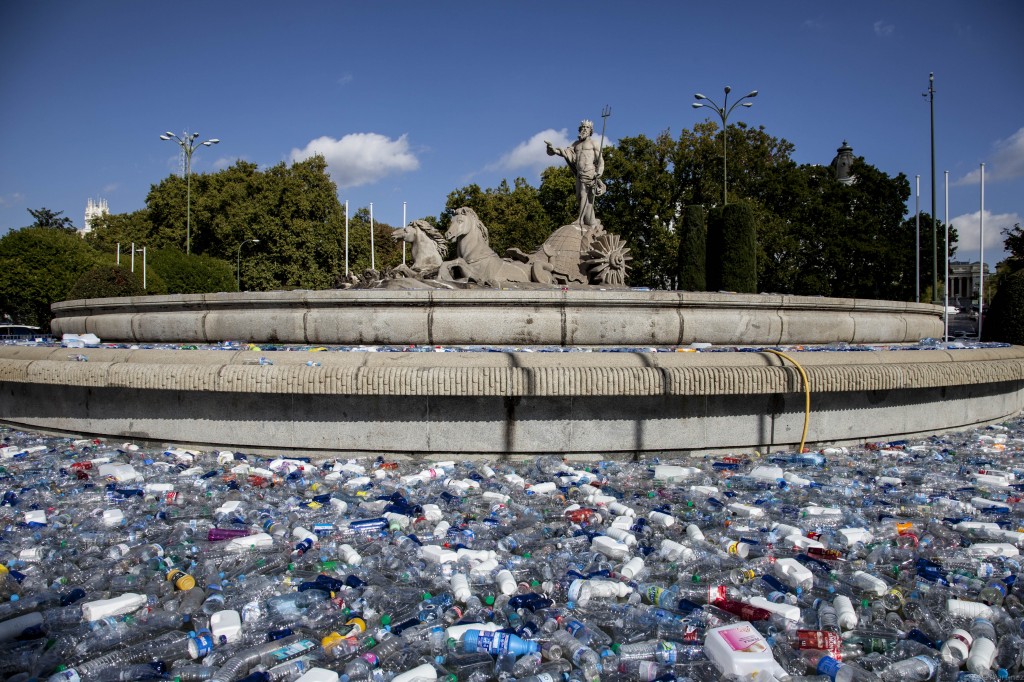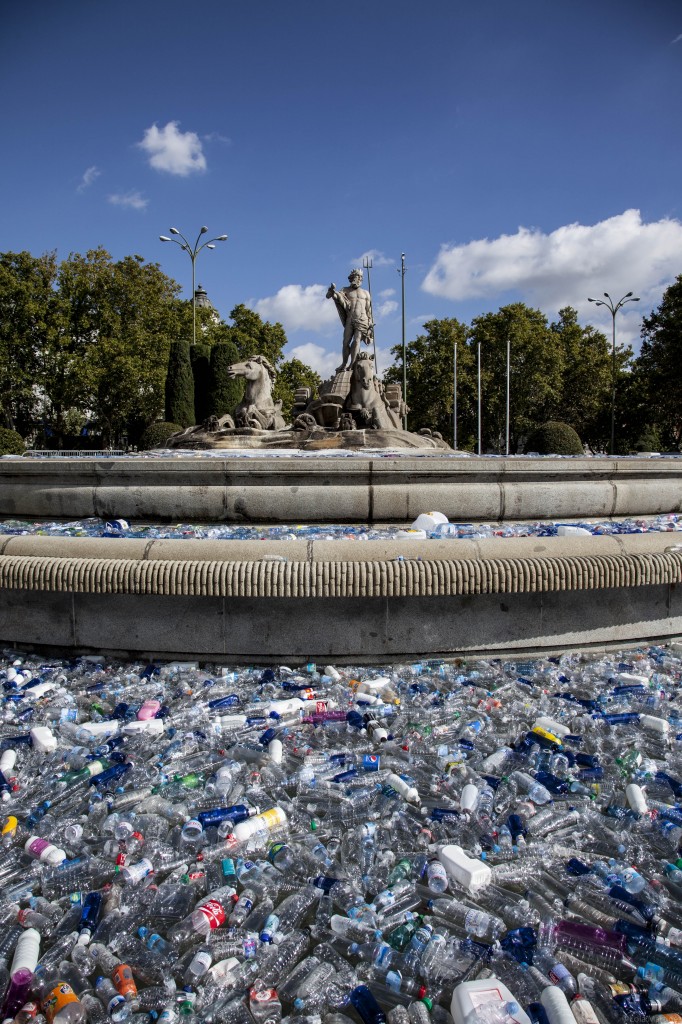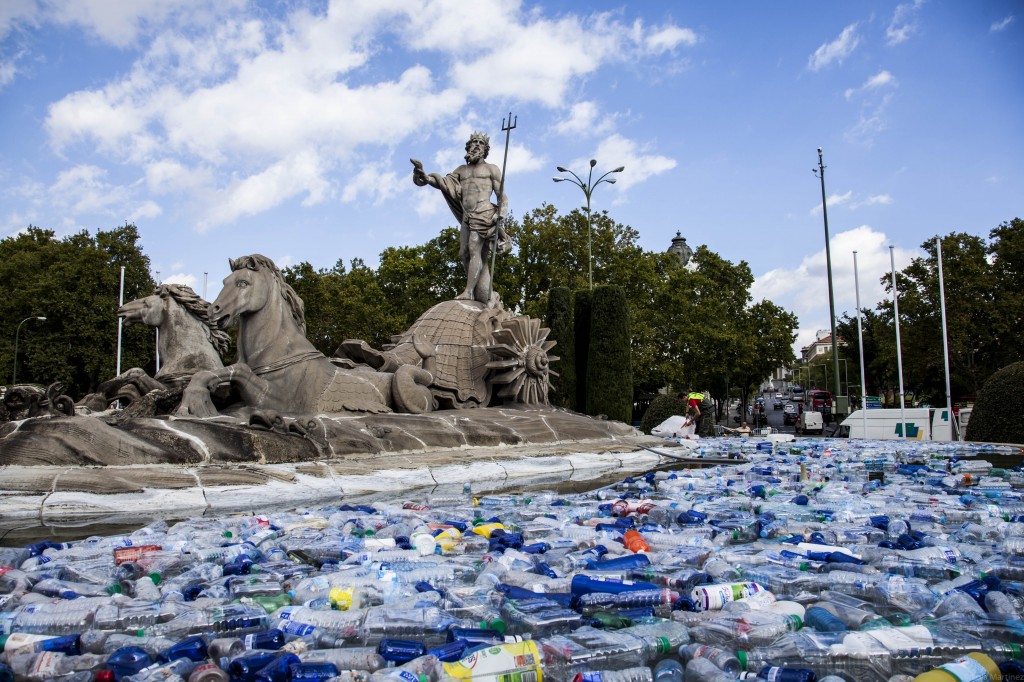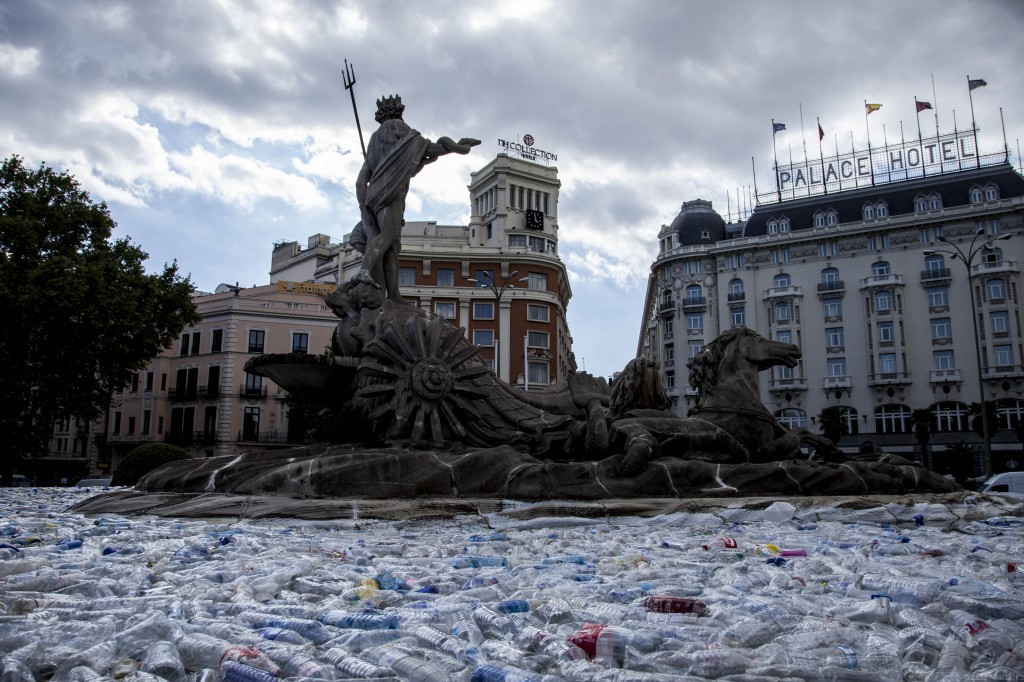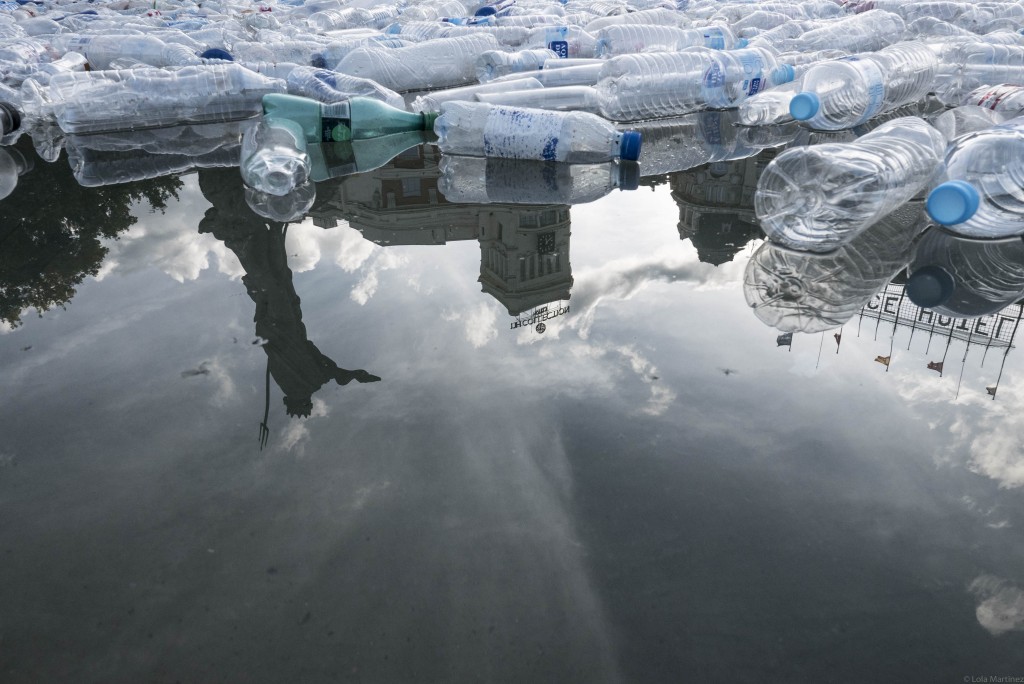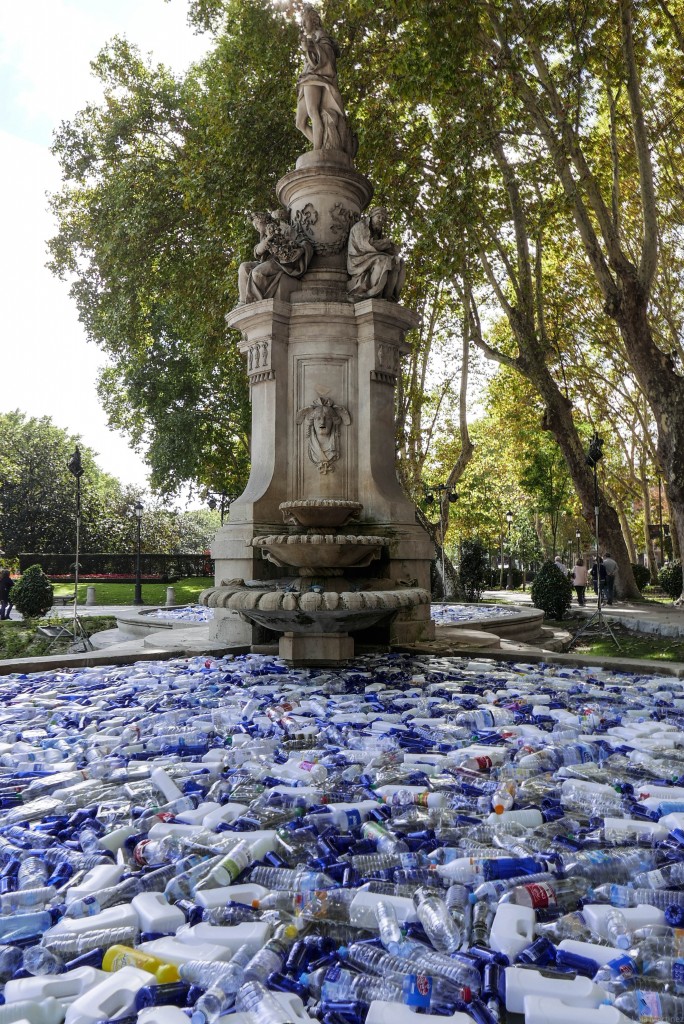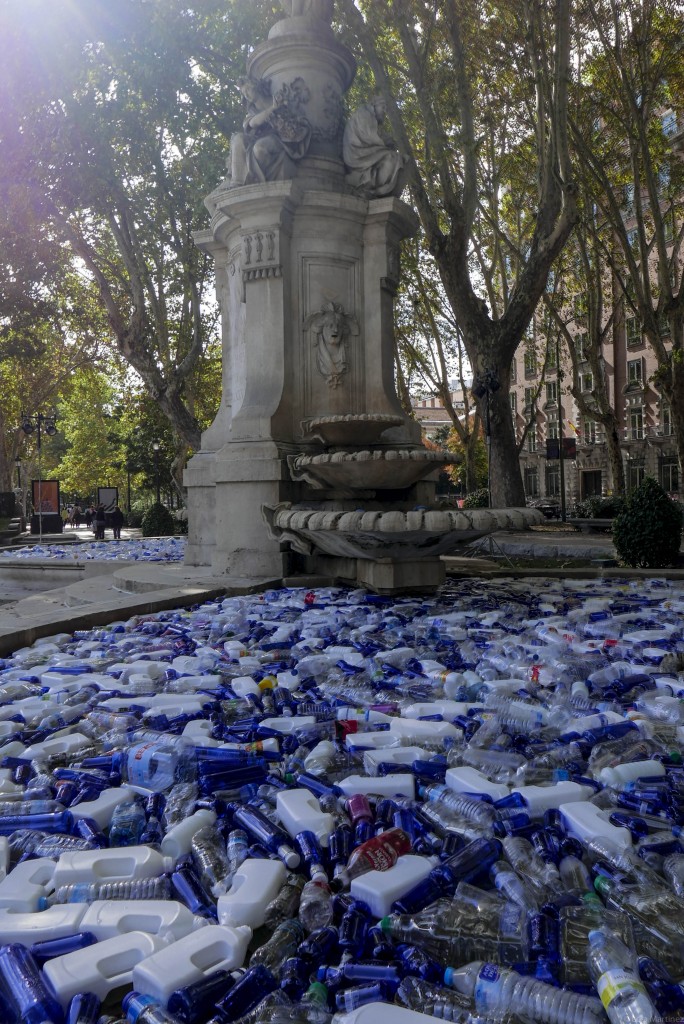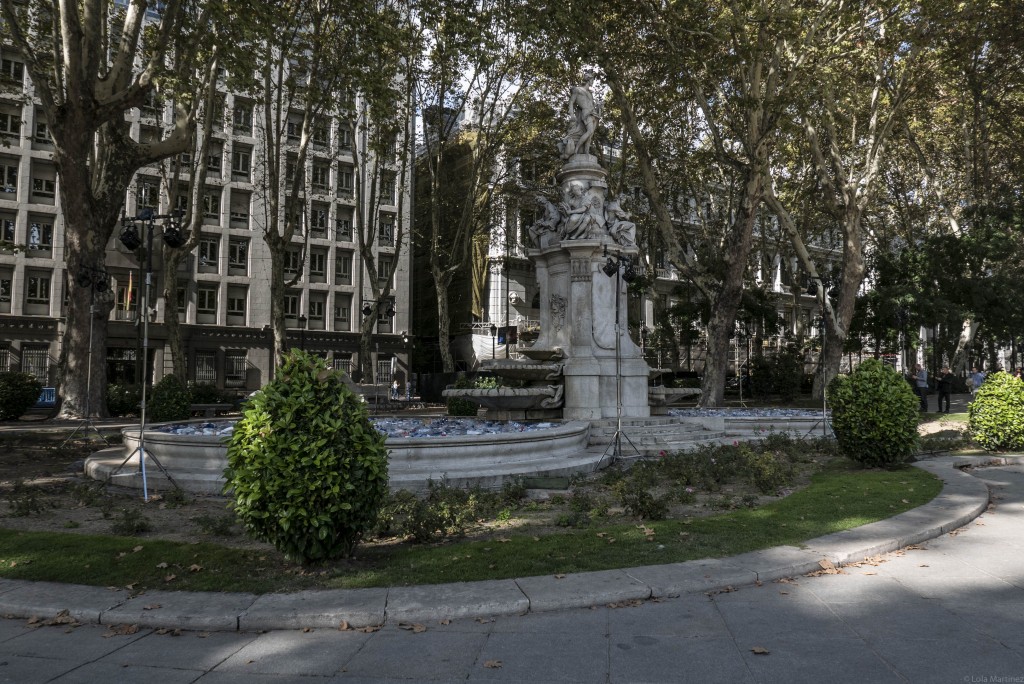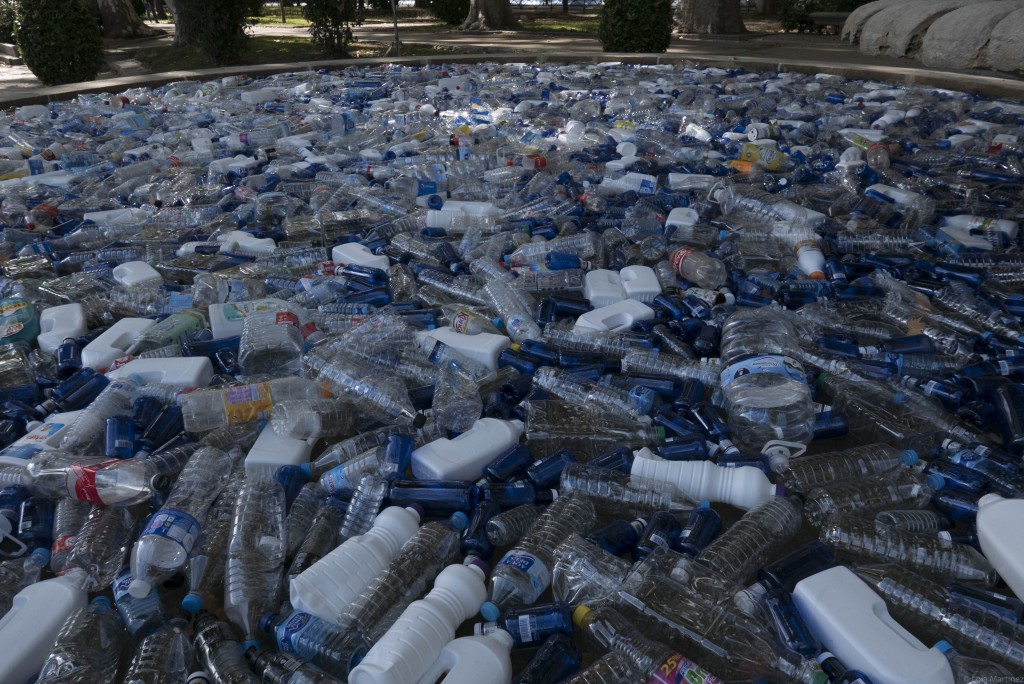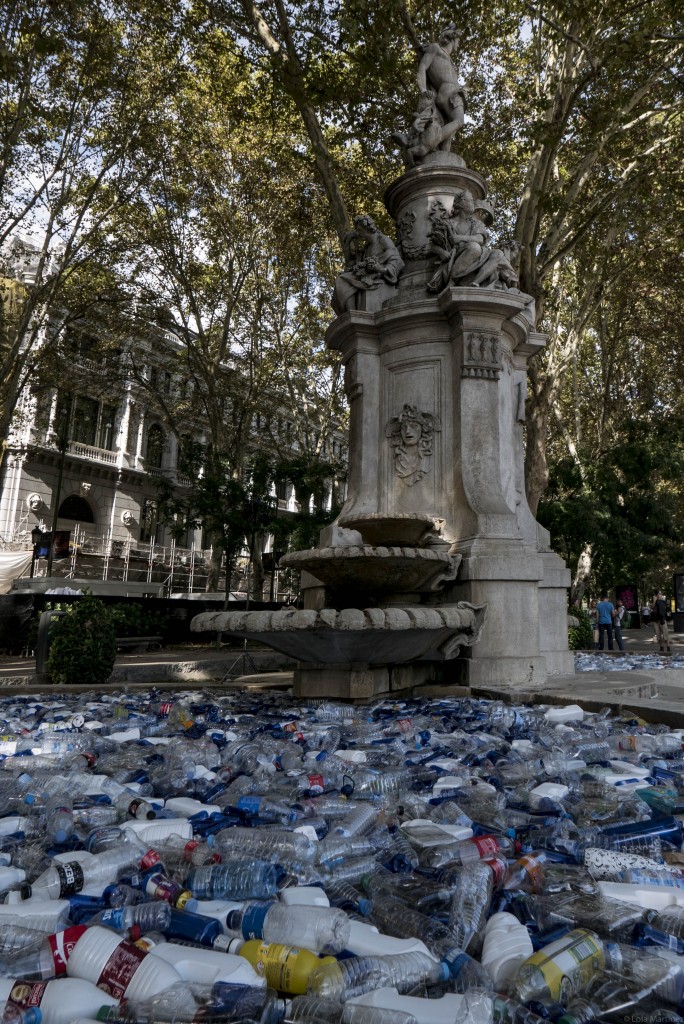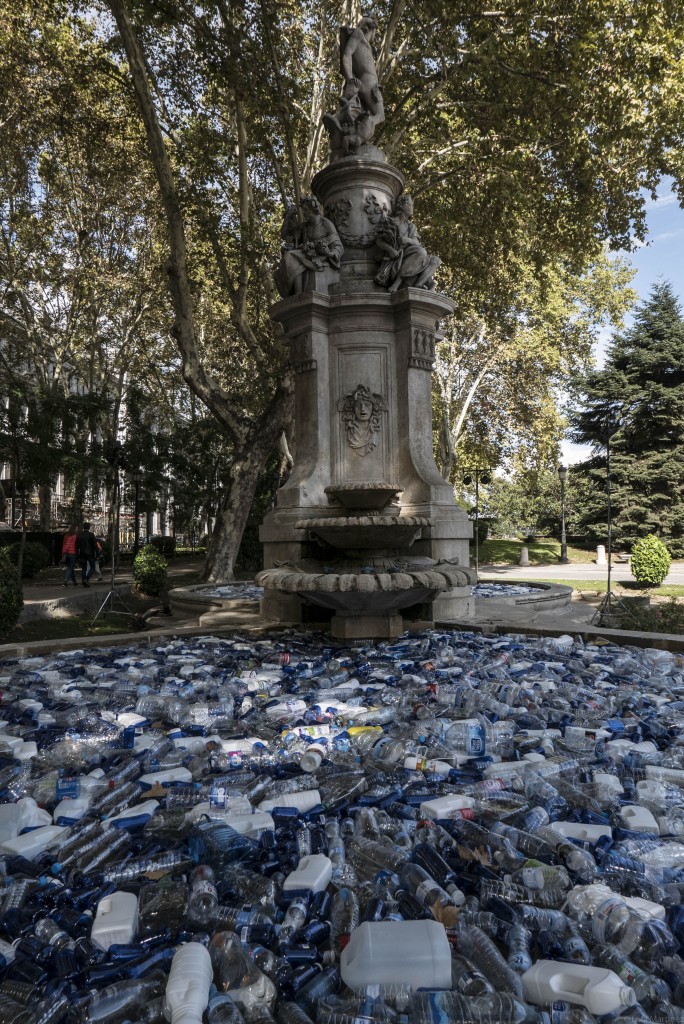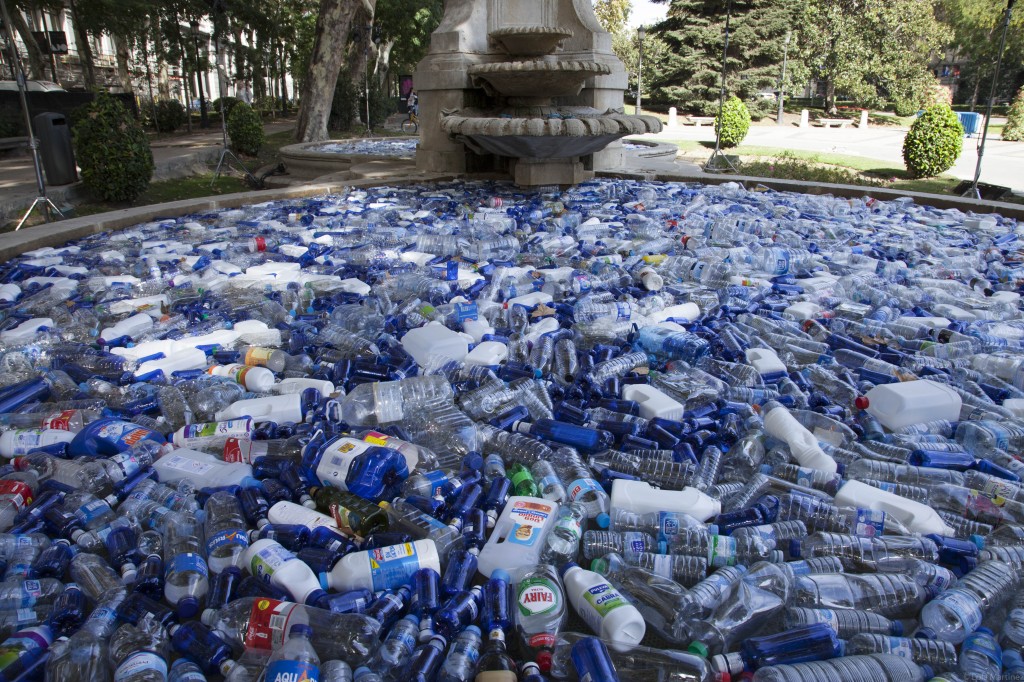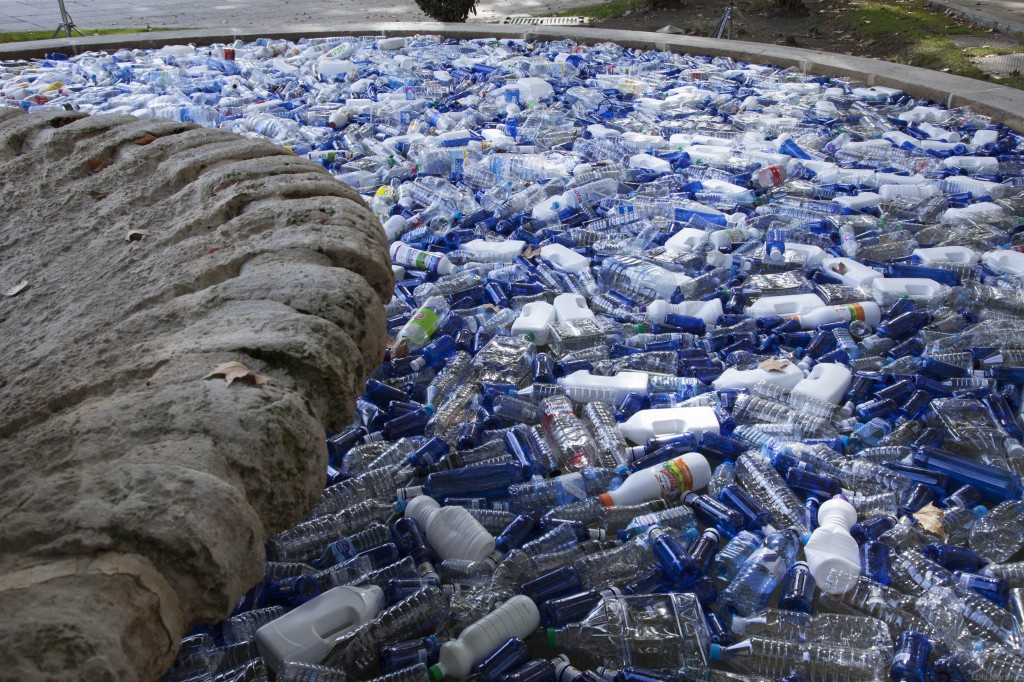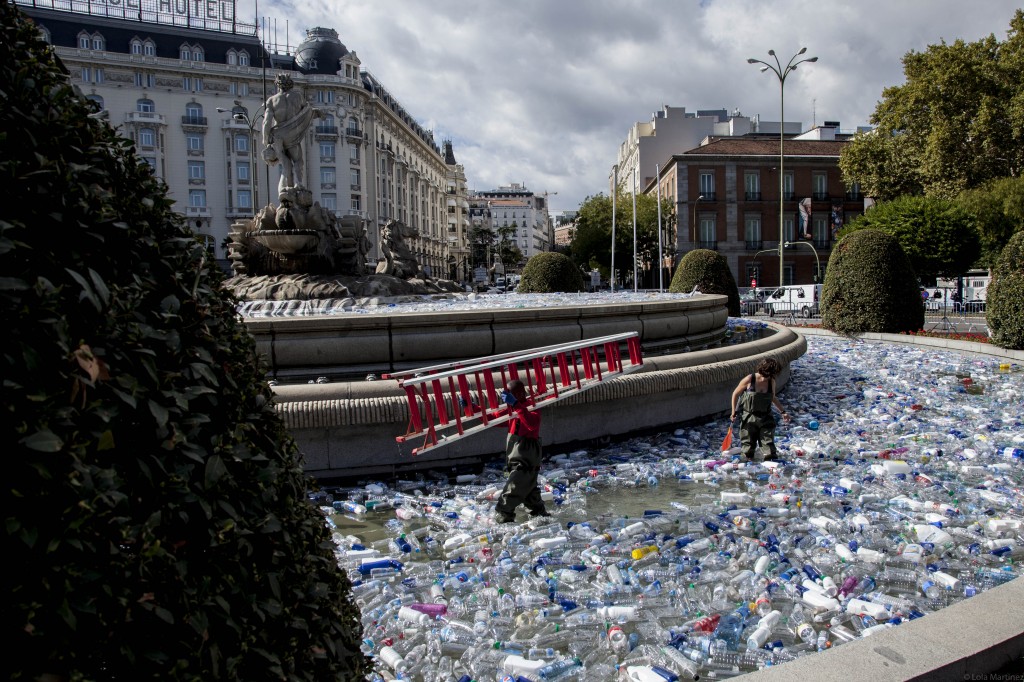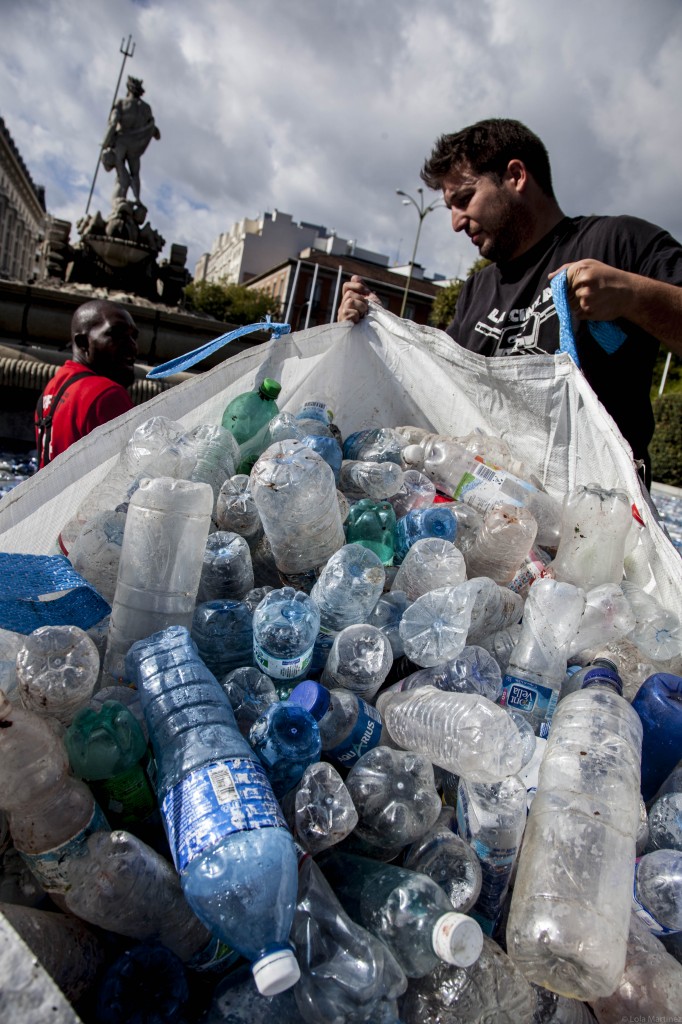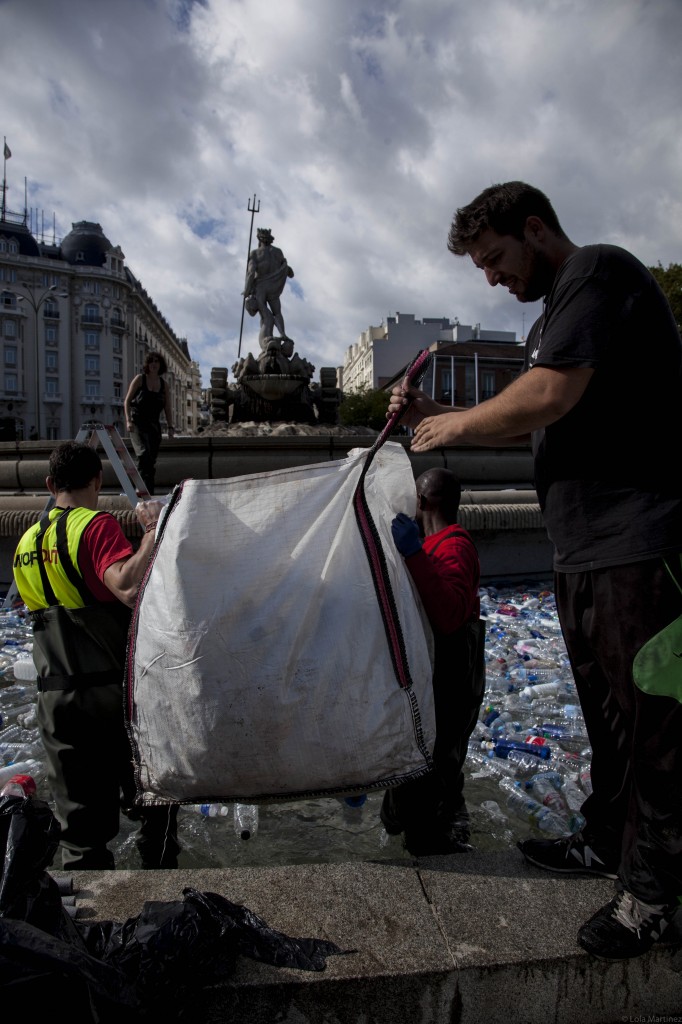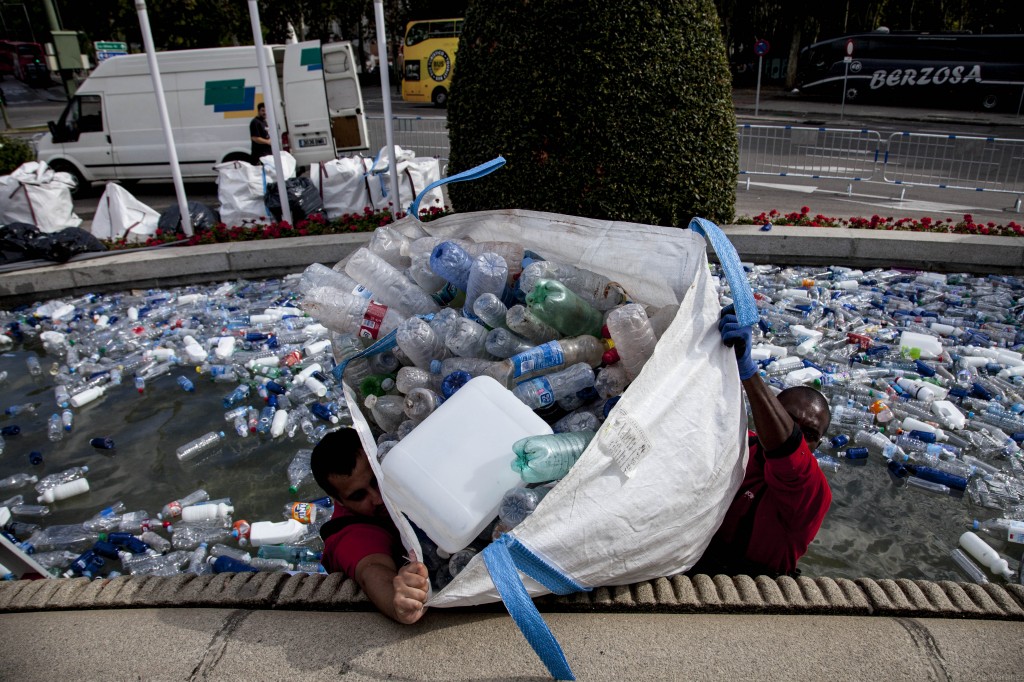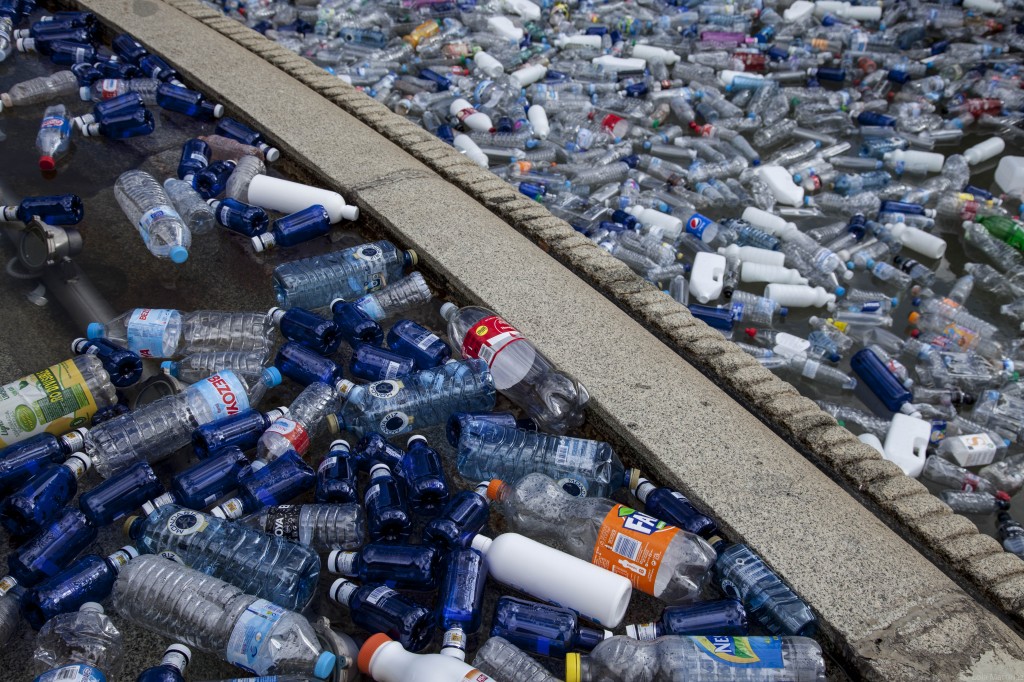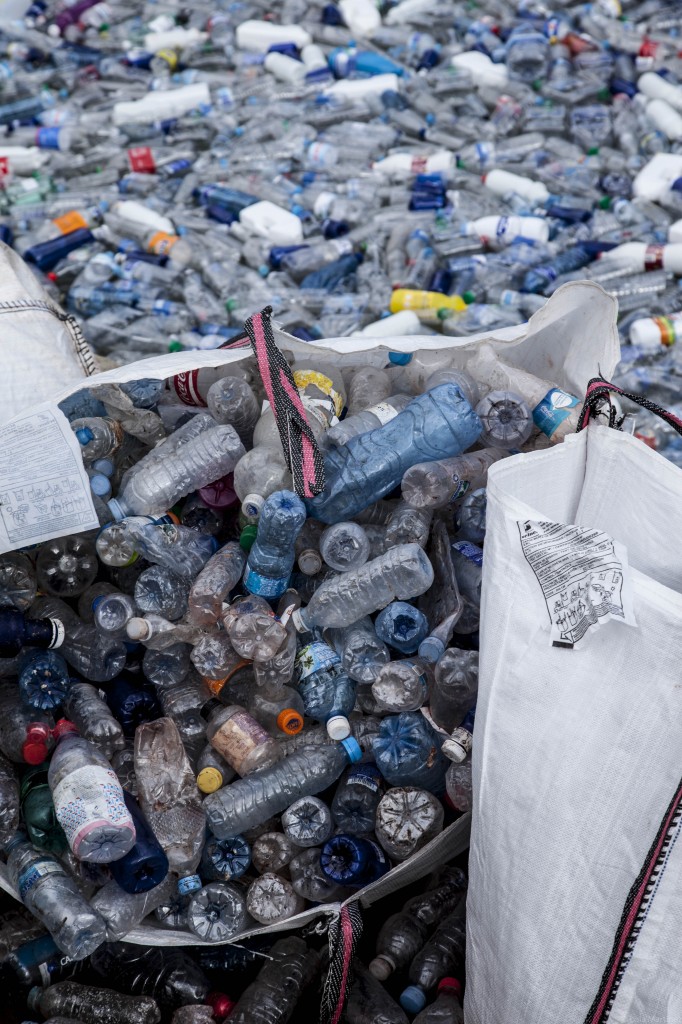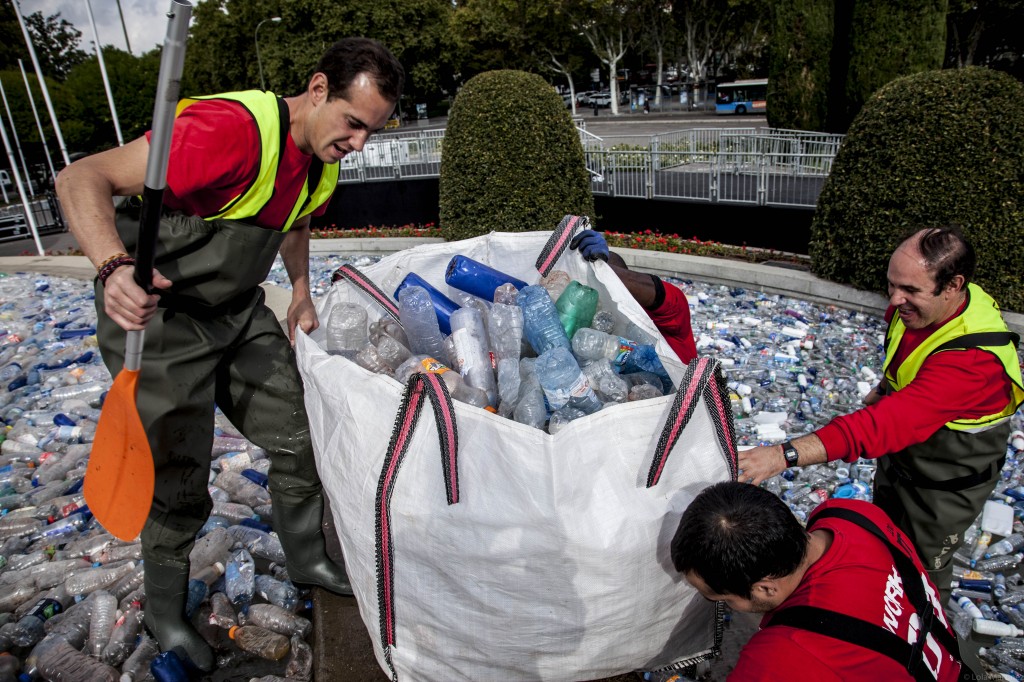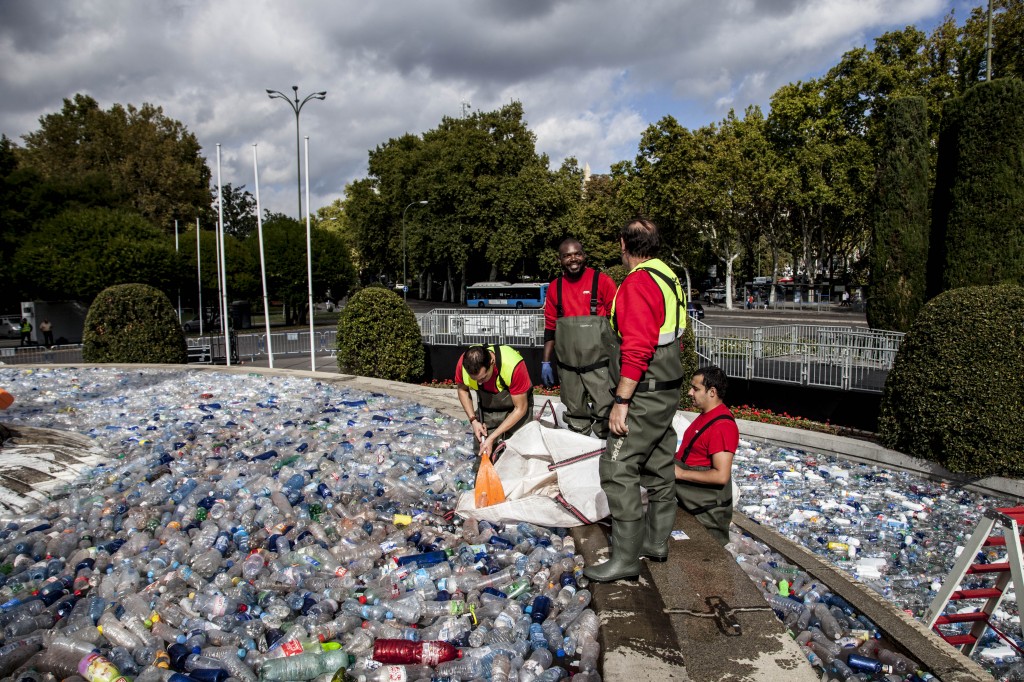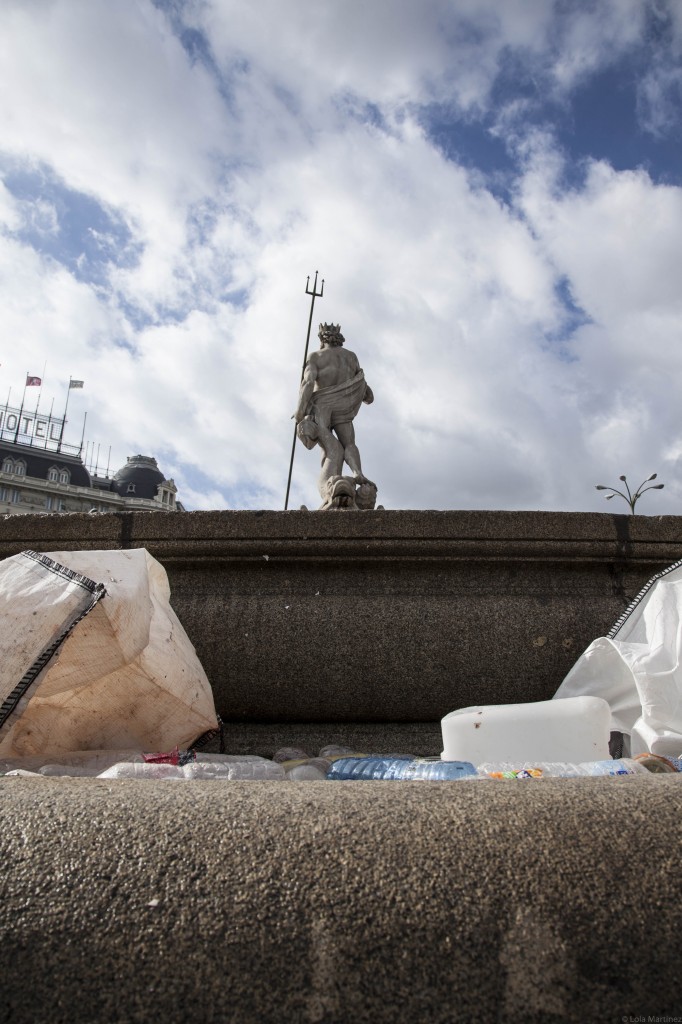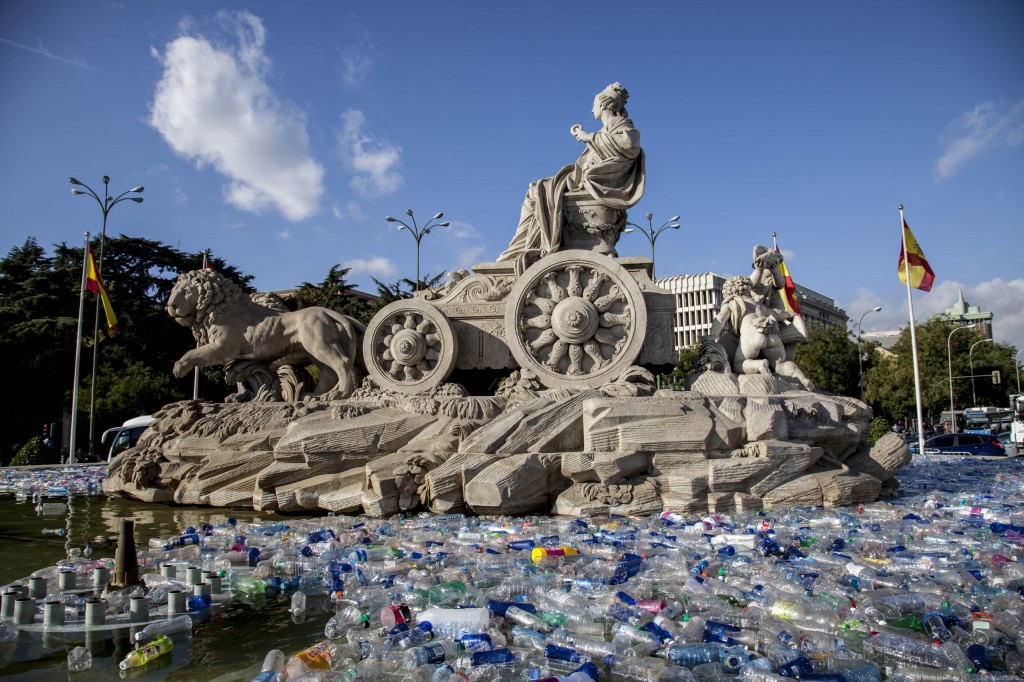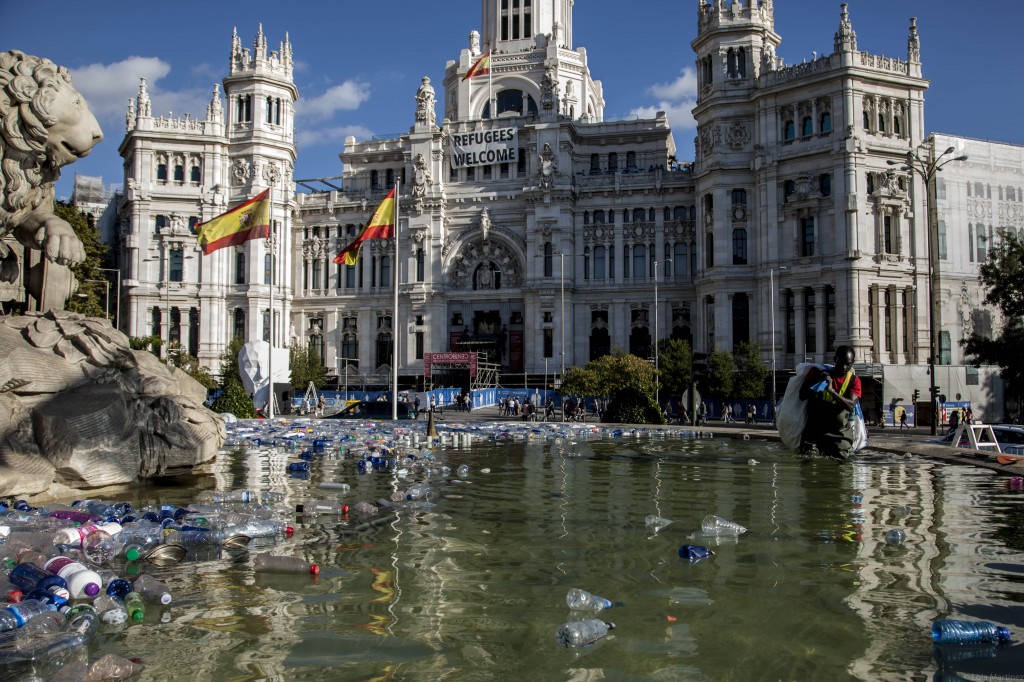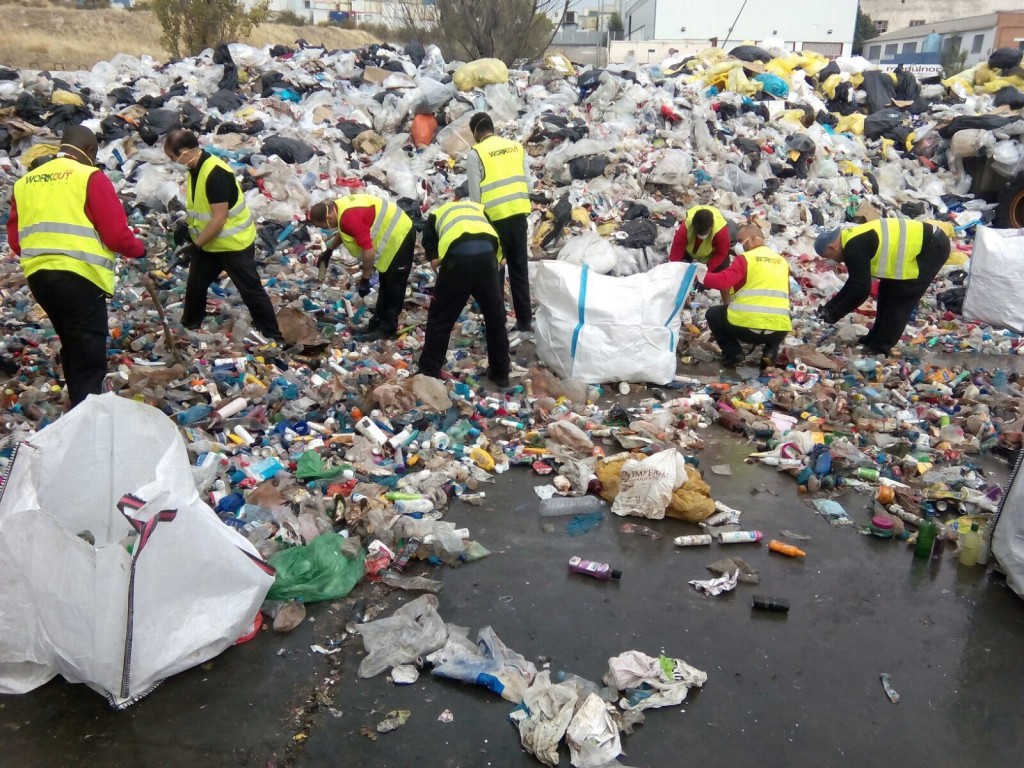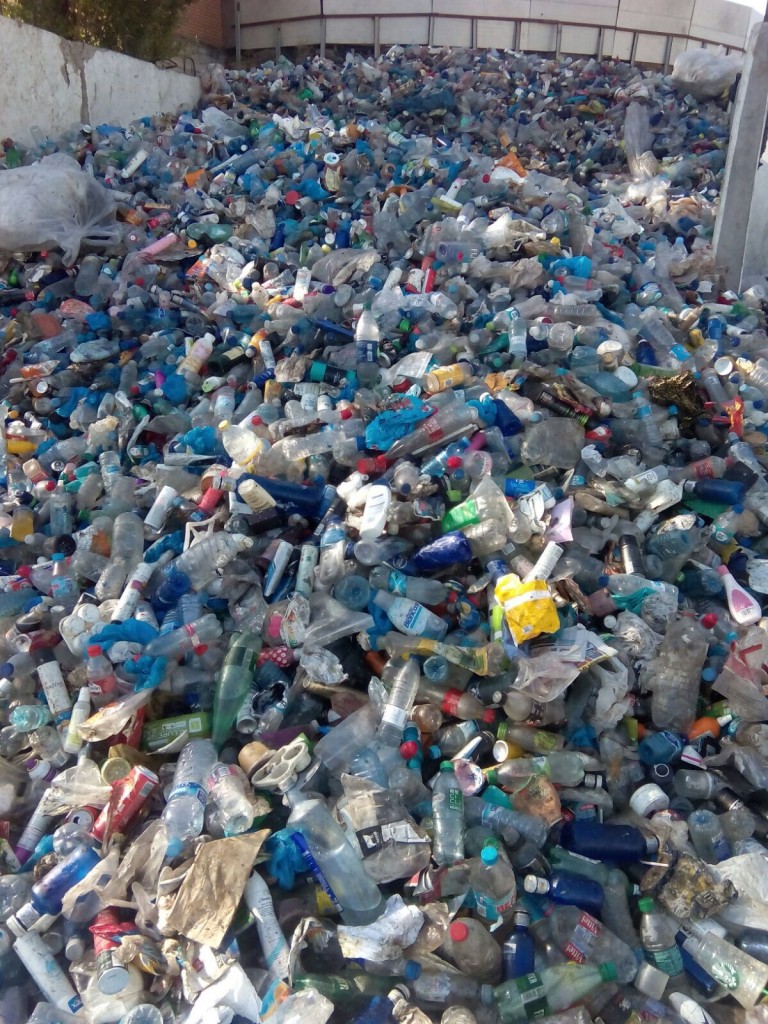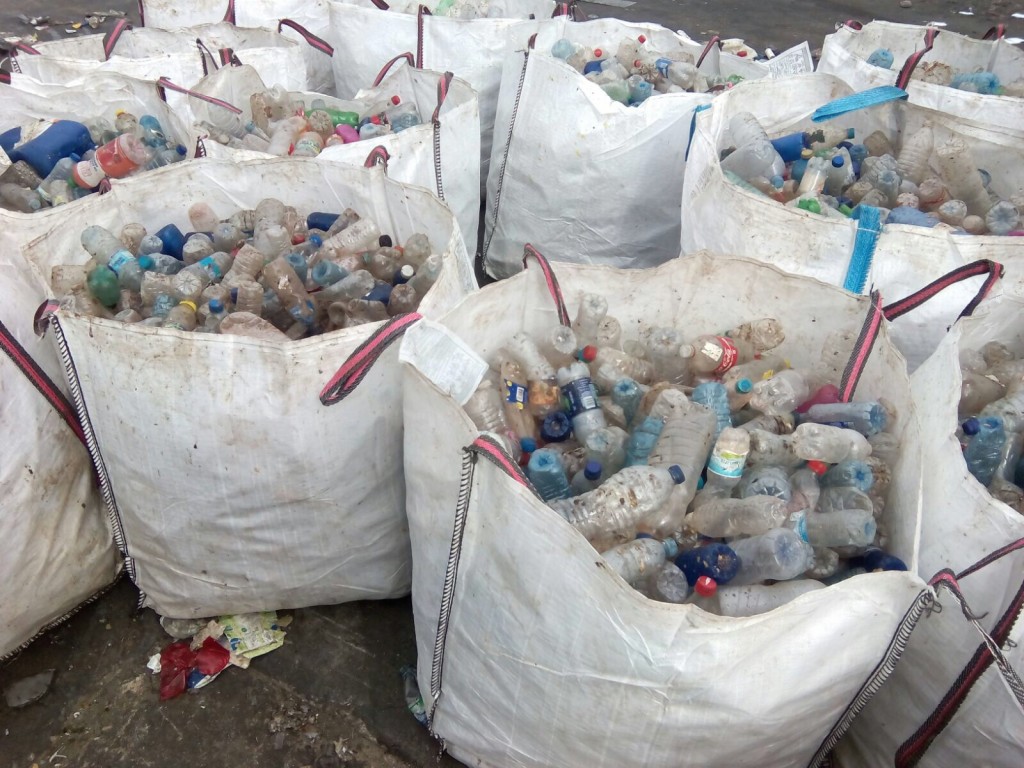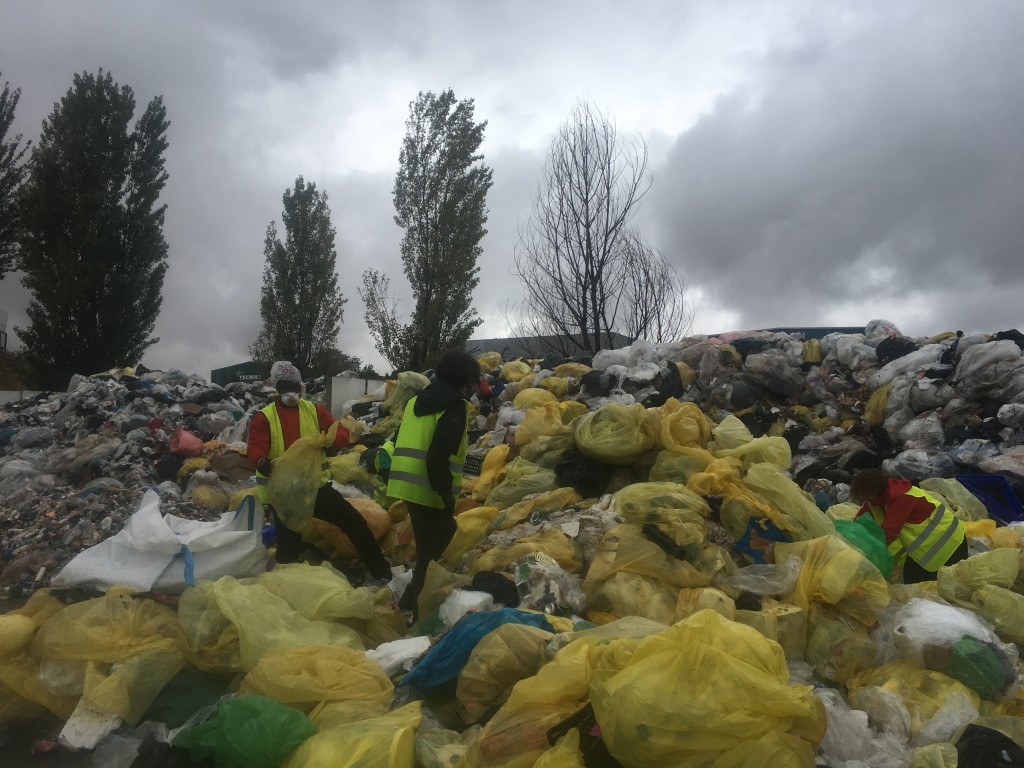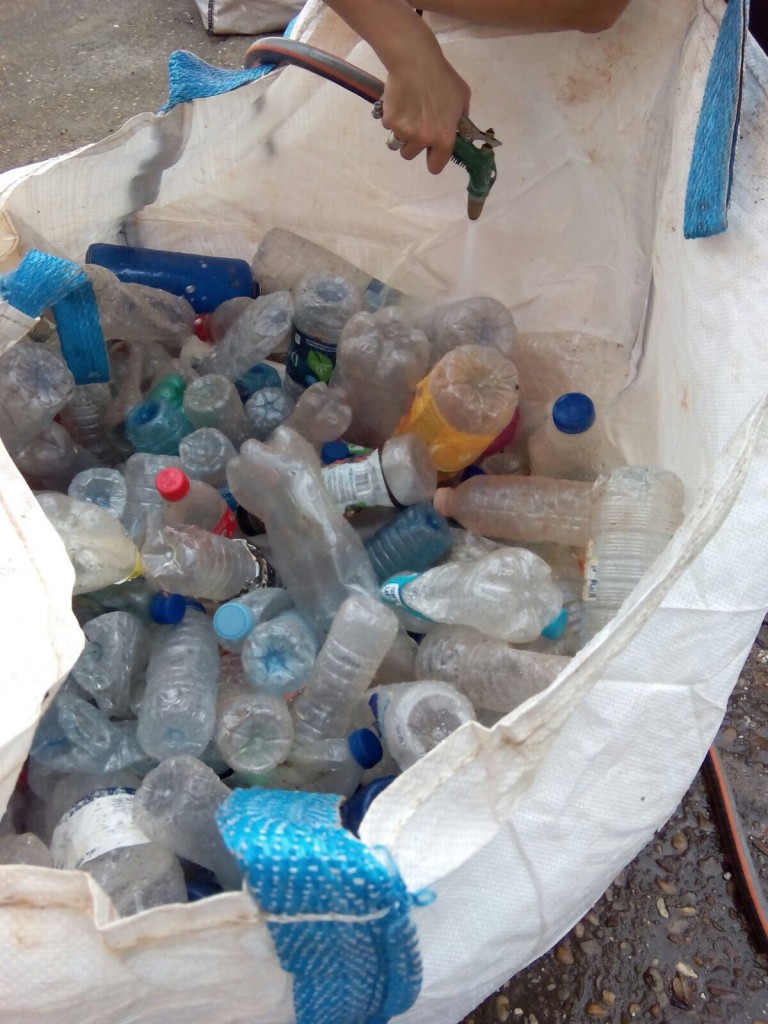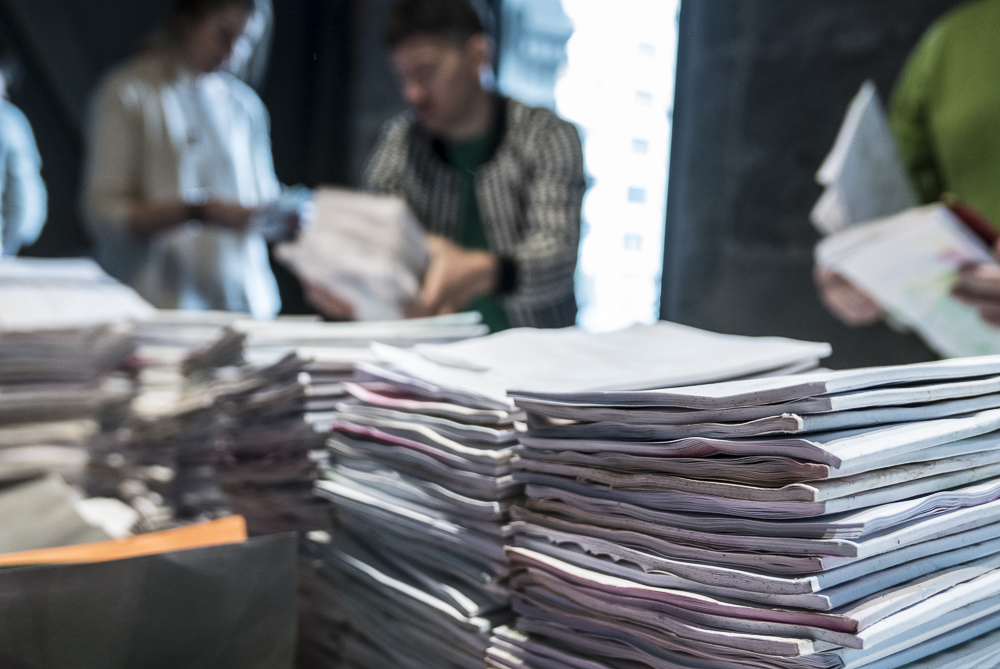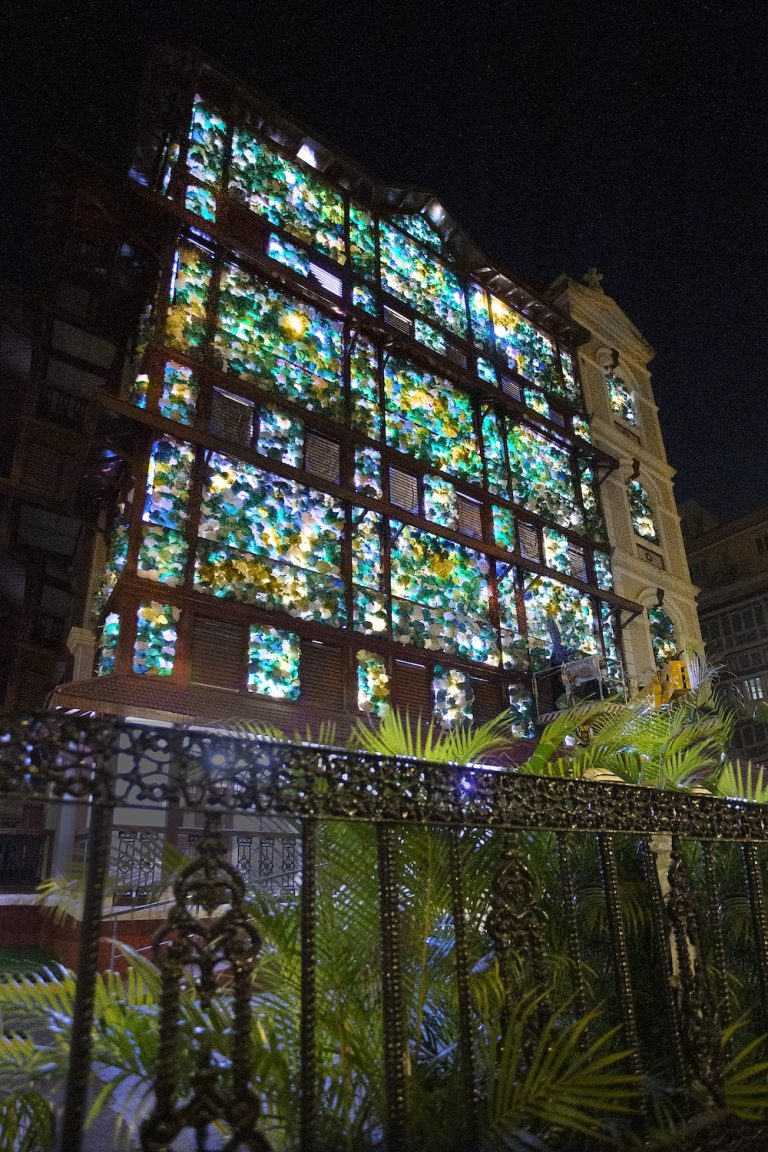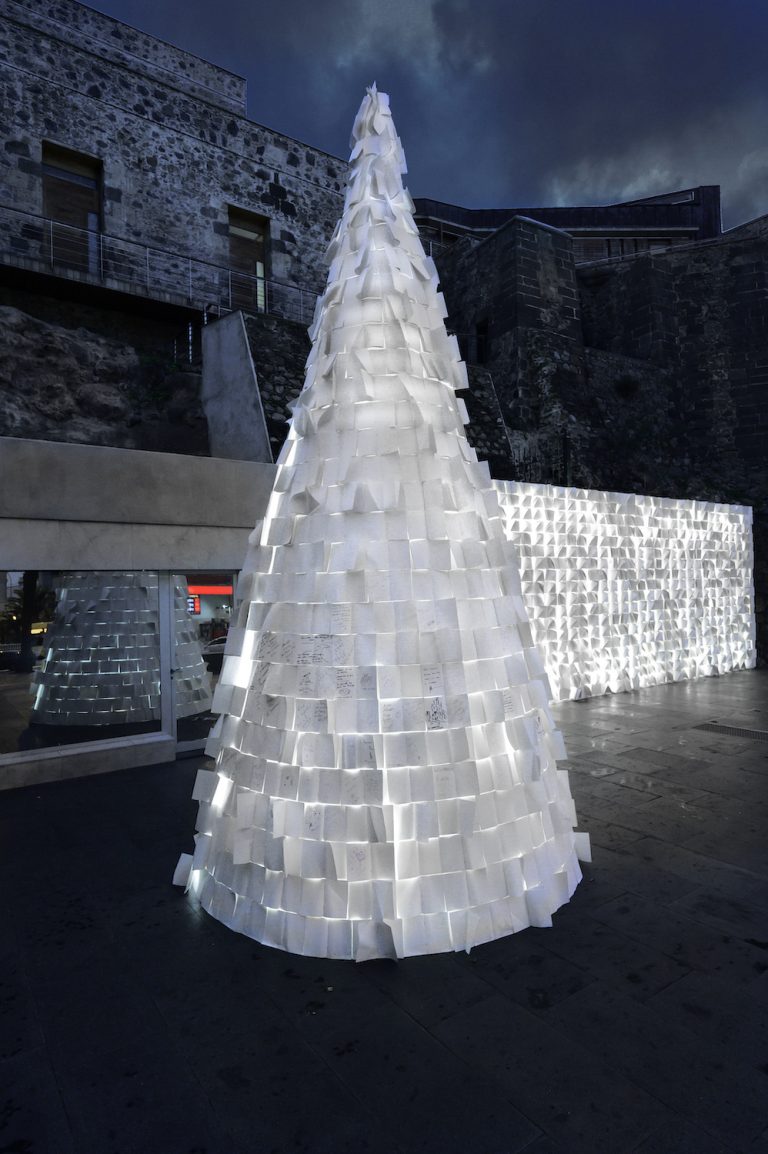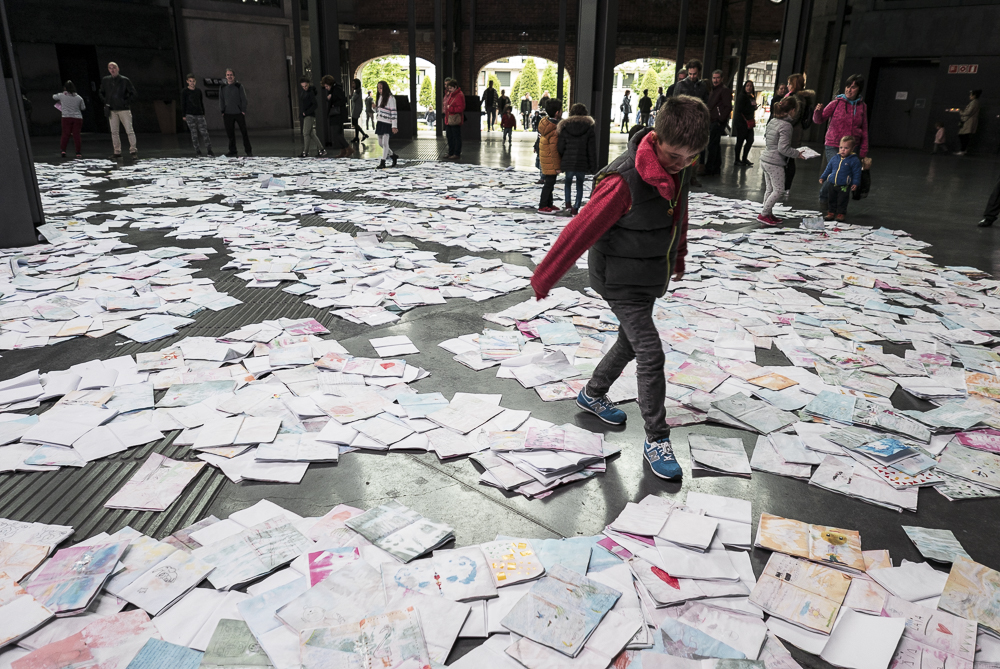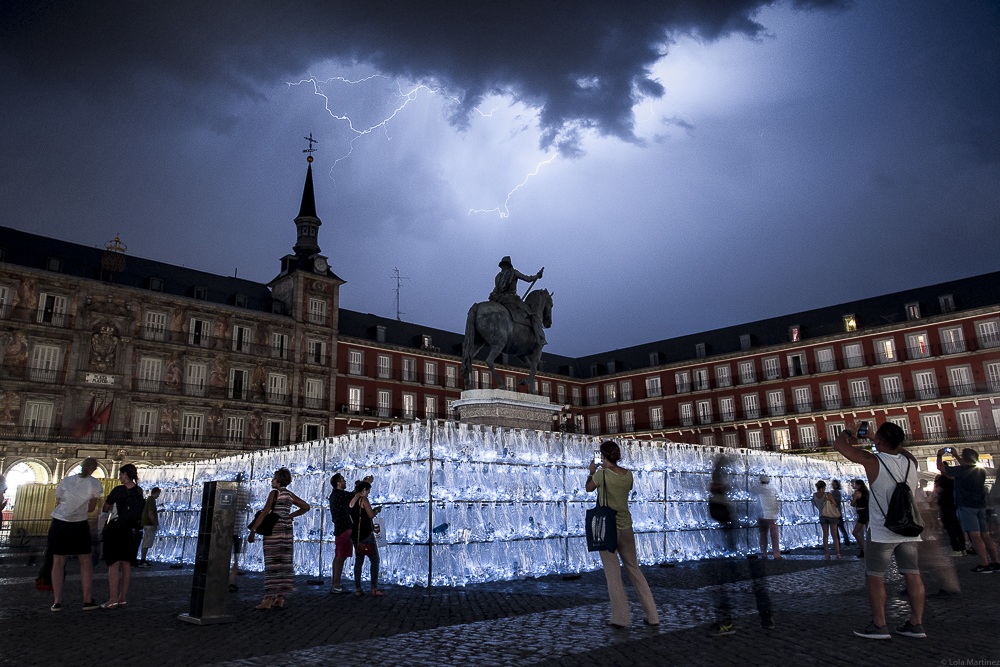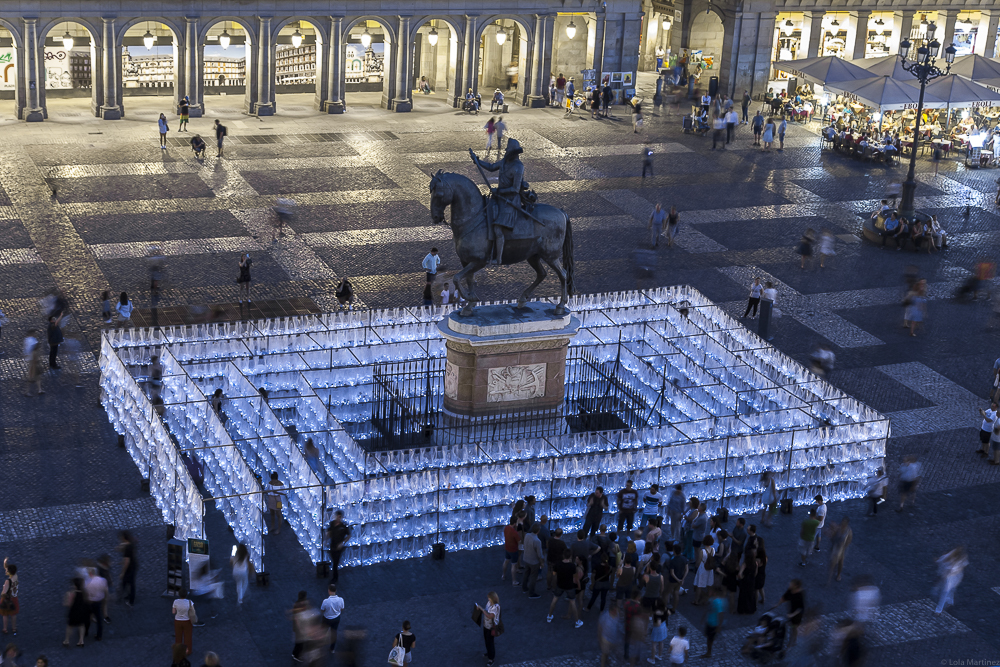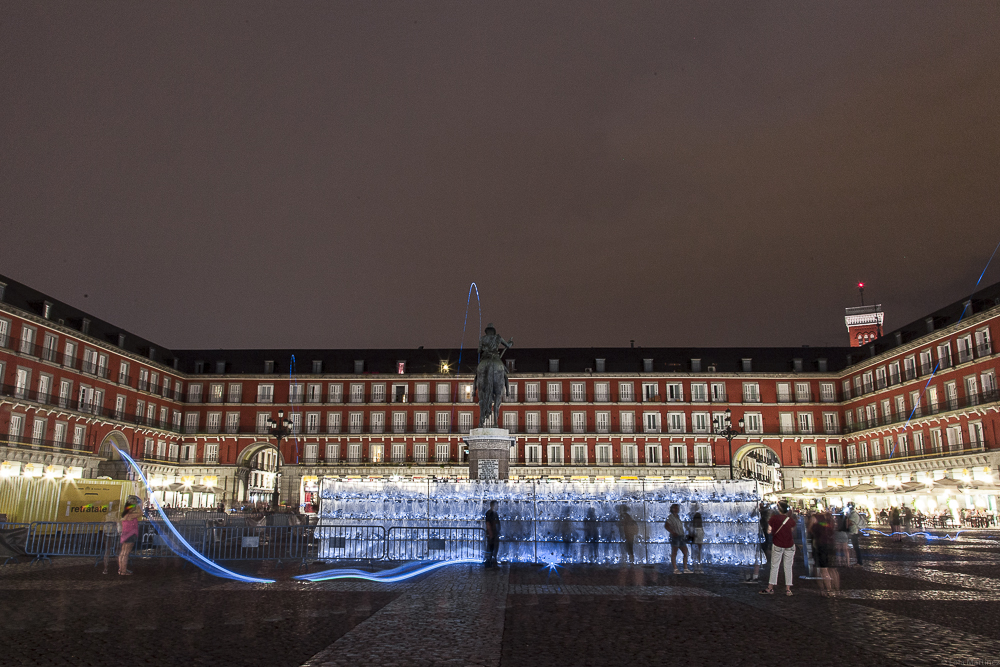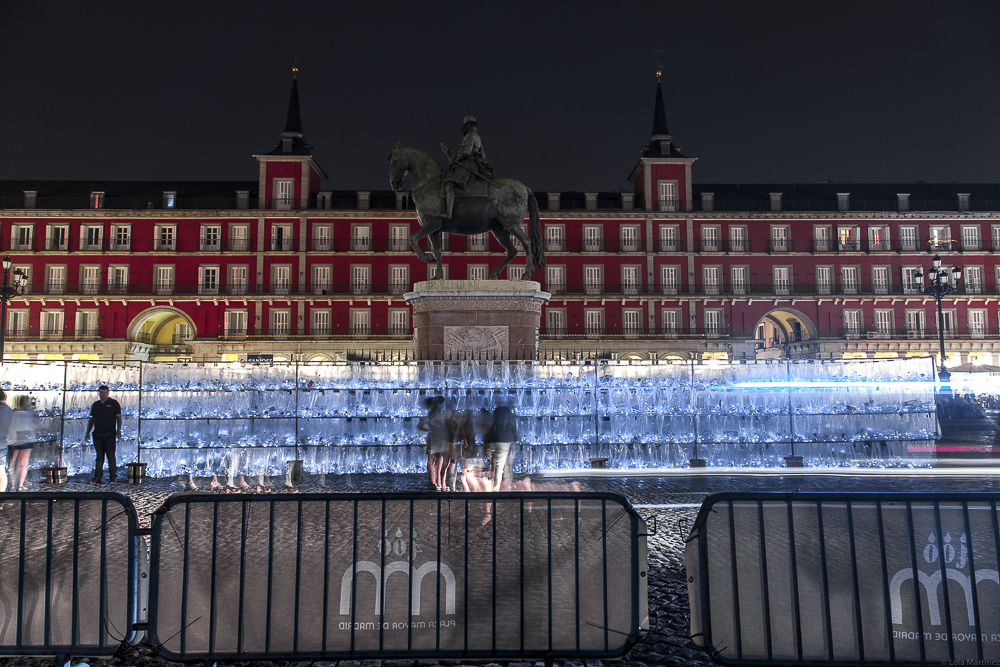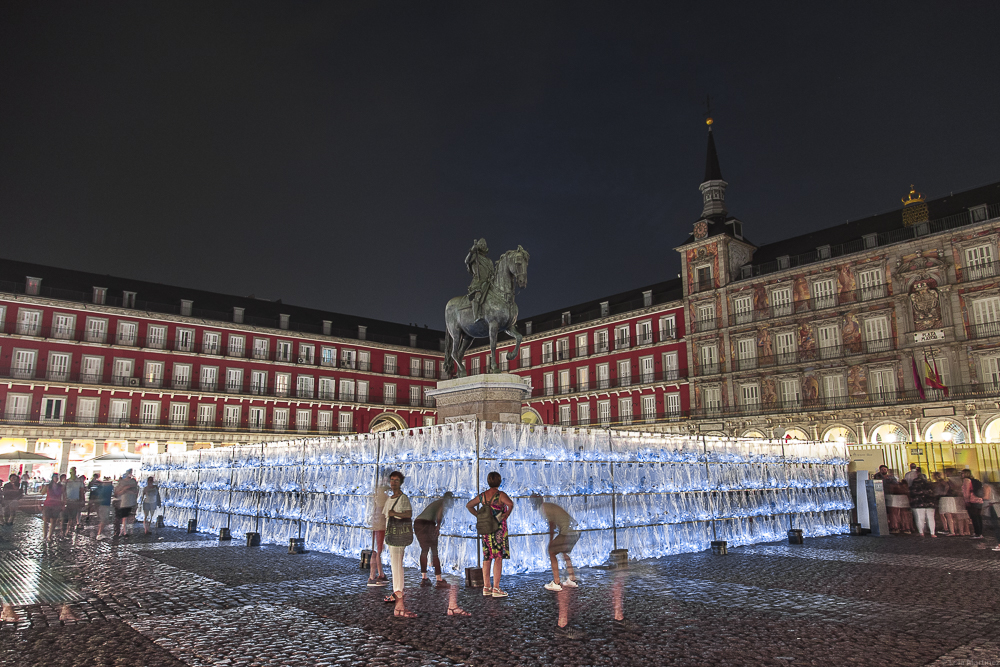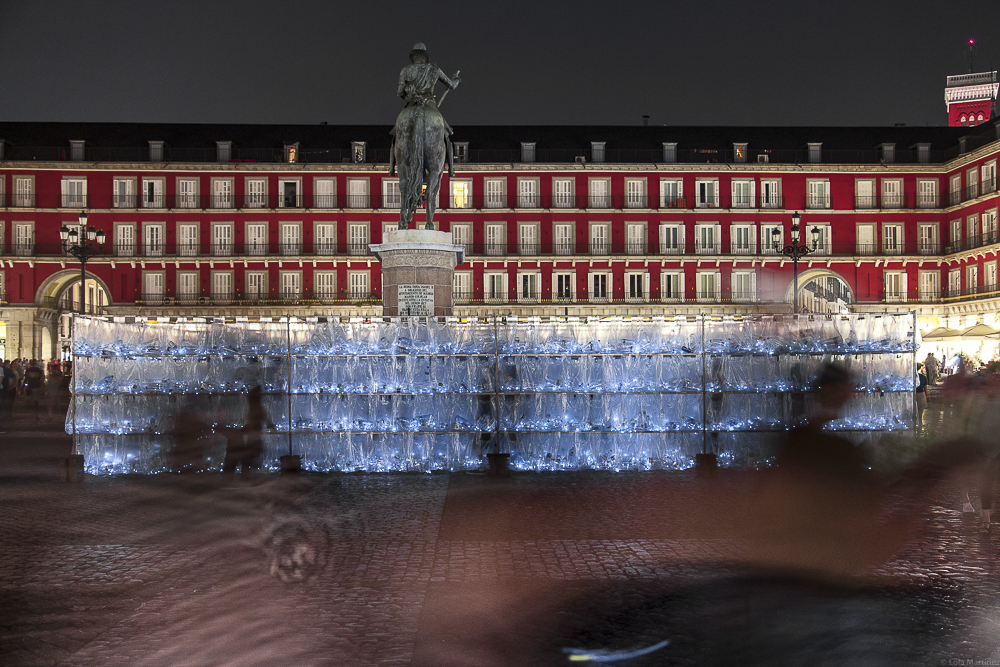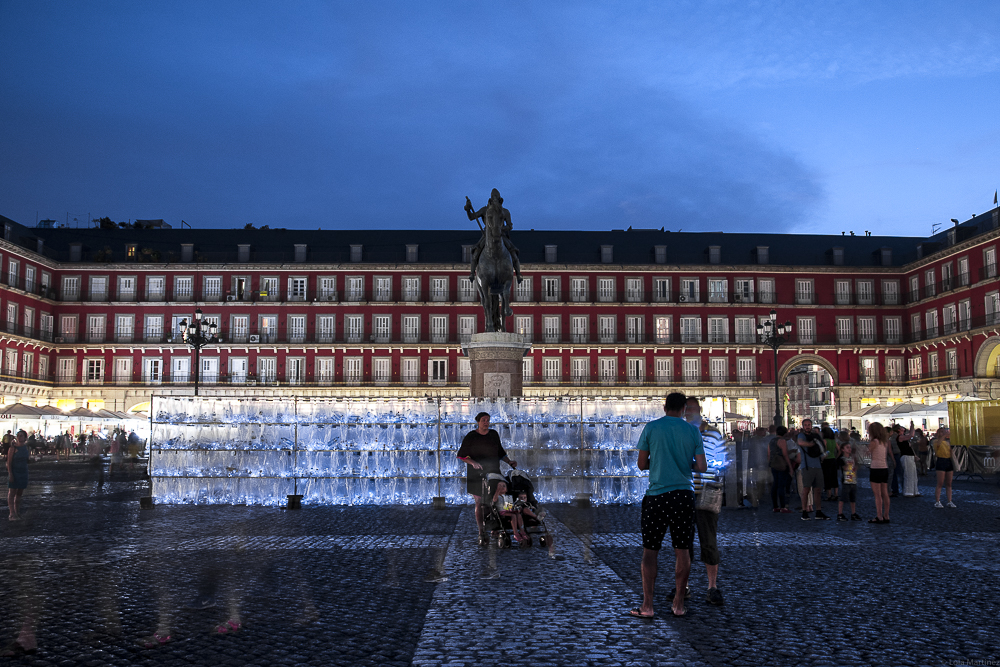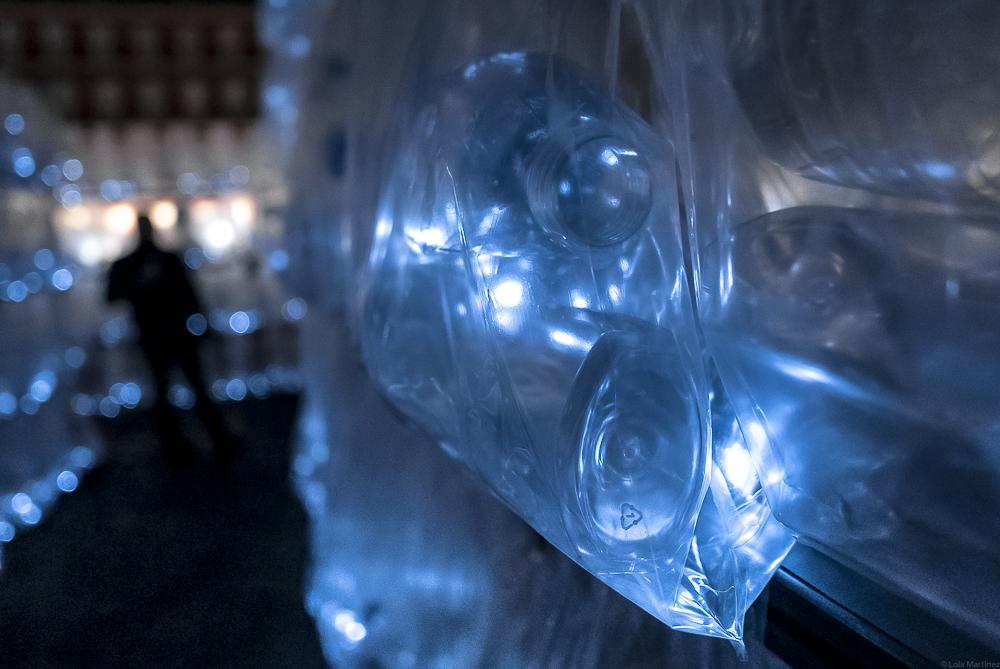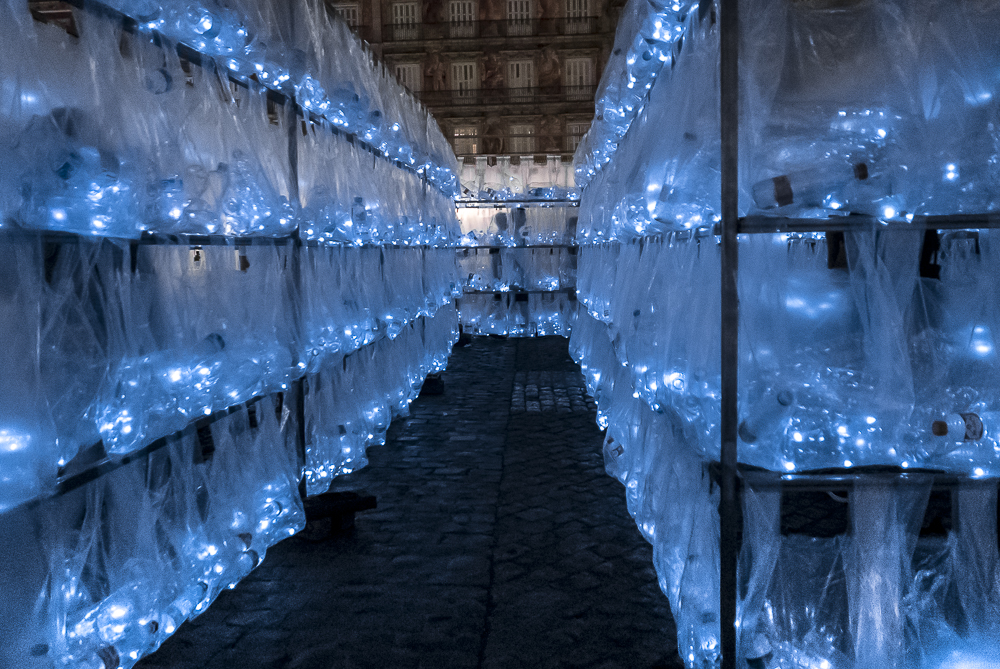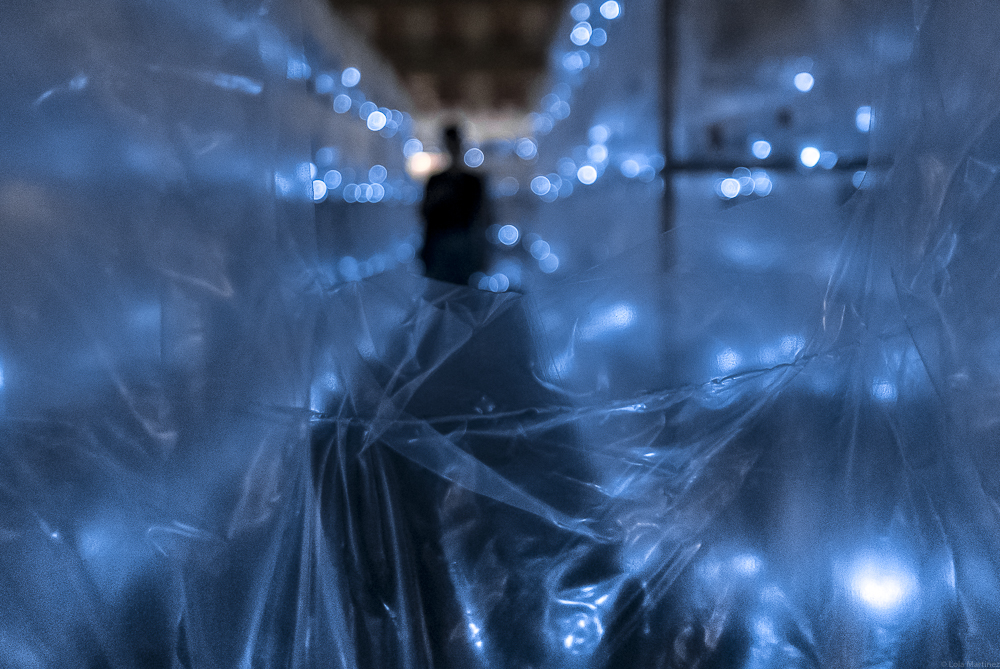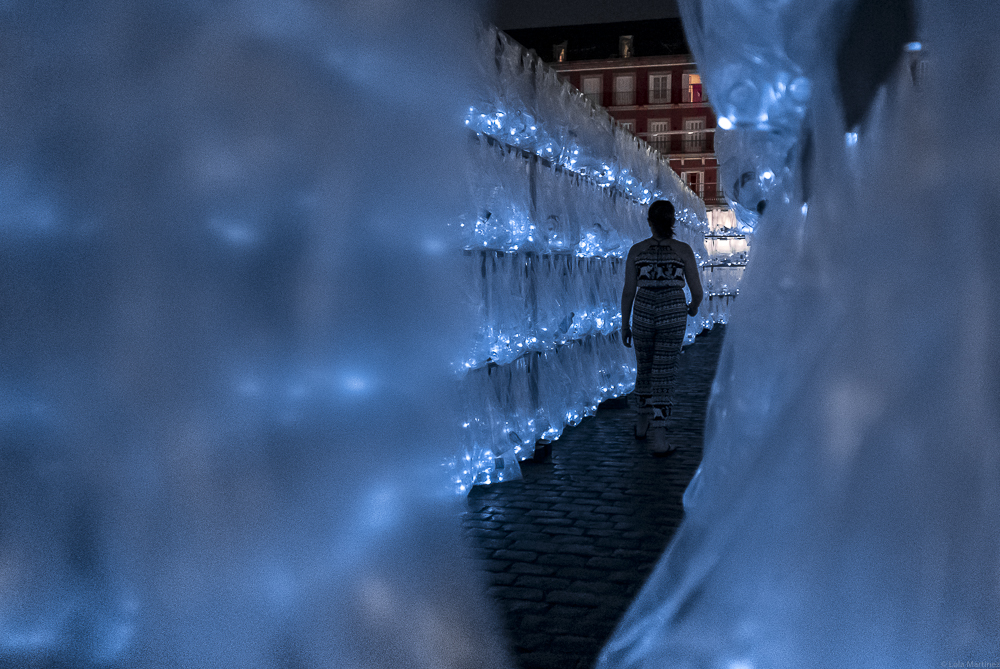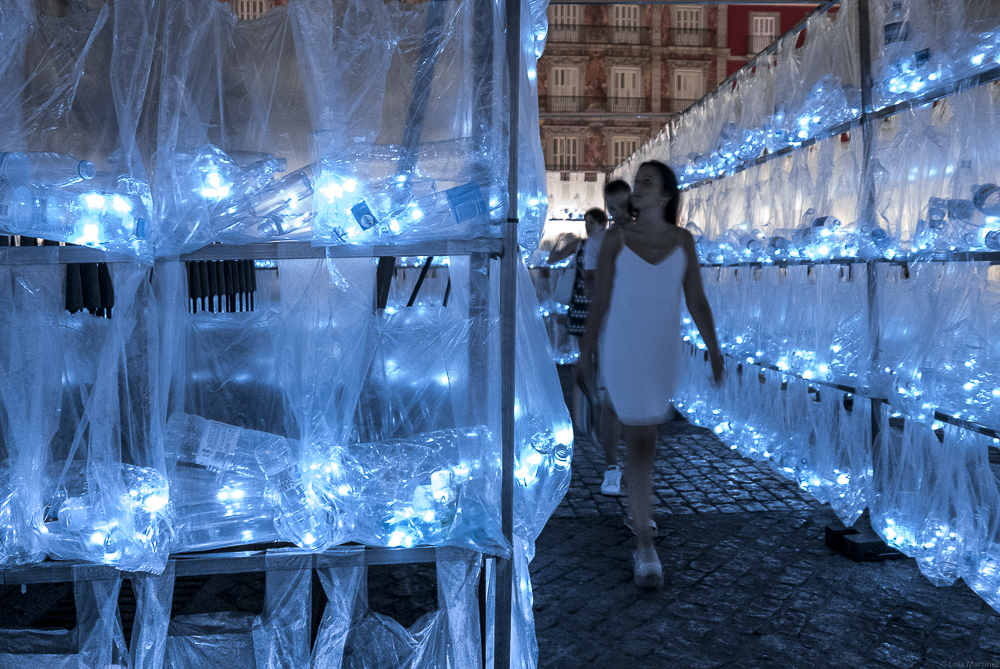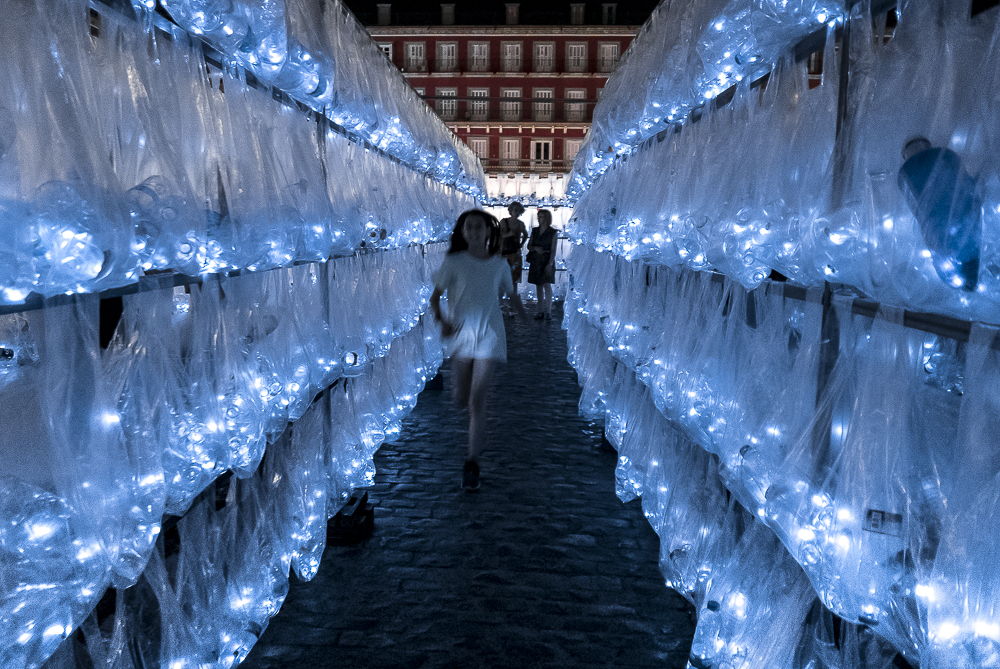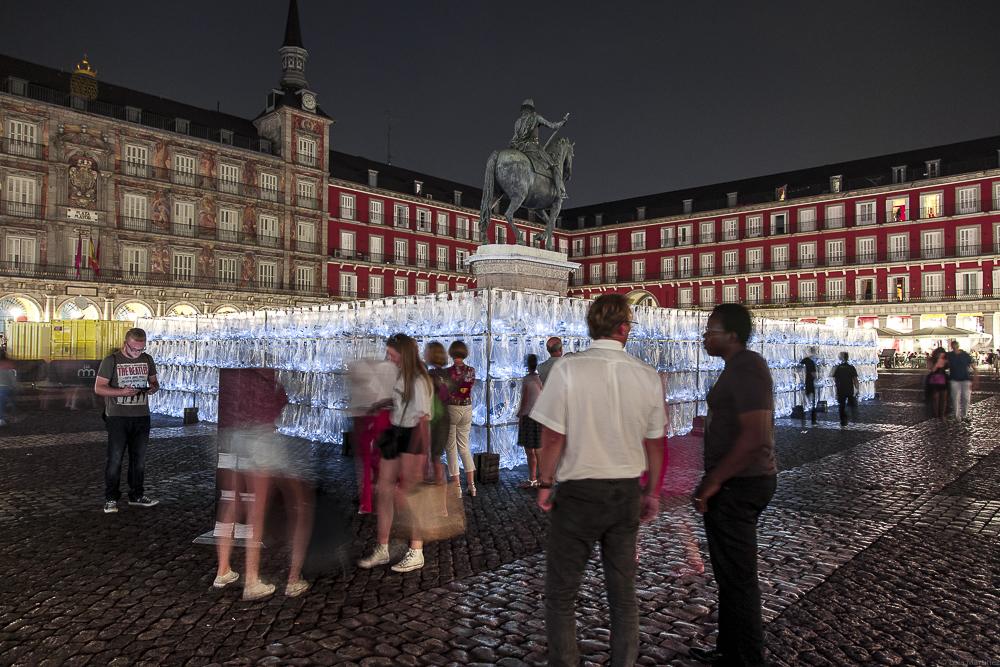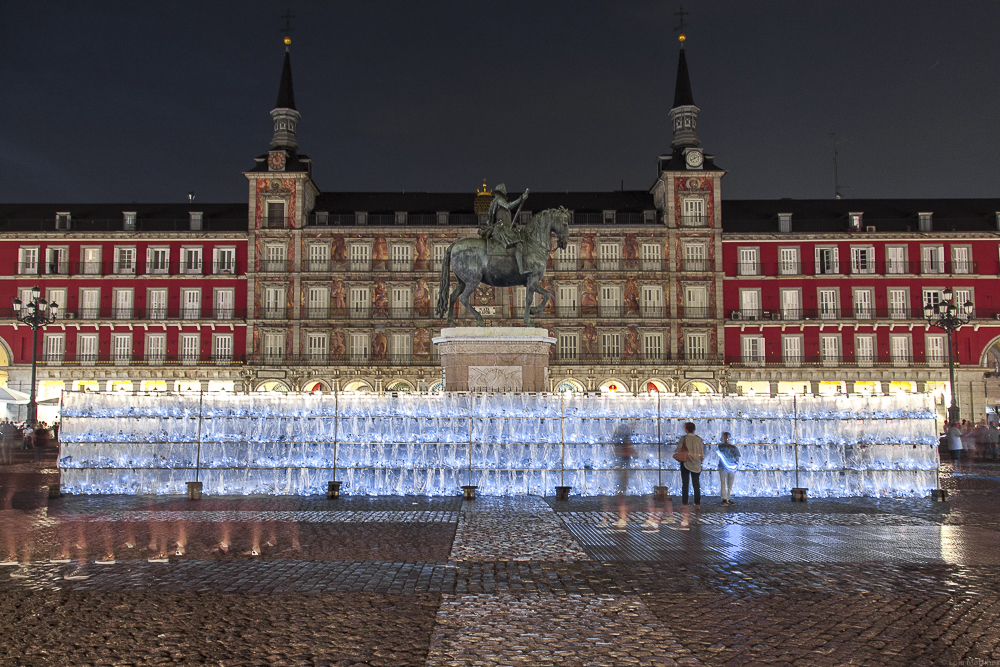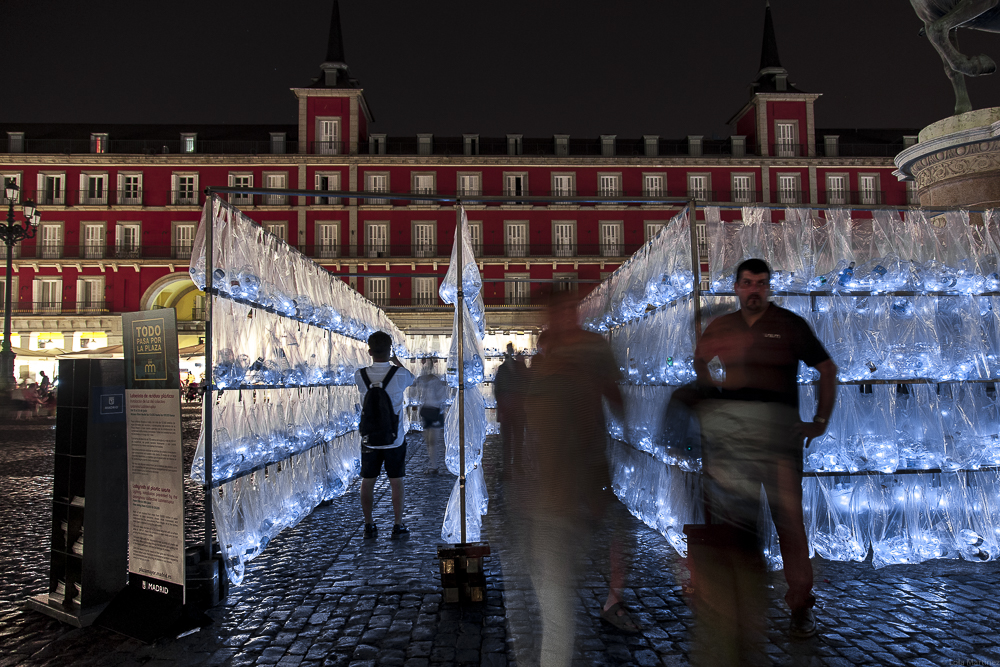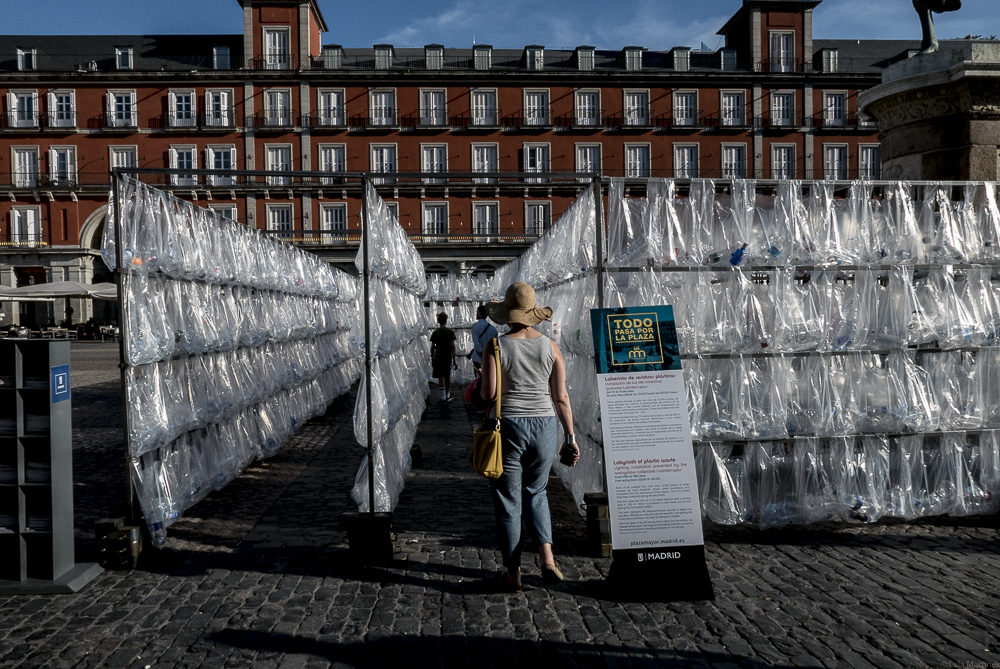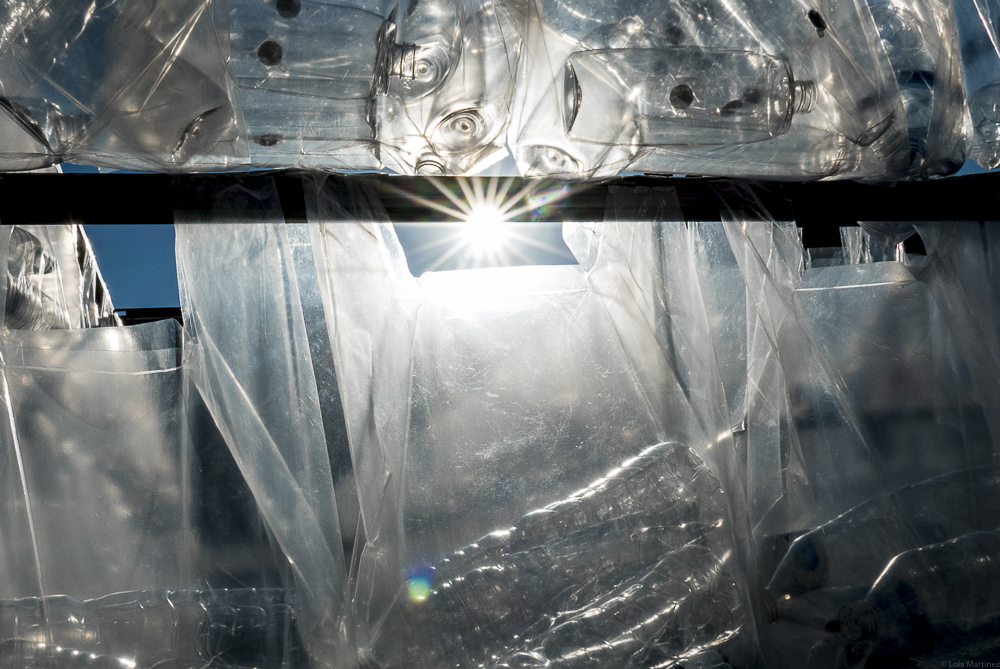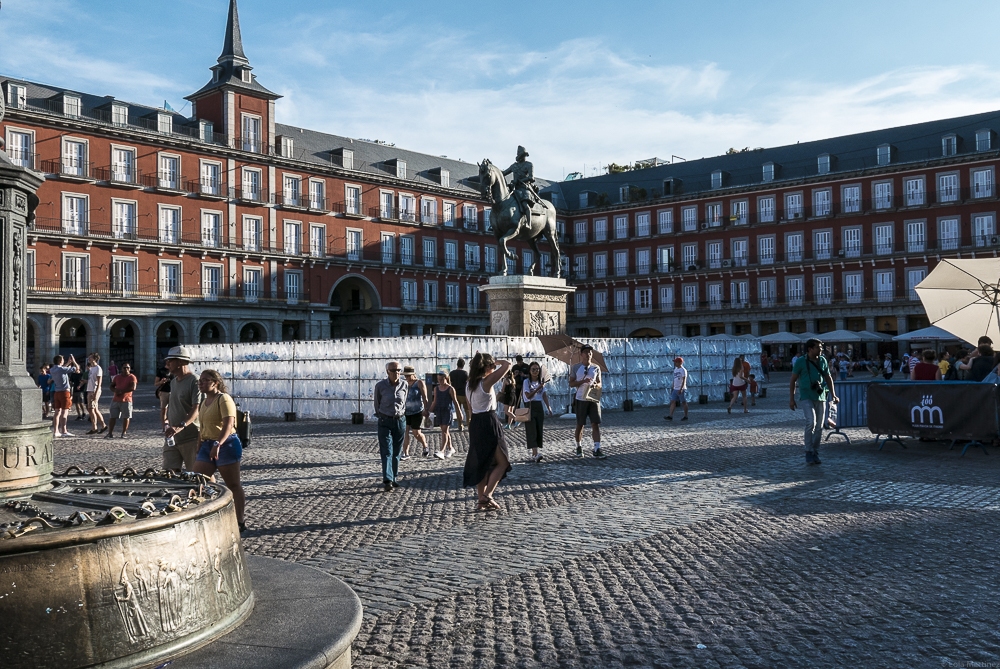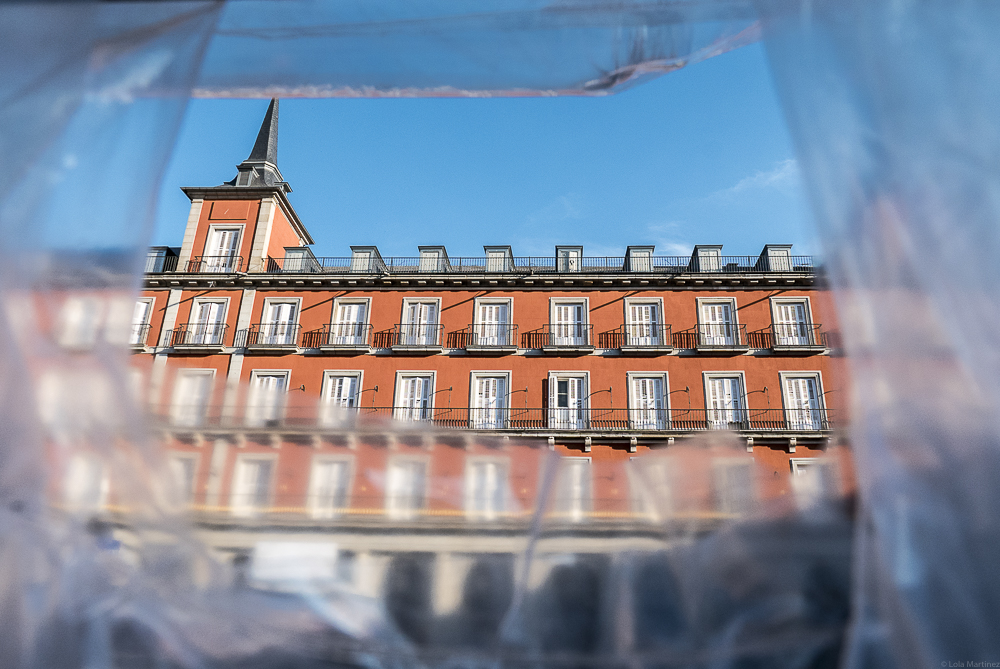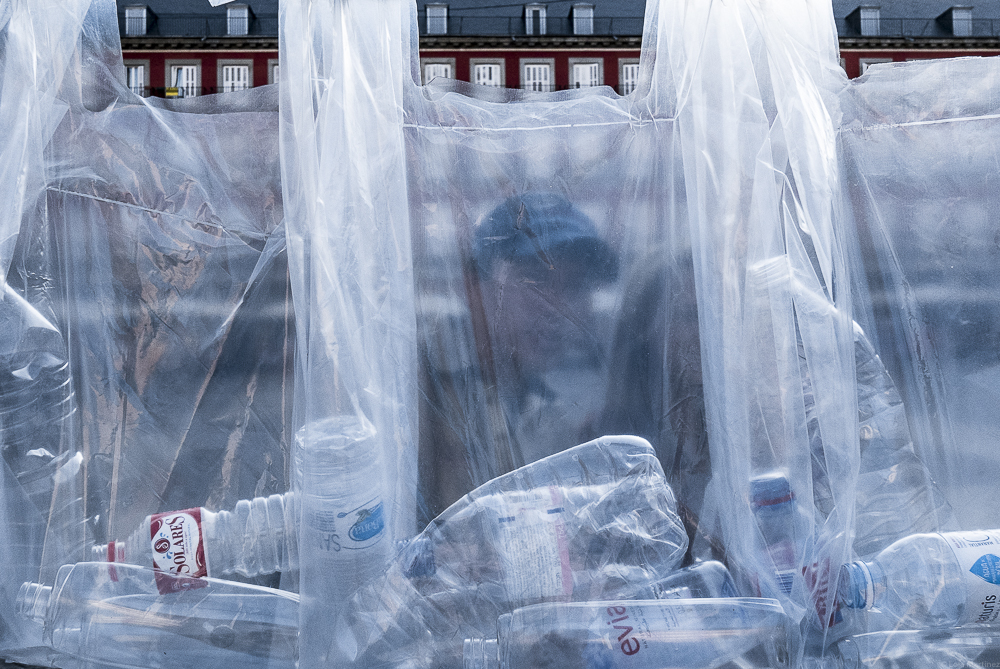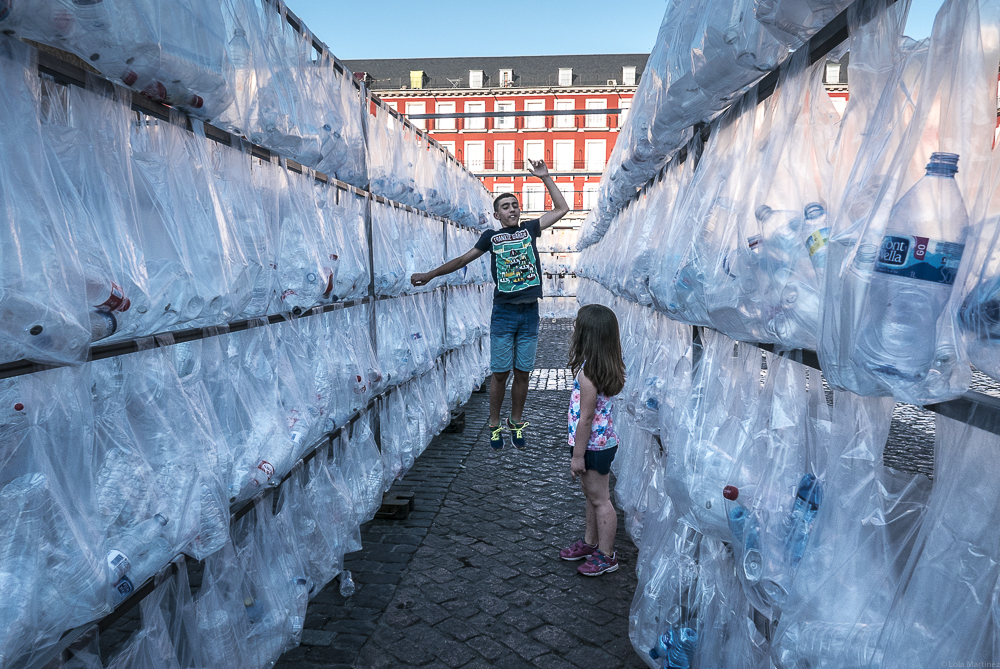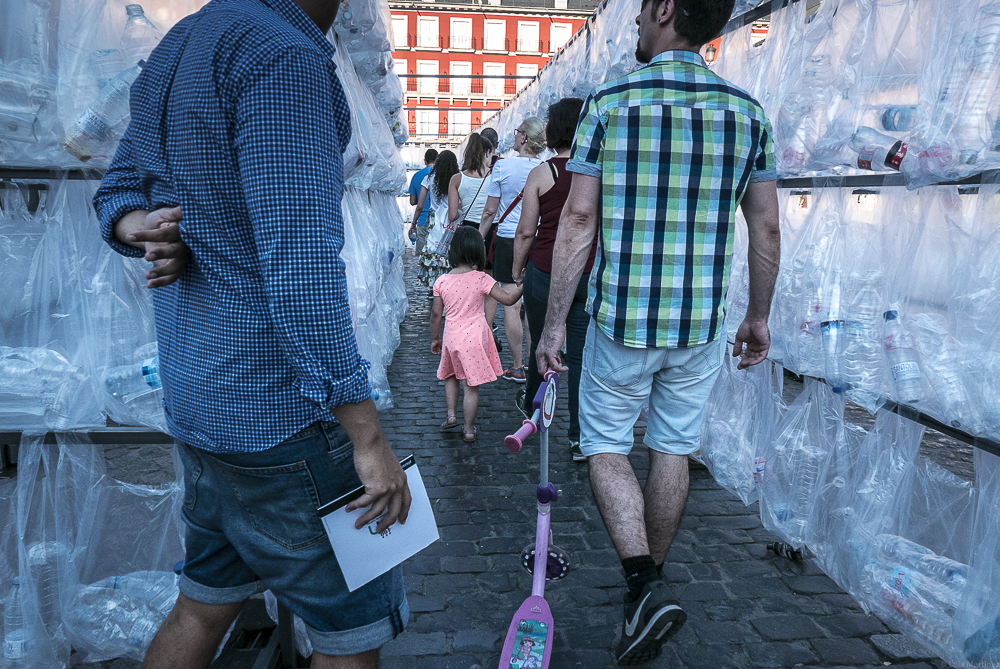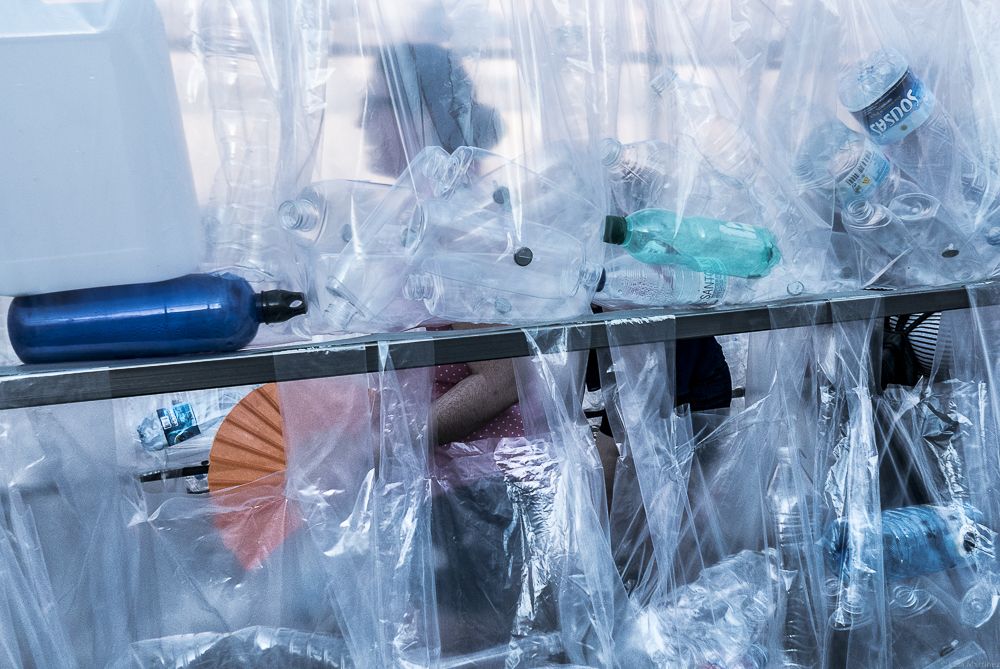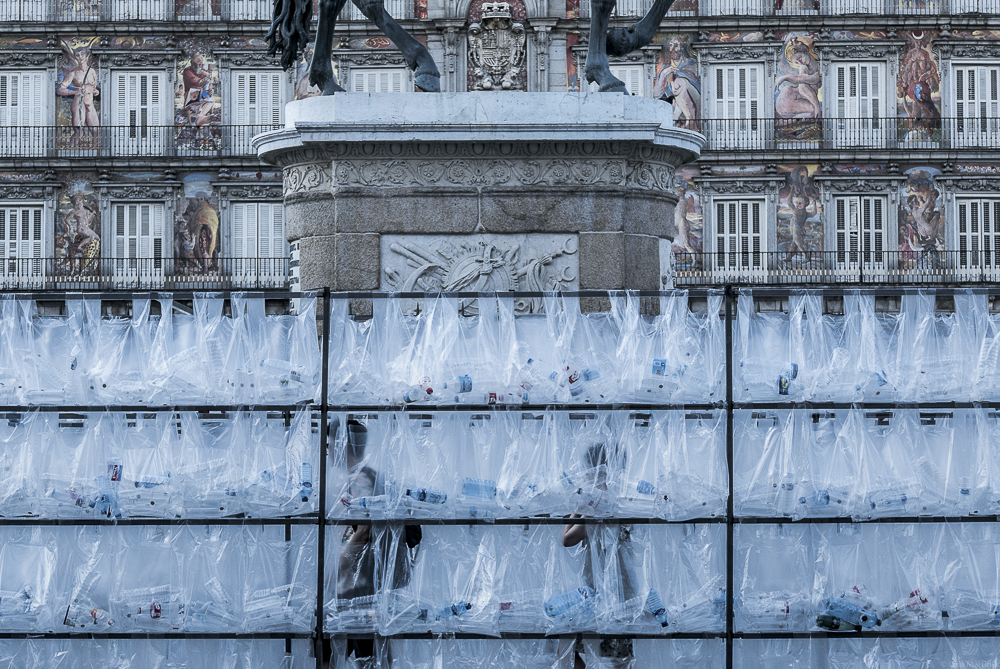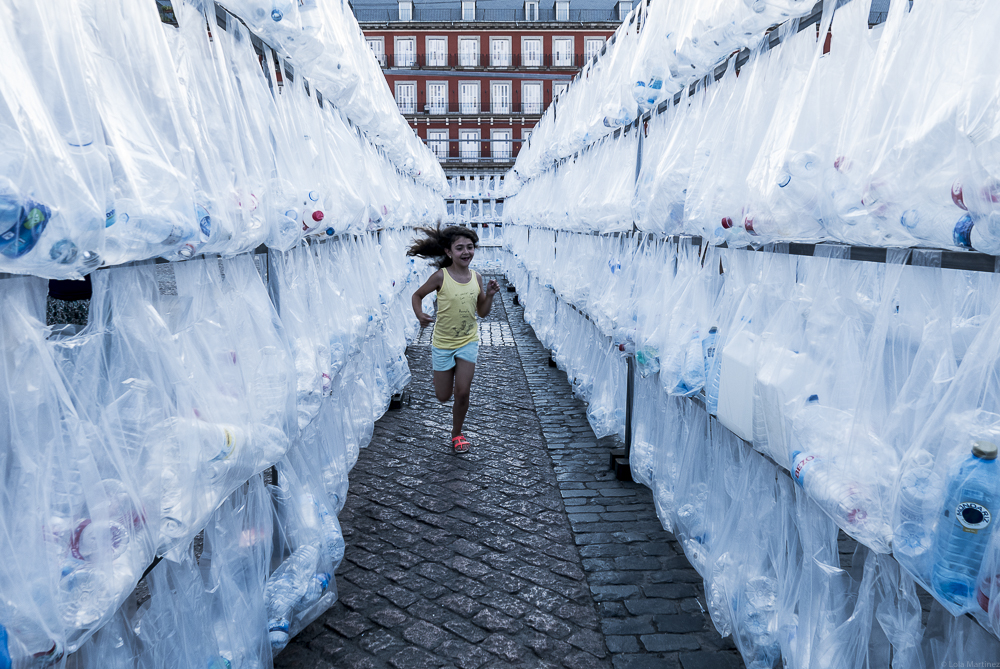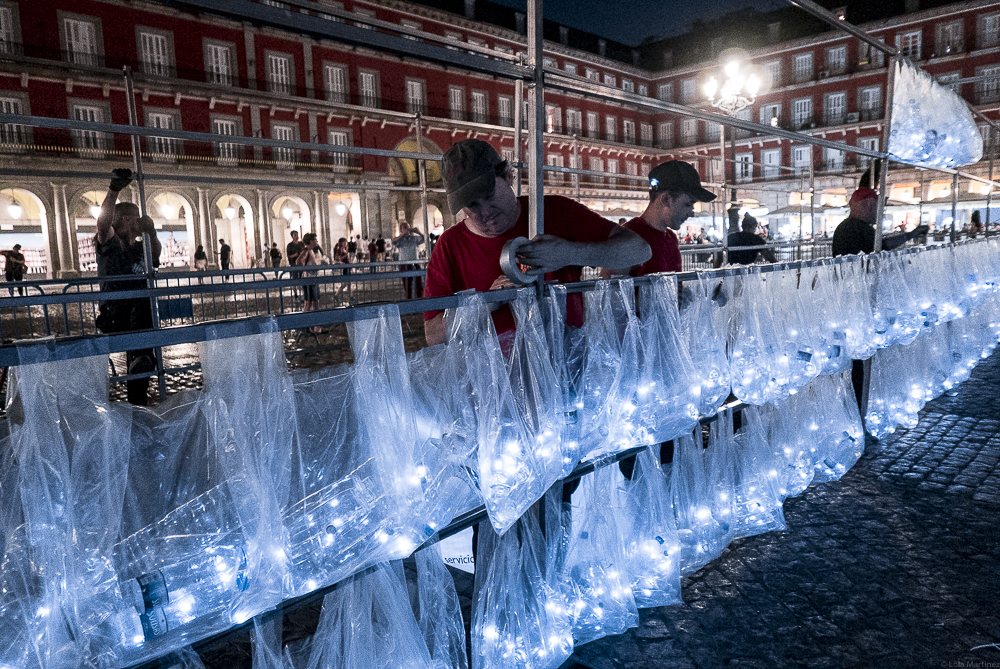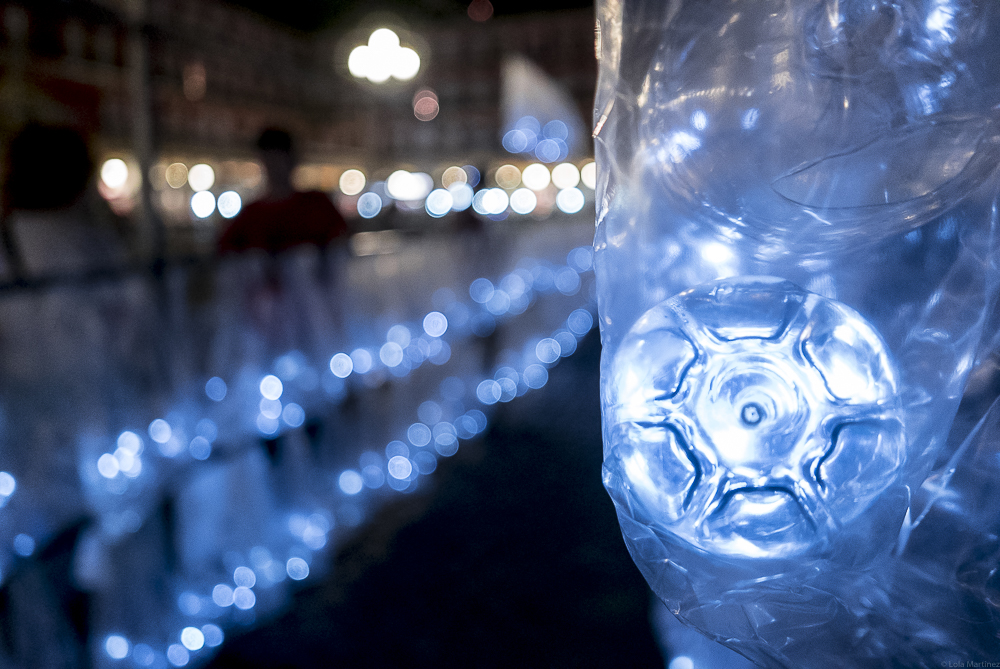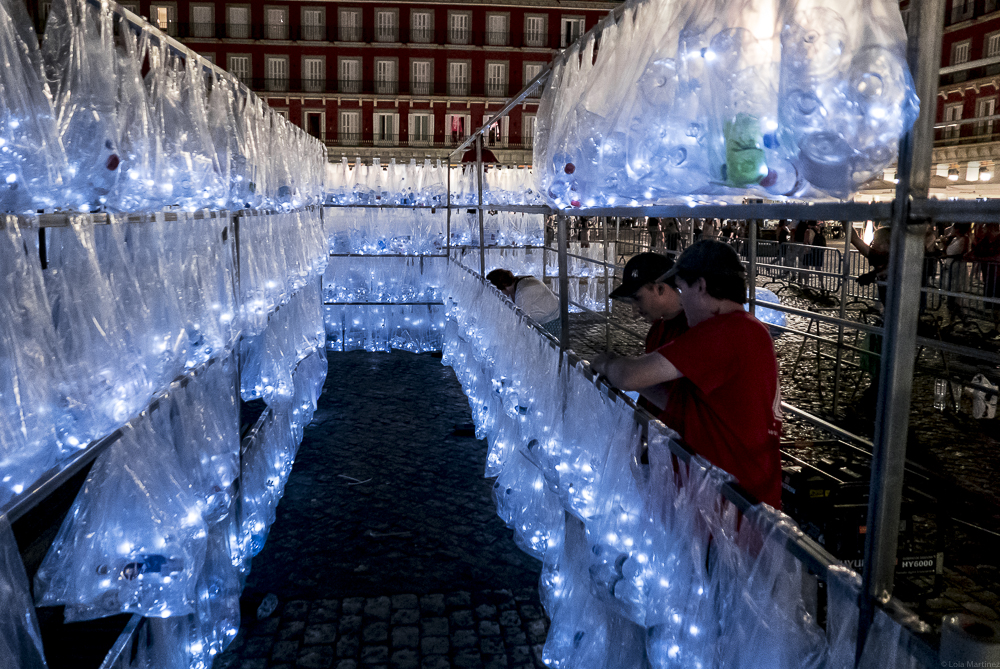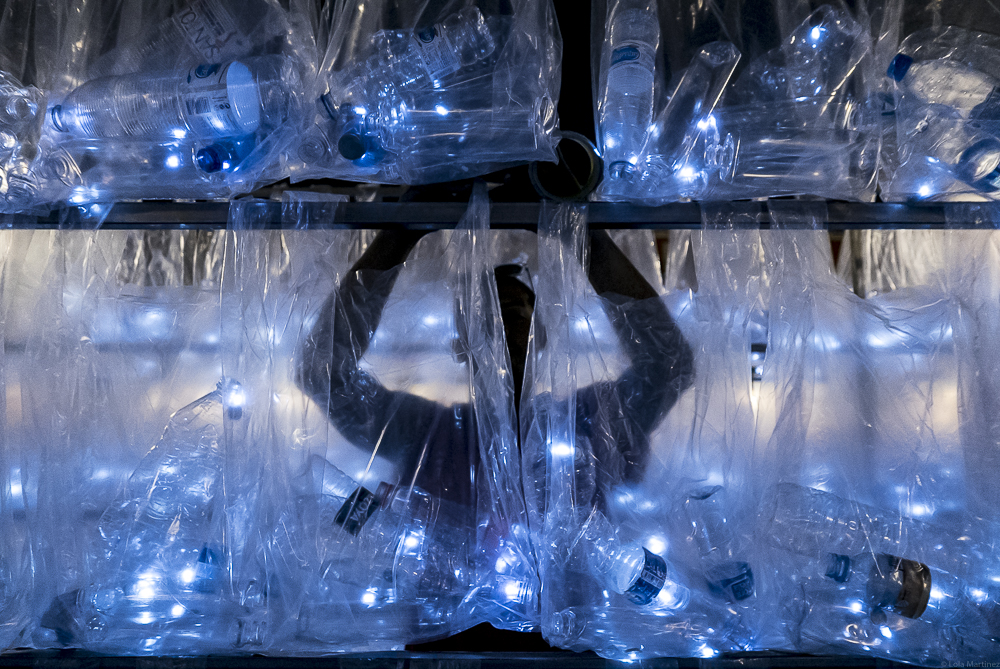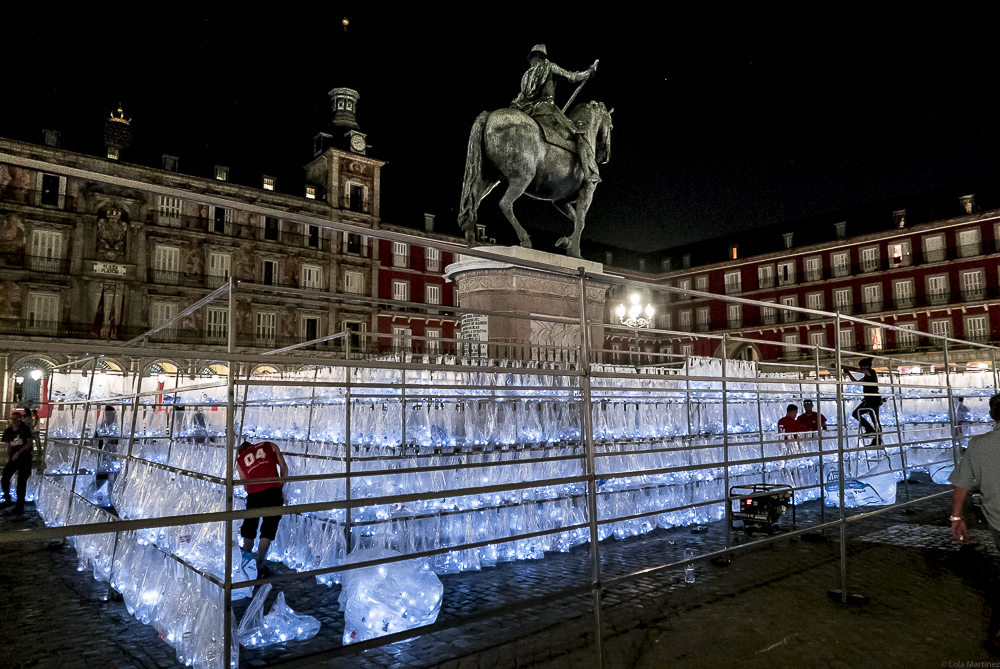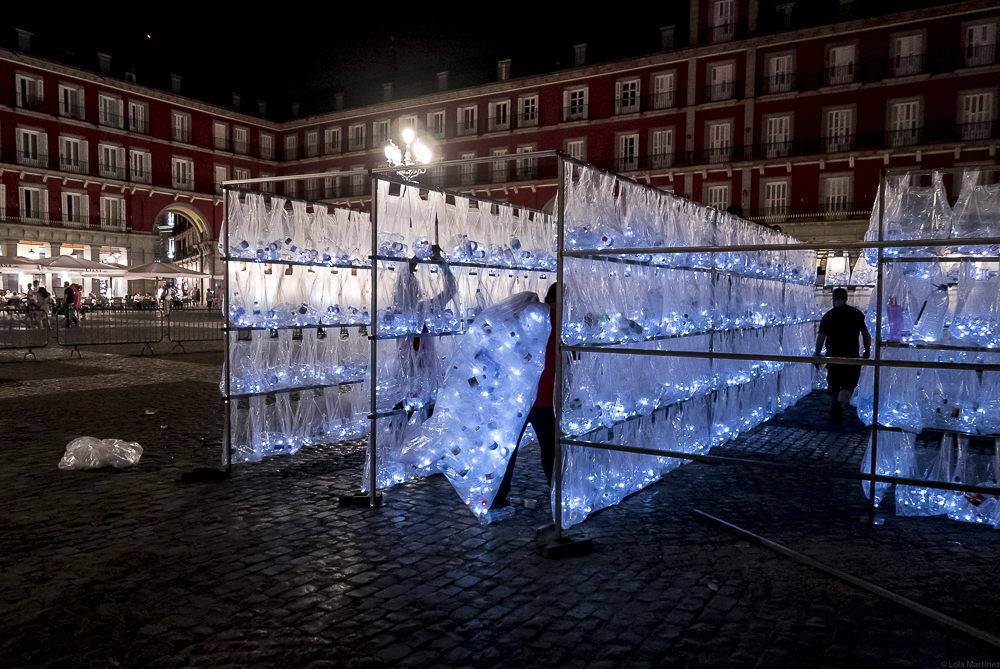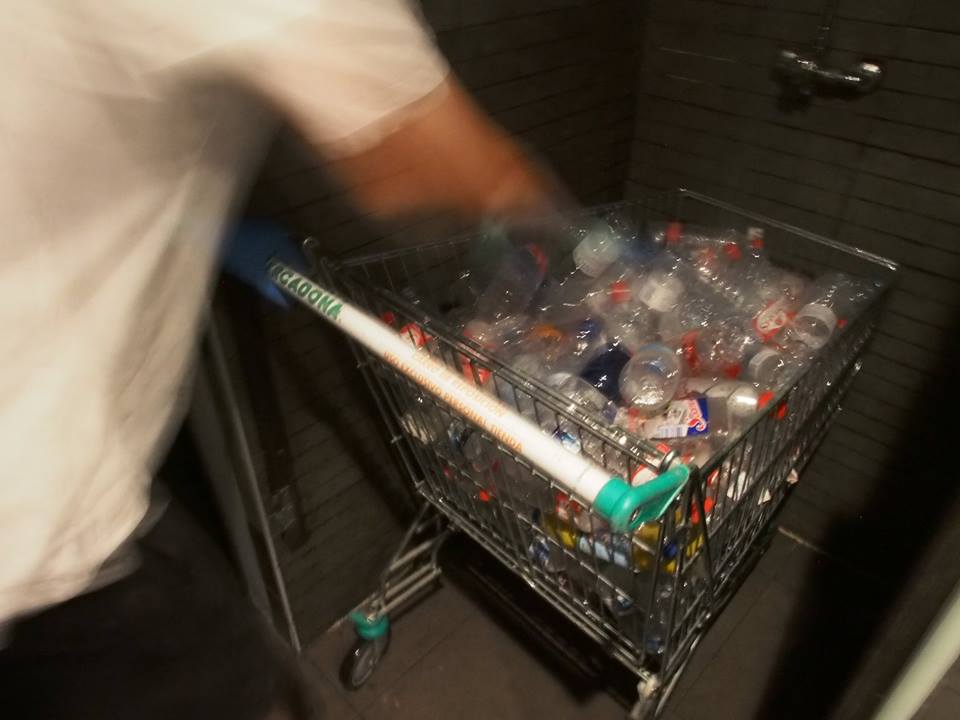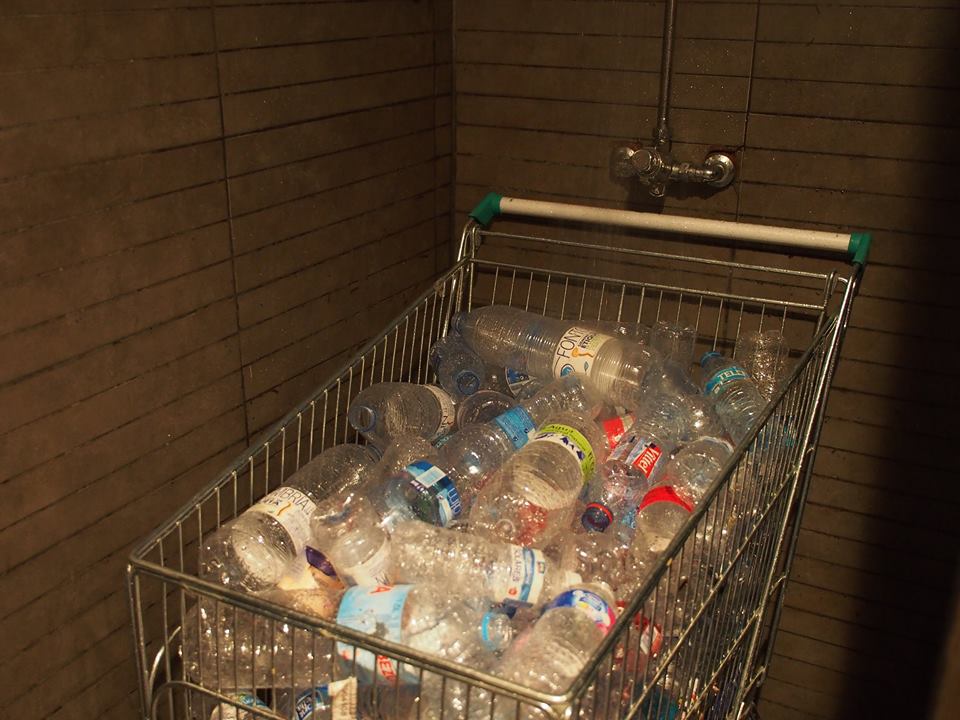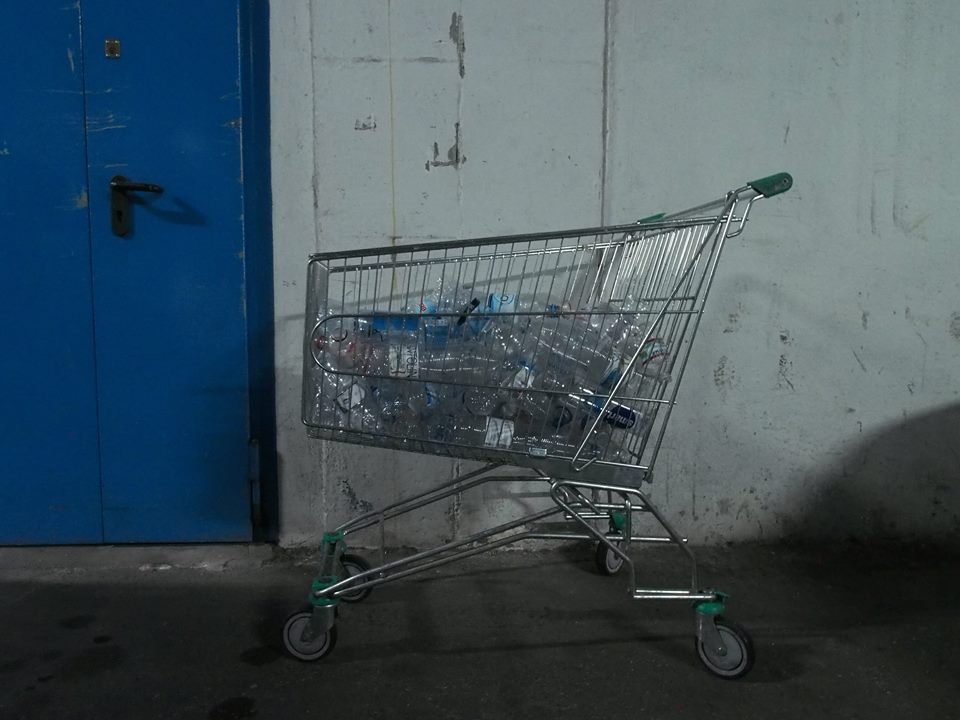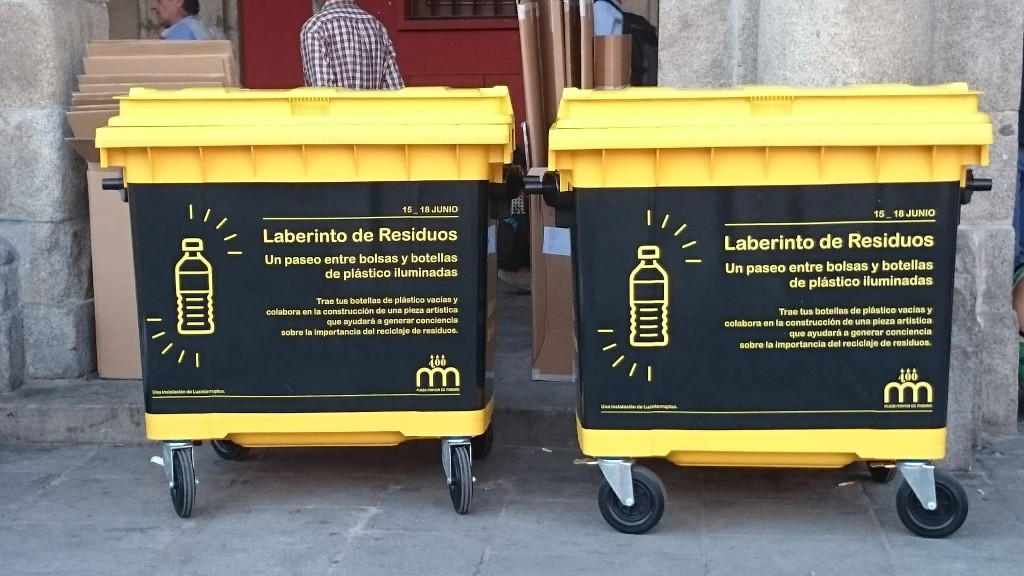Plastic Islands / Islas plásticas. Madrid 2017
Nothing better to top off the year than an installation that tries to dramatically visualize the excess of plastic in our lives.
We carried it out in Madrid invited by the Luna de Octubre festival held the night of October 21th at the fountains of Cibeles, Neptuno and Apolo, Madrid’s most emblematic fountains located over the Prado-Recoletos axis.
Plastic Islands is an adaptation of Plastic Island, a piece we had installed at Trafalgar Square for the Lumiere London 2016.
This time, the same goal: “To replicate, at a smaller scale, the so-called “eighth continent” made of plastic and garbage which is alarmingly taking over great areas of the Pacific. Governments remain passive before this situation either because they lack interest or because they are incapable to solve this problem. They are allowing this huge mass of about 4 million tons of more or less crushed plastic to shape about 22,200 kilometers (about 13,794 miles) of irregular surface which goes 30 meters (about 98 feet) deep under the water, and is destroying most of the marine wildlife in the area and transforming the ecosystem”.
We needed 60,000 recycled bottles in order to intervene the 3 fountains which we collected for 3 months after they were requested from companies, small businesses, recycling plants and official organisms that generously donated them to us.
We had to develop complicated logistics since the way recycling works in Madrid makes it impossible to salvage containers directly from the citizens’ trash and the dumps where it arrives compressed and destroyed. However, we finally managed to get the necessary material to collapse the three fountains on all their levels, covering the entire surface of water with a layer of bottles. Not a square inch was left uncovered.
We later illuminated the material and left it on display all night so people could stop to watch it and perhaps reflect on the massive usage of a material that is so dangerous and so hard to make disappear.
Intervening such iconic and popular fountains has been a great accomplishment since they had hitherto been enjoyed only at highly secured sporting events. Our goal, from the start, was to help people approach them without any sort of barriers in between. Unfortunately, those who enforce the law decided to fence the perimeter so no-one could get close to the edge. A pity.
We want to thank all the people who helped us build this: the team led by Montaña Pulido and Susana Sánchez, who coordinated the logistics, and Burna, who produced the piece; the organizers of Luna de Octubre who thought of us for this event and believed in our expertise despite the difficulty.
The companies and institutions that donated their bottles (*), of course, and the recycling plant of Ferrovial Servicios, Ecoembes and Valdemingómez, that conveniently pointed us in the direction of the treasures, and all the friends who saved the material of their own consumed products. Without them, this would have been mission impossible.
Also our friends from Workout who climbed with us into the garbage containers to salvage the bottles that were in good condition and later helped us fill the fountains.
These great pictures were taken by Lola Martínez.
P.S. We like working with recycled materials though we must admit that it is not easy, or even sustainable in most cases, many interests created around garbage that we are discovering as we work on larger pieces. We foresee a bright future for anyone who decides to manage garbage for art installations as there are many of us who are involved in this.
Time of installation: and installation:3 mouths.
Damages: none.
Exhibition time: 1 night.
——————————
Nada mejor para terminar el año que hacerlo con una instalación que trata de visualizar, de manera dramática, el exceso de plástico en nuestras vidas.
La llevamos a cabo en Madrid, por invitación del festival Luna de Octubre que se celebró la noche del 21 de octubre, en las fuentes de Cibeles, Neptuno y Apolo, las más emblemáticas de Madrid y que están situadas en el Eje Prado-Recoletos.
Islas Plásticas, es una adaptación de la pieza Isla Plástica que habíamos instalado en Trafalgar Square, para el festival Lumiere London 2016.
Esta vez, el mismo propósito: “Recrear, a pequeña escala, ese octavo continente de plástico y basura que va apoderándose alarmantemente de grandes extensiones del Pacífico, ante la distante mirada de los gobiernos que o bien por su falta de interés, o su incapacidad para resolverlo están dejando que una masa de unos 4 millones de toneladas de plástico mas o menos triturado, dé forma a unos 22.200 kilómetros de superficie irregular con una profundidad de treinta metros bajo el mar, que esta destruyendo gran parte de la fauna marina y mutando el ecosistema”.
Para intervenir las 3 fuentes necesitamos más de 60.000 botellas recicladas, que durante más de 3 meses fuimos recopilando, mediante un llamamiento a empresas, pequeños establecimientos, envasadoras, plantas de reciclaje y organismos oficiales que generosamente nos donaron su consumo.
Tuvimos que desarrollar una complicada logística, ya que la manera de reciclar en Madrid hace imposible recuperar envases directamente de la basura de los ciudadanos y de los vertederos, a los que ya llega compactada y destrozada. Pero finalmente logramos el material necesario para colapsar las tres fuentes en todos sus niveles, cubriendo la superficie total de agua con una capa de botellas, en la que no quedaba libre ni 1 cm2.
Después, iluminamos el material y lo dejamos expuesto durante la noche, para que la gente pudiera pararse a mirarlo y quizás a reflexionar sobre el uso masivo de un material tan peligroso y difícil de hacer desaparecer.
Ha sido un gran logro poder intervenir estas fuentes, tan icónicas y familiares para nosotros, y que hasta ahora sólo se habían podido disfrutar en eventos deportivos de alta seguridad. Nuestro propósito desde el principio fue conseguir que la gente se pudiera aproximar a ellas sin ningún tipo de barreras de por medio. Desgraciadamente, los que velan por nuestra seguridad decidieron en el último momento vallar el perímetro para que nadie se pudiera acercar al borde. Una pena.
Queremos dar las gracias a todas las personas que nos han ayudado a poner esto en pie, al equipo liderado por Montaña Pulido y Susana Sánchez, que coordinaron la logística, y a Burna que produjo la pieza, a la organización de Luna de Octubre que pensó en nosotros para el evento y confió en nuestro saber hacer, a pesar de la dificultad.
Por supuesto, a las empresas e instituciones que nos donaron sus botellas (*), a la planta recicladora de Ferrovial Servicios, a Ecoembes y Valdemingómez, que nos dirigieron convenientemente hacia donde estaban los tesoros, y a todos los amigos que nos fueron guardando el material de su propio consumo. Sin todos ellos, hubiera sido esta una misión imposible.
También a los amigos de Workout, que se metieron con nosotros en las basuras para recuperar las botella en buen estado y que luego nos ayudaron a llenar las fuentes.
Las estupendas fotos son de Lola Martínez.
PD. nos gusta trabajar con materiales reciclados, pero debemos admitir que no es fácil ni siquiera sostenible en la mayoría de los casos, muchos intereses creados en torno a la basura que vamos descubriendo a medida que trabajamos en piezas de más envergadura. Auguramos un brillante futuro a cualquiera que se dedique a gestionar basura para instalaciones artísticas, que ya somos multitud los que andamos metidos en ella.
Tiempo de montaje e instalación: 3 meses
Daños ocasionados: 0.
Permanencia de la intervención: 1 noche
(*) Han colaborado:
Ecoembes, Ferrovial Servicios, Calidad Pascual, La Tuna, AENA, Metros Ligeros de Madrid, Liga Nacional de Fútbol Profesional (LNFP), Real Madrid, Liga Nacional de Fútbol Sala (LNFS), La Solana Padel, Sanset Padel, Centro Penitenciario Madrid IV Navalcarnero, Hospital Gregorio Marañón, Basilio Rivera, Grupo TR2, Receco, Aparthotel G3 Galeón, Muuxubar, Mawersa, The Westin Palace Madrid, IES Lope de Vega, CEIP Isaac Peral, EEI El Carmen, EEI El Regajal, EEI El Sur, EEI La Cornisa, EEI El reino del revés, EIPR Alegre Koala y EIPR Isabel Zendal.
Enviado desde mi movil
